How to determine the right size of sailboat for your needs
Choosing the right size sailboat for your sailing adventure is crucial for your comfort, safety, and overall enjoyment. Our comprehensive guide explores the factors to consider when making this important decision.

How to Determine the Right Size of Sailboat for Your Needs
Embarking on a sailing adventure with your family is an exciting and life-changing decision. One of the most important aspects of this journey is choosing the right sailboat to suit your needs. The size of your sailboat will have a significant impact on your comfort, safety, and overall enjoyment of your new lifestyle. In this comprehensive guide, we will explore the factors to consider when determining the right size of sailboat for your needs, as well as provide some tips and advice to help you make the best decision for your family.
Table of Contents
Understanding sailboat sizes, sailing experience, intended use, number of crew members, comfort and amenities, storage and maintenance, small sailboats (20-30 feet), medium sailboats (30-40 feet), large sailboats (40-50 feet), extra-large sailboats (50+ feet).
Sailboats come in a wide range of sizes, typically measured in feet from bow to stern (the front to the back of the boat). The size of a sailboat can greatly influence its performance, handling, and the level of comfort it provides. Generally, larger sailboats offer more living space, storage, and amenities, while smaller sailboats are easier to handle, maintain, and store.
Factors to Consider When Choosing a Sailboat Size
When determining the right size of sailboat for your needs, there are several factors to consider. These include your budget, sailing experience, intended use, number of crew members, comfort and amenities, and storage and maintenance requirements.
Your budget will play a significant role in determining the size of the sailboat you can afford. Larger sailboats tend to be more expensive, both in terms of initial purchase price and ongoing costs such as maintenance, insurance, and mooring fees. It’s essential to consider not only the upfront cost of the boat but also the long-term expenses associated with owning and operating a sailboat of that size.
Your level of sailing experience will also influence the size of the sailboat that’s right for you. Smaller sailboats are generally easier to handle and maneuver, making them more suitable for beginners or those with limited sailing experience. Larger sailboats can be more challenging to sail and may require a higher level of skill and experience to operate safely and efficiently.
The intended use of your sailboat will also play a significant role in determining the right size for your needs. If you plan to use your sailboat primarily for day sailing or weekend trips, a smaller boat may be more suitable. However, if you intend to embark on long-term cruising or live aboard your sailboat full-time, a larger boat with more living space and amenities will likely be more appropriate.
The number of people who will regularly be on board your sailboat is another important factor to consider. A larger boat will provide more space and comfort for a larger crew, while a smaller boat may be more manageable for a solo sailor or a couple. It’s essential to strike a balance between having enough space for everyone on board while still maintaining a manageable size for sailing and handling.
The level of comfort and amenities you desire on your sailboat will also influence the size of the boat you choose. Larger sailboats typically offer more living space, private cabins, and additional amenities such as a larger galley (kitchen), separate shower and toilet facilities, and more storage space. Smaller sailboats may have more limited amenities and living space, which may be a trade-off you’re willing to make for easier handling and lower costs.
Finally, consider the storage and maintenance requirements of the sailboat size you’re considering. Larger sailboats will require more space for storage, both on land and in the water, and may have higher maintenance costs due to their size and complexity. Smaller sailboats are generally easier to store and maintain, which can be an important consideration if you have limited storage space or a tight budget.
Popular Sailboat Sizes and Their Advantages
Now that we’ve discussed the factors to consider when choosing a sailboat size, let’s explore some popular sailboat size categories and their advantages.
Small sailboats are ideal for those new to sailing or with limited experience. They are easier to handle, more affordable, and require less maintenance than larger boats. Small sailboats are perfect for day sailing, weekend trips, or coastal cruising. However, they may lack the space and amenities desired for long-term cruising or living aboard.
Advantages of small sailboats:
- Easier to handle and maneuver
- More affordable upfront and ongoing costs
- Lower maintenance requirements
- Suitable for day sailing, weekend trips, and coastal cruising
Medium-sized sailboats offer a balance between the ease of handling of smaller boats and the increased space and amenities of larger boats. They are suitable for more experienced sailors and can be used for extended cruising or living aboard. Medium sailboats provide more living space, storage, and amenities than small sailboats, making them a popular choice for families or those planning longer sailing adventures.
Advantages of medium sailboats:
- Good balance between handling and space/amenities
- Suitable for extended cruising or living aboard
- More living space, storage, and amenities than small sailboats
- Popular choice for families or those planning longer sailing adventures
Large sailboats offer even more space, comfort, and amenities, making them ideal for long-term cruising or living aboard. They are best suited for experienced sailors, as they can be more challenging to handle and maintain. Large sailboats provide ample living space, private cabins, and additional amenities such as a larger galley, separate shower and toilet facilities, and more storage space.
Advantages of large sailboats:
- Ample living space, comfort, and amenities
- Ideal for long-term cruising or living aboard
- Best suited for experienced sailors
- Larger galley, separate shower and toilet facilities, and more storage space
Extra-large sailboats are the ultimate in space, comfort, and amenities. They are best suited for experienced sailors with a larger budget, as they can be more challenging to handle and maintain, and have higher upfront and ongoing costs. Extra-large sailboats offer luxurious living spaces, multiple private cabins, and a wide range of amenities to make life aboard as comfortable as possible.
Advantages of extra-large sailboats:
- Ultimate in space, comfort, and amenities
- Luxurious living spaces and multiple private cabins
- Wide range of amenities for maximum comfort
- Best suited for experienced sailors with a larger budget
Determining the right size of sailboat for your needs is a crucial decision that will impact your sailing experience, comfort, and overall enjoyment of your new lifestyle. By considering factors such as your budget, sailing experience, intended use, number of crew members, comfort and amenities, and storage and maintenance requirements, you can make an informed decision about the best sailboat size for your needs. Whether you choose a small, medium, large, or extra-large sailboat, the most important thing is to find a boat that meets your unique needs and allows you to embark on the sailing adventure of your dreams.

What Size Sailboat Do I Need? Must-Read Before You Choose
Buying a sailboat is a huge investment and requires planning and forethought before you begin.
Knowing your needs and requirements before you start shopping is crucial to making the buying process easier.
That being said, knowing how big of a boat you need is the first step:
Here’s How to Choose What Size Sailboat you Need:
Consider your needs before buying your boat. If you are a solo sailor or have a huge family, if you cruise or race, or if you want to sail the ocean, your needs and size of the boat will change. Most sailboats range between 15-40 feet. Depending on your needs, you may need 15-25 or 25-40 feet.
Table of Contents

What is the Best-Sized Sailboat for a Family of 4?
You will not need as much room for a family of 4 that is racing and/or daysailing.
You won’t need the stowage for provisions or offshore equipment, and you expect to bump into one another now and then when tacking.
Keeping in mind that all boats are different and headrooms can differ even on boats of the same length, a good size would be 25-28 feet. If the kids are younger, a smaller boat is better, and if they are teens or pre-teens, a larger boat is preferable.
On longer trips, you need more space per person and storage. This is especially true if you are going to be liveaboards.
Liveaboard families will probably need a 36-42 foot range.
What is the Minimum Size Sailboat for Rough Weather?
Most modern sailboats are manufactured to handle rough weather for at least a reasonable amount of time.
Knowledge of construction and rigging and manufacturing standards are very high in the marine industry (liability has made this a certainty over the years).
With that being said, you’d still want to be in at least a 24-foot boat if you want to sustain storm conditions for a significant length of time. A rugged boat like the J/24, while designed as a one-design racer, can take a lot of pounding.
You would not necessarily want to cross the ocean in that size boat (though it can and has been done), but you can handle most of the rough weather you encounter along the coast.
What Size Sailboat Can you Live on Comfortably?
We need to consider whether you will be living by yourself on the boat or with your family and if you will be staying mostly at a marina or cruising offshore, living from port to port.
Personal preference for accommodations is important here, too. Some people are perfectly comfortable living in Spartan conditions, while others would find it difficult to live without the most modern amenities.
If you live by yourself on board, your options will be wider, as you will not need the room that a family will require. If this is the case, 30 feet is a pretty good choice to live in comfortably.
The Catalina 30, for example, was one of the most successful designs ever as a racer/cruiser and had plenty of space and storage and a comparatively roomy bathroom. The Cataline 30 can also go for extended cruises, so it is a good size for single-living whether you will be marina-based or going on long-distance cruises.
If a family is living aboard, you need a bigger boat.
Staying at a marina where you can spend time ashore is easier, so 36-38 feet can be a comfortable size, but this sized boat will probably become cramped if you live offshore or from point to point.
Offshore, 40-42 feet is a good size for a family of four. If your family is larger, you might have to find a 45-footer for everyone to live in comfort.
What is the Minimum Size Sailboat for Sailing the Ocean?
The record-sized boat to cross the Atlantic is just over five feet in length, but that was a feat of endurance and not a comfortable or safe crossing.
It is generally accepted that about a 30-footer is the minimum you’d want to take across the Atlantic or Pacific, even by experienced sailors.
This is for the combination of speed, stowage, durability, and safety.
What Size Sailboat to Sail the Caribbean?
If you are cruising through the Caribbean for a while, you want to be comfortable.
You will see all sizes of sailboats making their way between the islands, but not all of them are doing it comfortably or safely.
The most common sizes with these factors in mind are in the 30 to 35-foot range, both in monohulls and catamarans.
Many of these are charter boats, taken by people with little or no sailing experience, particularly the catamarans, so crossings between islands are usually done in calmer seas. Still, boats in this range will be able to handle any unexpected weather.
What Size Sailboat to Sail to the Bahamas?
If you are sailing to the Bahamas from Florida, the passage is not as long or difficult as going through the Caribbean and definitely not as bad as across the Atlantic.
If the trip is planned properly, you will not see any rough weather at all.
The crossing is routinely made by sailboats as small as 20 feet in length. Most sailors tend toward the 22- to 26-foot range in making the voyage safely and easily.
If you want to do it in comfort, you can’t go wrong with your 30-footer.
How Many Guests Will You Have?
Many sailors prefer to sail solo.
If you prefer solo sailing, you will probably not need as big a boat as you do not require the amount of space and storage you would with a crew on board.
This is not always true because you need a larger boat for durability and storage if you are doing distance solo sailing.
For most sailors, though, the company of their friends and family is a prime draw of being out on the water. If you intend to have more people with you, you will certainly need a larger boat.
The more people you intend to take with you regularly, the larger the boat will need to be.
Will You Be Doing Serious or Casual Sailing?
Depending on your level of seriousness, your choice of boat size will vary.
Smaller boats are easier to maintain, more fun to take out on weekends, and don’t have a lot of upkeep. However, bigger boats will end up costing you so much more, need a lot of attention, and will generally require a lot of experience.
Some of the highest costs here are sails. This is not just because of the sail area, but cloth weight and material, as well. So a new mainsail for a 30-foot boat will cost twice or more than one for a 20-foot boat.
Furthermore, marinas charge slip fees based on the boat’s length, or at least the size of the slip. The difference between the slip fees for a 25-foot boat and a 30-foot boat can be hundreds of dollars a year.
Also, larger boats always require more work. Because they are longer, they have more surface area that needs to be cleaned and repaired, more teak that needs to be treated, and more hardware that needs to be maintained and replaced.
A casual sailor is often less inclined to spend the time and money required to maintain a larger boat so that they will gravitate toward a smaller one.
The serious sailor understands the commitment in time and money, so they expect it. Because they are more dedicated to sailing, they usually will end up with a larger boat.
Will You be Racing, Cruising, or Both?
If you are primarily racing, you need to determine whether you will be doing one-design or handicap:
Handicap Racing:
In handicap racing, your boat will be assigned a rating based on its documented performance, and other boats will owe you time, or you will owe them time over the length of the racecourse, expressed in seconds per mile.
This is more about the performance of your crew and their experience as well. In this case, any size boat can compete, though fleets are usually broken up at certain ratings.
So a 22-foot boat will be in a different class than a 40-foot boat, and they will not be competing directly with each other unless the fleet is small and so they are all combined.
One-Design Racing:
In one-design racing, all boats are the same as one another, whether Lasers, J/24s, or Vipers.
If you want to go that route, your choice in size of a boat will be made for you.
If you intend to do both racing and cruising and do not go the one design route, you are free to choose the size of boat that you wish. You will probably opt for a little larger-sized boat, as you are a little more serious about your sailing.
There are many sailboats made with both racing and cruising in mind. This “hybrid design” started in the 1970s with the explosion of sailing’s popularity, and today most boats are made to accomplish both.
The exceptions to this are the pure racing boats, which are generally very uncomfortable to do any pleasure cruising in over any significant distance, anyway.
So, What Boat Size Works for You?
If you are doing casual solo sailing, you might look at dinghies around 15 feet.
A Sunfish-style boat is ideal, as it is easy to sail and get up to speed. Likewise, serious solo racers might look in the 15-foot range, such as Lasers or Moths. These are all trailerable.
If you want to stay in dinghies, there are many 2-person boats, often classic classes like Hamptons or popular boats like the Hobie 16 catamarans. There are many larger dinghies around, such as the Thistle, which has active racing classes and requires a crew of 3.
If you are a casual solo cruiser, you might look in the 19 to 23-foot range. At this size, a sailboat is still relatively easy to handle. There are a variety of small daysailers made with this in mind.
Serious solo cruisers will look for larger boats, as they will frequently be sailing, and frequently it will be distance cruising. Longer boats will have better speed and more room, and these sailors will handle the larger size.
25 to 30 feet is a good size for these sailors, but it is not rare to see an experienced solo sailor taking a 35 or 40-footer across an ocean.
If you are taking out a crew of 4 people regularly, you will be looking in the 25 to 30-foot range as a cruiser, whether serious or casual, with serious being at the longer end. If you anticipate 6 to 8 people regularly, 35 or 40 or more feet will be more comfortable.
Serious and casual racers will be found in almost any size boat from 20 to 45 feet. One design will determine the exact boat if you go that route, but otherwise, there are few limits outside of price.
The determining factors here will probably be the number of crew you can count on and the fleet you wish to compete in.
Casual racers will probably opt for smaller boats here, as it is less expensive and easier to compete short-handed if all of the crew cannot make the race. Serious racers will opt toward the larger boat here, as they are more competitive, and the best competition is usually at the upper end of the fleet.
Final Thoughts
We’ve looked at the major considerations for choosing the best size sailboat for you and/or your family and looked at what size is best for certain voyages.
Price is something we did not examine closely, except in the context of being a serious or casual sailor, but that will have to fall where it may.
The bigger boat will cost you more. If not in the initial purchase, then it will cost more in the maintenance.
The bottom line is what you want to accomplish in your sailing and how many people in your crew.
References:
The Six Types of Daysailers
Ten Best Sailboats To Live In
Click to share...
Yachting World
- Digital Edition

Best family yacht: our pick of the best yachts for sailing with the family
- Toby Hodges
- March 7, 2024
Toby Hodges takes a look at all the nominees and the winner of the best family yacht category in the European Yacht of the Year Awards
There are many categories in the European Yacht of the Year awards, from the best luxury yachts to performance yachts . But some of the most hotly-anticipated options come when it is time to choose the nominees and winner in the best family yacht category.
The European Yacht of the Year awards are selected by a broad panel of expert judges from across the globe. These are people who spend their professional lives sailing and comparing yachts, so you can be certain that the yachts which stand out in this field are truly the best of the best on the market for those looking to set out with the whole family in tow.
A crop of the latest 35-45ft mainstream production yachts, including the ultra spacious Dufour 41 and the smaller sister to the award-winning Hanse 460, plus a couple of less well known yachts, made for a dynamic grouping this year when it comes to picking the best family yachts 2024.
In this, the most competitive size bracket for volume production yachts, there was plenty to like, but two models stood out: the RM and the Bavaria. The former because it’s different and fills an interesting niche that crosses fast cruising with family sailing, from coastal and shoal draught to bluewater sailing ability; the Bavaria because it masters that mix of deck and interior space, performance and handling in a well finished package.
Winner of the best family yacht 2024 – Bavaria C46
The Bavaria and Cossutti Yacht Design relationship continues to flourish and produce standout results in its second generation. The C46’s modern, full shape brings vast deck and accommodation space yet manages to do so on a hull which really performs for its size, and rewards the helmsman with direct feedback.
During my trial we had a good mix of conditions and were able to push the boat, a voluminous hull which becomes reactive once the breeze threatens double figures. We were able to press it during a rain squall, hitting 12 knots in 18 under gennaker, and maintained lengthy double digit spells during some enjoyable sporty sailing. Bear in mind this is a single-rudder boat, yet it still didn’t overpower or lose its grip. It’s impressive, especially given the exceptionally low ballast ratio (20%), which shows the reliance on form stability.
“The chine is a bit higher than the C42 and we tried to make the wetted surface as small as possible,” Maurizio Cossutti told me during our trial. The keel is also comparatively lighter, slimmer and deeper for a sporty feel. It’s clear the German yard has really poured its engineering energy and might into this build – from design to engineering to finish quality, the perceived richness of the C46 stands out (although dressed with over €200,000 of options, this is still no mean feat in a mass production size and brand). So much so that other big yards may struggle to compete.
You could argue the Dufour 41 does that to some extent, but here the emphasis is slightly more skewed towards volume, while it doesn’t quite match the Bavaria for the overall engineering and finish quality. Felci somehow managed to swell the forward sections enough to allow the Dufour to be the first 40-footer to offer four cabins, including two doubles forward. We then learned in September that Dufour had signed a new contract to supply Sunsail charter yachts, which helps explain the draw of all this extra accommodation space.
The price for this is extra weight. Although equipped with a tall rig, the 41 only becomes reactive once the breeze is up to the mid teens, where it can lean onto a chine and employ its generous form stability. But for those after volume, max deck lounging space and a bright spacious interior for multiple guests, it’s a hard model to compete with at this size (full report in YW September 2023 and online).
On paper the Hanse 410 should perhaps have challenged the Bavaria more. It’s the latest in Hanse’s new collaboration with Berret-Racoupeau, follows on from the larger sister 460 which won this category in 2022, and shares that appealing modern hull shape. It showed respectable performance and figures, and proved easy to manage short-handed, thanks to the self-tacking jib and winches positioned to hand.
A halyard issue with the mainsail and a tangled sock for the kite curtailed my sail trials somewhat. We also found the cockpit quite busy, particularly the winch layout, although it is nice and deep for protecting its crew. It makes you query why you need two tables on a 40-footer – until you see them lowered to create sun beds, that is!
Stand out features from the interior were the number of stowage solutions, particularly on the two-cabin test boat. Offered as two or three cabins with one or two heads, the former provides a huge amount of stowage accessible from the cockpit or interior. There’s more in the galley and a multifunction space in the saloon, which can be a full length sofa berth, a proper chart table, or a standing desk with storage below.
Beneteau Oceanis 37.1
The Beneteau Oceanis 37.1 is also all about easy sailing and handling, and proved to be a fun, manageable sized cruiser, particularly the First Line option we tried, which increases sail area with a square-top main and flat deck furler. While certainly an accessible yacht, it perhaps comes across as a little basic. This is the last Oceanis in the new generation eight-boat range between 30ft and 60ft, so the focus is more on evolution than the revolution of its early predecessors. Hence the two- or three-cabin interior seemed a little unremarkable when viewed against the opposition.
The same could not be said for the RM 1380, particularly when you step down the companionway – which doesn’t really feel like going below decks on a conventional monohull as it’s so naturally bright in the raised saloon and helps you appreciate your surroundings. So much so it’s more like being on a multihull. The doorways are a little tight, but the double cabins are of good size thanks in part to the generous beam. The standard two-cabin layout has a practical utility space in place of the optional third cabin.
I’ve long appreciated the plywood epoxy technique RM uses for its hulls, together with the powerful form stability Lombard’s design brings. This comes with the choice of keels, including the shoal draught options of a lifting centreboard or efficient twin keels. We tried the latter and the result on the water is in keeping with the sporty looks: it’s an enjoyable mid-displacement cruiser to sail from the aft quarters. Then there’s the superb winch layout, which sees the primaries positioned inboard for use standing under the protection of the coachoof and sprayhood. For offshore sailing the open transom can be closed off with a platform. It’s not perfect, but the RM is intriguing and versatile.
Elan Impression 43
Another memorable interior is to be found on the Elan Impression 43. The rustic knotted oak finish is unique, the only option Elan offers and something the Slovenian yard wanted style gurus Pininfarina to maintain to identify it from the sportier ranges. Personally, I like the strong focus on timber as it helps showcase Elan’s heritage, but appreciate it won’t suit all tastes.
These mid size Impressions are the mainstay of Elan’s sailing range, the family and charter staples for the Med. This Humphreys-designed update has a modernised shape, but retains the older style and the hull rocker to keep a soft, smooth sailing experience. It’s rigged with a genoa or self tacker and two to four winches. Although somewhat unremarkable in terms of sailing performance, it fits its purpose, while the increased aft beam allows for larger aft cabins and a service tunnel between them.

In an age where we need to focus on making things last, my preconceptions of the Maxus 35 revolved around questioning the need for a lower budget Polish build. Why not just buy a proven second-hand yacht? That said, the Northman shipyard has done a respectable job on this, the largest Maxus yet, in terms of the build and finish for the price. It feels solid throughout, the interior is light and inviting and it is worth consideration as an entry level yacht with reasonable accommodation.
I can also see some appeal of the centreboard design for lake sailing. However there was little to take home with regards to the design or sailing experience, so my conclusions mirror my first thoughts.Best family yacht 2023
Best family yacht 2023
Best family yacht winner – linjett 39.
This is quite possibly the best boat you haven’t heard of. The 39 offers easy, fast family cruising and occasional racing in luxurious comfort and proves that classic needn’t be old fashioned.
Linjett exudes Scandi heritage: a third generation 50-year-old brand, it’s run by three brothers and has built 900 yachts from its Rosättra yard in Sweden, which dates from to the 19th Century. Its business model is based on long production runs – think evergreen rather than trendy. Linjett not only designs, engineers and builds its own boats, but services and maintains them too, with 220 in winter storage. It also now produces the high performance Shogun Yachts in carbon epoxy, which hints at the skill levels of its infusion techniques.
A telling result at sea is how quiet the yacht is. Sturdy and stable, it instils instant confidence and proved a delight to sail. We had some very pleasant upwind beats, pointing high, and some lively reaching, hitting double figures a few times while pushing it under 150m2 gennaker in waves. The Linjett is set up to easily short-hand it too, with two winches and a bank of clutches each side positioned aft in reach of the helm.
The interior is offered with two or three cabins and the latter we saw had an excellent layout, including separate shower/wet hanging compartment aft. Joiner work is first class, with traditional mahogany used as standard, or the more contemporary European Oak on the test boat.
This is a premium yacht, but you get what you pay for. It will surprise most and ensure everyone steps ashore smiling. See our full review next month.
The Dufour 37 may be shorter than the old 360, but Dufour was reluctant to brand this 37 as smaller because its modern, broadened hull shape has resulted in an enlarged deck space, cockpit and owner’s cabin. Felci has designed a clever hull that sails well with good performance for its (34ft) size. The aft quarters behind the helms feel compact to maximise cockpit size, but proved comfortable enough to sail from. The primaries are in reach of the helm and we liked the lightweight, low friction jib sheet adjusters.
The 37 is offered in Easy (two winch), Ocean (cruising), or Performance versions and with a two- or three- cabin layout. The test boat was the most popular Ocean model, although it had €100,000 worth of optional extras including sails, engine and bow thruster, resulting in an expensive yacht for its length.
For those who recognise the Bente name, we previously featured it in detail in 2015 when it burst onto the scene with an innovative and affordable new 24-footer (around 150 of which have been built in Poland). We then tested its 39 in 2019, a year before the yard then filed for bankruptcy. But it’s now back under new ownership with this really impressive and more refined Bente 28, again by Judel/Vrolijk.
It’s a fun yacht to sail, easy to short-hand, with sprightly performance, especially when reaching. The coachroof is part of the deck structure and proves crucial in providing light, space and headroom below in an ergonomic interior that has been very well thought out.
All in all it’s a great compact, entry-level cruiser, with a practical, well protected cockpit.
If you enjoyed this….
Yachting World is the world’s leading magazine for bluewater cruisers and offshore sailors. Every month we have inspirational adventures and practical features to help you realise your sailing dreams. Build your knowledge with a subscription delivered to your door. See our latest offers and save at least 30% off the cover price.

What Is A Good Size Sailboat To Live On?

Last Updated by
June 15, 2022
These days it seems like everybody is interested in buying a boat and sailing away from all the craziness of this world. So, what is a good size sailboat to live on?
For a sailboat to be considered as a liveaboard, it needs to be at least 30ft. Anything smaller and the boat will be cramped for anyone other than a solo sailor. However, the larger the boat, the greater the cost of ownership. The ideal size sailboat to live on would be 35-45 feet for most people.
There is an almost overwhelming number of sailboats on the market. Therefore, it’s necessary to have a clear idea of what you’re looking for in your sailboat. Determining what size your sailboat needs to be can be a challenge and it’s different for every sailor. A single person might be able to get by on a 30 footer while a family of six would need a boat more in the 50 ft range. One must also take into account how much gear they intend to stow onboard. If you’re into SCUBA diving or kite surfing, the gear will need it’s own dedicated space. The key is to find a boat in that sweet spot of ‘big enough without being too big’.
I’ve always been able to stay below 40ft with my liveaboard boats. However, gear has always been kept to a minimum and guests are rare and far between. As I get older, I find myself more interested in having the comforts of ‘home’ on board. A washing machine, freezer, and two heads has started to find its place on my priority list, which undoubtedly requires a 45+ ft boat length. There is no one answer for ‘What is a good size sailboat to live on?’. It all depends on you, what is on your list of necessary comforts, and what you’re willing to do without.
Table of contents
The Best Boat Size For You
There are a plethora of websites selling sailboats online, as well as countless brokers willing to help you find your new boat. Having some idea of your ideal length will help in narrowing down the search. Here are some tips to help you identify your sweet spot in boat lengths.
Get On Board
Boat shopping is an exciting activity, and while you’ve inevitably looked through boat listings online, physically getting on a boat is important. I recently viewed a 38ft catamaran which looked spacious and gorgeous in it’s pictures. However, once on board it was clear that the pictures had deceived me. I found it to be cramped, honestly.
Prior to the viewing, I would have said with confidence that a 38ft catamaran would have more than enough room for my family’s liveaboard needs. Actually getting onboard the boat was an eye opening experience.
Before you make up your mind about what size boat you need to be shopping for, get on a few different boats of various lengths. You may find that you will need less boat than you thought.
Out On The Water
Smaller boats are much more reactive to the sea state than larger vessels. This means that in 4 foot seas, a 30ft boat may be very uncomfortable, while a 45 ft boat would be a far more pleasant ride. The longer the vessel, generally the less rocking you’ll encounter.
If you’re planning on living on your boat in a marina or a very protected anchorage, then sea state may not be something that you need to consider. But if you’re planning on cruising on your boat, it’s smart to take into consideration how it feels in rough seas. If possible, take potential boats out on the water to get a feel for how they rock and roll in different waves.
The beam (width of a boat at its widest point) of a boat will greatly affect how much it rocks. A very wide 35ft monohull can sit almost as steady as a catamaran. If you value comfort over speed in your vessel, I recommend a wide boat. It may not get you there as quickly as possible, but if you were trying to get there fast you’d be shopping for a motorboat.
Interior Accommodations
Number of cabins.
Privacy is something to be valued while living on a boat. While most vessels in the 35-45 foot range have a dinette that converts into a sleeping space, no one wants to sleep in the middle of a shared living space for long. If you’re planning on living on your boat full time, I recommend that you purchase a vessel that allows for privacy.
I have always prefered center cockpit sailboats as they provide the greatest level of privacy. Center cockpit sailboats have an aft cabin separate from the main living space of the boat. Usually the aft cabin has its own head, or bathroom, as well. For families, this setup is ideal.
My 30ft sailboat is a center cockpit, so I may be a bit biased.
Creature Comforts
If you’re hoping to have a washing machine, dishwasher, watermaker, freezer, or stand up shower you’re likely going to need to look at 40ft and above. These sorts of luxuries take up quite a bit of space and are almost never found on a boat under 40ft. While you can certainly live on a sailboat without any of those items, they can greatly improve your comfort while onboard.
I personally have none of the comforts I listed above on board my boat and my family has lived happily on board for the last 3 years. However, we’ve mostly traveled in protected waters and have not crossed any oceans. As our cruising grounds grow, so does the length of my ‘wants’ list. You will likely find that your first boat will not be your last as your needs grow and change.
Tank And Storage Space
Another aspect in determining a good size sailboat to live on is the ‘behind the scenes’ space. How large is the water tank? Fuel tank? Holding tank? If you’re planning on living on board your boat close to a marina then you may not need your tanks to be large. You will be able to fill your water and fuel regularly and have pump outs as needed. However, if you’re planning on being in remote anchorages or sailing long passages, large tank size may be high on your priority list.
A 30ft boat will naturally have small tanks as there is simply less room for the tanks to take up. My 30ft sailboat has a 40 gallon water tank, 30 gallon fuel tank, and 19 gallon holding tank. We can go about a week before we need to fill our water tank and get a pump out. This is one reason why my sailboat would not be a boat in which to cross an ocean.
While I could install a watermaker, there is also limited storage on a 30ft sailboat and a watermaker requires a dedicated space. Storage is precious on a small boat and we’ve not been willing to sacrifice storage for a watermaker on this boat.
A larger sailboat naturally has more storage space. This leads to larger tank size and more amenities. If your needs require that you are away from civilization for extended periods of time, I would recommend a vessel in the 40-50ft range. The tanks will be sufficient for long term cruising and there will be room to add additional tanks if needed.
Disadvantages Of A Large Boat
While most of us feel that more is better, this philosophy doesn’t necessarily translate to boats. There are obvious disadvantages like cost. A larger boat is going to cost more money to purchase. Maintenance is also going to be more expensive as there is simply more boat to maintain. The generally accepted amount for yearly boat maintenance is 10% of the boat's value.
Also, a larger boat has larger tanks. It will cost more to fill a 100 gallon fuel tank than a 30 gallon fuel tank. It’s always prudent to keep your fuel tanks as full as possible as this decreases the amount of ‘sloshing’ that can stir up particulates within your fuel tank and clog your fuel filter. So you’re looking at a hefty fuel bill at fill-up time.
A larger boat will likely have a larger engine. This means greater fuel consumption and increased cost. A larger engine will also be more expensive to maintain as it’s parts will cost more than a smaller engine.
Dock space will cost more, as well. Dock space is charged by the foot, so if a marina charges $1.50/foot, that’s a difference of $25/night between a 30ft boat and a 50ft boat. Storage fees are higher for larger boats, too.
The costs of cruising permits for foreign countries also charge by size. For example, the Bahamas charges $150 for boats up to 35ft and $300 for boats over 35ft.
Navigating a 45-50ft boat is more challenging than a 30-3ft boat as the turning radius is wider on a larger vessel. They are also slower to react to speed changes due to their increased weight. If you are hoping to navigate in tight marinas or anchorages, having a larger sailboat is a disadvantage.
Larger Sailboats also have deeper drafts (how deep the hull goes down into the water). This can limit where you’re able to cruise. Most of the Florida Keys are very shallow and deep draft boats are prohibited from cruising the majority of that area. Some vessels have adjustable drafts so that they can enjoy the stability of a deep keel and lift the keel to enjoy the calm of a shallow anchorage.
Disadvantages Of A Small Boat
While it’s not a good idea to buy a boat that is larger than you need, it can also be a mistake to purchase a boat that is too small for your needs.
Despite the fact that small boats generally cost less and are easier to maneuver, they do have their downsides. There is less storage, less living space, and less amenities. That means you’ll need to purchase supplies more often as you will not have room onboard to store them.
A 30 ft boat is limited in when it can travel on the open ocean. A 50 ft boat would likely be able to handle 5-10 ft seas without much difficulty. However, a 30ft boat could become swamped easily in seas that size. Even in 4-5 ft seas, a 30ft boat can become a pretty uncomfortable place depending on the spacing of the waves.
A 30 ft boat is generally too small for dinghy davits, as the weight of the davits and dingy will affect the boats ability to handle waves. A boat over 35 ft is necessary if you intend to have dinghy davits on board.
Smaller boats are generally slower than larger sailboats as they have smaller engines. Travel time increases at slower speeds.
How To Calculate Your Ideal Size
There is no one answer for what is a good size sailboat to live on. Most cruisers have sailboats in the 35-45 ft range, but there are those that feel that less is more. And alternately, there are plenty of cruisers out there who have far more boat than they need, but exactly as much boat as they want.
My family of 3 (+2 dogs!) have fully enjoyed our 30 ft boat. We’ve cruised it around the Florida Keys, the Bahamas, and all along the coast of Florida. It’s been ideal for us as most of our cruising grounds have been in shallow waters with a great deal of protection. As my son grows along with our desire to increase our travels, it’s clear that we need a bigger boat. I’m boat shopping right along with you!
You just have to get on board some sailboats and get a feel for the right sort of length and design for you. Boat buying can be a fun yet daunting experience. The more boats you view, the more effectively you can narrow down your future sailboat needs.
Related Articles
Beth lives on board her 1983 30ft S2 sailboat with her husband, 6 year-old son, and her two fur babies. She has been sailing and boating for most of her life. Beth has been blessed to experience cruising in the Great Lakes, the Bahamas, and in Alaska. She loves to travel and adores living on her tiny boat with her family.
by this author
Most Recent

What Does "Sailing By The Lee" Mean?
Daniel Wade
October 3, 2023

The Best Sailing Schools And Programs: Reviews & Ratings
September 26, 2023
Important Legal Info
Lifeofsailing.com is a participant in the Amazon Services LLC Associates Program, an affiliate advertising program designed to provide a means for sites to earn advertising fees by advertising and linking to Amazon. This site also participates in other affiliate programs and is compensated for referring traffic and business to these companies.
Similar Posts

How To Choose The Right Sailing Instructor
August 16, 2023

Cost To Sail Around The World
May 16, 2023

Small Sailboat Sizes: A Complete Guide
October 30, 2022
Popular Posts

Best Liveaboard Catamaran Sailboats
December 28, 2023

Can a Novice Sail Around the World?
Elizabeth O'Malley

4 Best Electric Outboard Motors

How Long Did It Take The Vikings To Sail To England?

10 Best Sailboat Brands (And Why)
December 20, 2023

7 Best Places To Liveaboard A Sailboat
Get the best sailing content.
Top Rated Posts
Lifeofsailing.com is a participant in the Amazon Services LLC Associates Program, an affiliate advertising program designed to provide a means for sites to earn advertising fees by advertising and linking to Amazon. This site also participates in other affiliate programs and is compensated for referring traffic and business to these companies. (866) 342-SAIL
© 2024 Life of Sailing Email: [email protected] Address: 11816 Inwood Rd #3024 Dallas, TX 75244 Disclaimer Privacy Policy

Boating Basics Online is reader-supported. When you buy via our links, we may earn a commission at no cost to you. Learn more
What Size Boat Do I Need? Family of 3,4,5,6,8,10,12?
Written by J. Harvey / Fact checked by S. Numbers
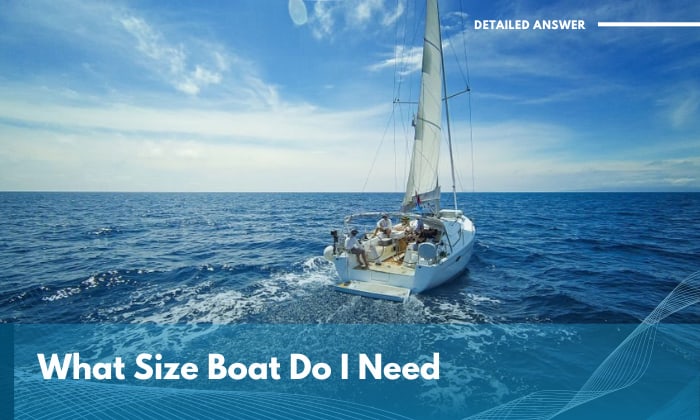
Many folks have approached me asking, “What size boat do I need? family of 3,4,5,6,8,10,12?”, and so on. That’s part of the reason why I’ve decided to make this post, so I can just direct them to it.
Generally, you want to adjust the size by 3 to 4 feet, if not more, based on the minimum size suggestion. For instance, a 23-footer may be enough for family of 8.
But such a recommendation often doesn’t account for space for amenities, recreation, socialization, activities, etc. I’ve outlined the ideal sizes in the boat sizes chart below.
Table of Contents
Follow These Better Boat Size Recommendations for Families
How the type of boat influences size, 1. offshore fishing, 2. inland or inshore fishing, 3. liveaboard, 1. passenger capacity, 2. location (offshore or inland/inshore), 3. type of water activity or social activity, 4. facilities and amenities, tips to choose the right size boat.
As you can see, even the best exact size recommendation isn’t limited to an exact range. My reasoning behind this is in family boats, more size means more comfort for everyone.
Moreover, to emphasize my point in the main answer, the minimum manageable size for a family of 5 is 16 feet, but the ideal size will be more than 18 feet. Meanwhile, for a for family of 6, an 18-feet boat is manageable , however, you are recommended to go for 20 feet or more.
I can further back my recommendations with the following scenarios certain boating families tend to overlook:
- The kids growing up. Imagine how a minimum-size boat for 8 people would look if the children are all grown up.
- Guests coming over. I mean, who knows when your children would decide that it’s a perfect opportunity to throw a birthday bash or you’d invite your colleagues for a fishing holiday?
- Someone in your family may be claustrophobic or agoraphobic or you are one yourself.
- How many cabins do you need? For reference, the average recommended size that will ensure the best comfort for a family of 4 is a 35-foot sailboat with no less than three cabins.
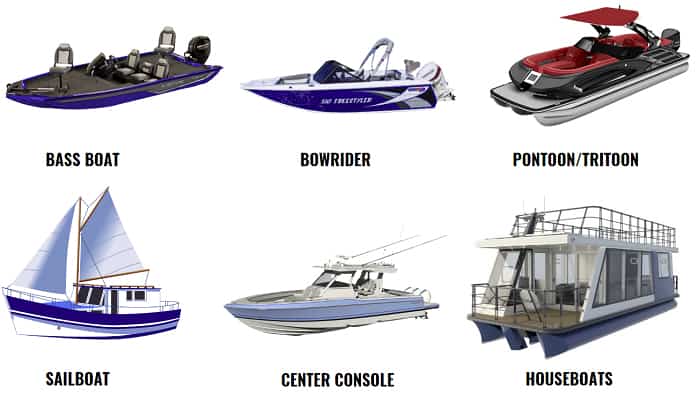
There’s also the fact that size will always be directly influenced by the boat size classification. For instance, a pontoon (class 2) typically tops at 30 feet, while a sailing yacht (class 3) can span 150 feet.
Both are arguably great boats for families. Same as bowriders, which are an especially superb choice for those who love to fish; however, they’re quite similar to pontoons in that they’re limited to 35 feet.
Here are the average boat size of popular family-friendly options based on their type:
- Bass boat – up to 25 feet
- Bowrider – 17 to 35 feet
- Pontoon/Tritoon – 15 to 30 feet
- Sailboat/Yacht/Catamaran – 30 to 150 feet
- Center console – 18 to 46 feet
- Houseboats – 30 to 100 feet
Overall, it takes living on a good family boat to realize just how irreplaceable it is. Of course, the opposite rings true as well, so I can’t stress enough that you as a family should choose the vessel that will truly “speak” to you and your loved ones.
What Boat Size Should You Get Based on Your Purpose?
We can’t overlook the type of activities you’ll be regularly doing as a family while onboard. Lots of families just get a bowrider or pontoon because they only use it for the occasional fishing weekend.
Others love to use their boats for swimming, camping, scavenging hunts, and water sports like skiing and wakeboarding. Plenty of discussions center on fishing, and that’s often a good starting point for deciding which boat size to settle on.
However, if you’re only going to be mostly cruising, then you likely won’t need the extra size.
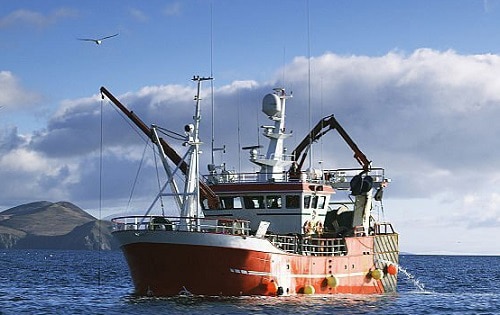
People who want a boat that’s suitable for the ocean, particularly the open ocean, normally need, as the timeless Jaws quote goes, “a bigger boat”. And, no, it’s not because you’ll be facing sharks out there, but rather rougher weather and water conditions.
Families who will be frequenting these parts should go for at least a 35-footer or a 40-footer with a powerful engine that can handle the waves and the additional weight. While you’re canvassing, be on the lookout for center consoles and pontoon boats with sweet accessories like fish finders, fish boxes, navigation systems, rod holders, fenders, poles, etc.
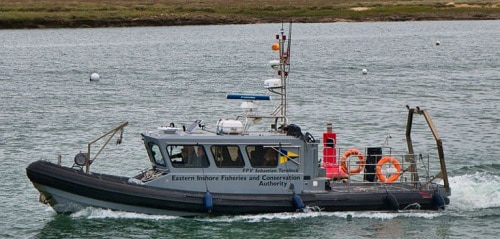
You can settle for a more benign type of boat for family if you and your squad can’t get enough inland fishing. Usually, this is the kind of vessel people choose if they’re more inclined to purchase a family boat for the money.
A lot of families like center consoles like the Fisherman 236 and 2360 Bay for this particular type of fishing activity. Just check out reviews of these two boats, and you’ll see why they can ensure everyone’s going to have a blast come fishing day on your favorite lake.
The average size for boats that will manage relatively calm waters is around 19 feet. However, I still suggest you follow the chart I shared above when weighing your final decision.
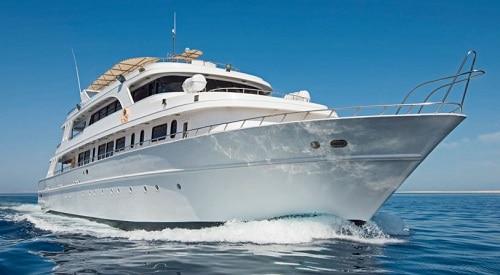
A boat for 5 people should at least follow the general recommendation of at least going for a 50-footer, especially if it’s a monohull.
Assuming your family of 4 belongs to that category, you’ll likely need to adjust the figures above by adding 10 to 20 more feet at least.
I know a family of 3 that has a 53-foot Amel yacht, and they consider the size just right for them. Of course, there’s always a subjective touch in that preference, but the general trend is that liveaboards can’t get enough space.
This activity requires you to factor in amenities and facilities, which inevitably determine the final size.
- How many showers and cabins do you need?
- How large should the kitchen, storage room, and cockpit be?
- Will you get swim platforms, a sauna, a swimming pool, and other recreational amenities?
Factors Affecting Boat Sizes
Remember these factors as you ponder the size and kind of vessel for your family:
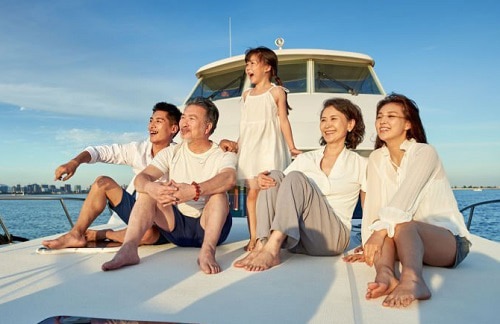
Usually, boats have a passenger capacity plate but keep in mind that that’s only the bare minimum that the vessel can carry, regardless of sea and weather conditions.
Open oceans and seas are more challenging and, thus, require more sizable watercraft.
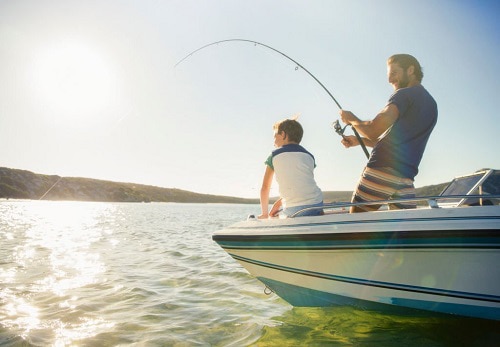
Boats can function as floating houses, lounges, fishing vessels, watersports machines, recreational sanctuaries, kayaking partners, or just plain, old cruisers. Manufacturers adjust their creations based on these myriad activities.
As said above, the more your boat begins to look like a floating home with its various cabins and rooms that contain these, the larger it inevitably becomes.
As a bonus, did you know that there’s no set limit to how big or small a boat is? This is despite some professional seafarers I’ve met claiming that 78 feet is the ceiling.
To his defense, though, he does claim that anything over that can already be considered a ship and can legally carry smaller boats.
- The number one tip that I always give families that aren’t decided yet is this: Go for either the biggest that fits your budget or the smallest that everyone’s comfortable with.
- An outboard motor is often the crowd favorite among class 2 boat owners as it takes the least amount of deck space.
- Know the exact conditions of your specific boating area (i.e. whether it’s mostly saltwater, inland, offshore, or freshwater).
- Always leave a safety buffer to anticipate additional passengers and larger weights you may have to bring aboard over time.
- Don’t forget about maintenance expenses. I abide by the general guideline to set aside 10% of the boat’s present value every year when determining these costs.
And that’s all she wrote when answering the persistent question, “What size boat do I need? family of 3,4,5,6,8,10,12?” The gist is it’s better to oversize a bit as far as family boats go.
That’s the best way to avoid the mistake most people make, wherein they buy something undersized only to swap it for a larger boat in the end. Think of the wasted money that immediately entails.
Take note of every point I made above, and I’m confident you and your fam are in good hands.

“My intention from the first day establishing Boating Basics Online is to provide as much help as possible for boaters who want to experience a first safe and convenient trip. So feel free to join us and share your beautiful journeys to the sea!”

My Cruiser Life Magazine
What Size Sailboat Do I Need? Sailboat Size Buying Guide
Picking the size of your first boat is one of the hardest choices you’ll ever have to make, at least in the world of boating. With limited boating experience, how can you possibly know how much is enough and when enough becomes too much? Of course, you want to have room to enjoy the boat like you dream of doing, but you also don’t want to throw money away on a boat that’s too big for you and your family to handle.
There are many ways to tackle boat shopping, and research is step one. Below are some ways that you can differentiate sailboats of various sizes. It should provide a starting point in your path, but it is by no means the last stop along the way. Before jumping in, you’ll want to get some on-the-water time in these boats to get a feel for what being aboard them is like.
Table of Contents
What are your needs, what are your wants, take the advice of others with a grain of salt, budget constraints, size by sailboat length and width, sailboat sizes by type of boat, sailboat lengths by group, can’t decide what sailboat size consider a buyer’s broker, faqs – sail boat sizes.
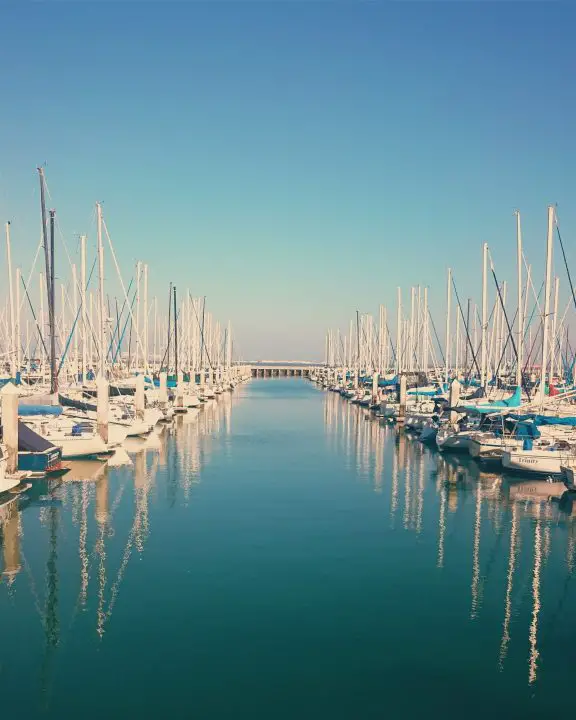
Before Boat Shopping, Consider Your Needs and Wants
Boat shopping can be an emotional roller coaster ride as you sort through the dizzying array of boat designs and sailboat sizes. Before you go falling in love with your next floating home or traveling time machine, you should sit down and map out your “needs” and “wants.”
These are the things that are deal-breakers. If a boat doesn’t have it, you’re not even going to look—despite that sweet shear line and beautiful clipper bow.
The trick with your needs list is to be brutally honest with yourself. But, again, this is challenging if it’s your first boat. It’s tough to do because once you get on a boat, you might start realizing that what seemed like “wants” get elevated to “needs” quickly.
Of course, the opposite is true, too, since the pendulum swings both ways. Things you think you need fall away and become less important sometimes.
These are those things that would be great for your new boat to have but that you can likely do without. Thinking about the features you’d like to have will help you narrow down the size of boat you need because it will enable you to shop for the boats that have those items. For example, an island berth in the stateroom might be a want, but when you discover that you need a 42 to 45-foot boat to get that, it may help you narrow your field of potential boat sizes.
After you’ve got your needs and wants lists complete, start seeing what size boats fit your bill.
You’ll quickly realize that boat size is like flavors in an ice cream shop. If one flavor suited all tastes, they’d probably only sell one. But instead, we live in a world where you can have any flavor you can imagine.
You’ll find lots of stories touting the benefits of minimalist living on a sailboat. Like their land counterparts, the tiny house owners, tiny boat dwellers pride themselves in owning as few possessions as possible and reducing clutter in their lives. Of course, boats are an excellent way to do this, but taking it to the extreme can be very uncomfortable for some people.
No matter whether you’re coming from an RV, a ranch-style house in the suburbs, or a waterfront mansion on the Intracoastal, moving onto a boat will be a downsize no matter what size boat you choose. It is all relative to your life and your budget. Boats are small living spaces, and buying a tiny one to make a point of it could be very uncomfortable. So instead, you need to find the one that is comfortable to be on.
Of course, there are many downsides to getting too large a boat. Boats cost exponentially more to keep and maintain as they get bigger. A bigger boat has a bigger engine, bigger sails, bigger rigging, and more complex systems that need more maintenance. In addition, it requires a bigger slip at a marina with deeper water access, and it might mean limiting yourself to expensive ocean ports where docks are more expensive, to begin with.
The point is, no one is going to use your boat like you’re going to use it. You’re buying a boat for a very specific purpose–so don’t let other’s influence your decision too much by telling you how they’d do it.
Your budget will be the limiting factor in your boat purchase. For most used boats sold, the overall size is relative to the overall price.
There are outliers, of course. You can eliminate project boats that lure you in by promising a bigger boat at a small boat price. These will invariably need much more money to refit and prepare than just buying a well-equipped and maintained small boat.
Similarly, premium brands might get you a smaller boat for a big boat price. Premium brands, however, do hold their value well and are generally better maintained and better built in the first place.
So buying a boat starts with settling on your needs and wants, listening to a few recommendations on the lifestyle, and finally looking at your budget. Together, these things give you a starting point, but it still is not an easy choice. It would be best if you still went see some boats.
Ways to Consider Sizes of Sailboats
- By Saliboat length and width
- By type of boat
- By sailboat group
Boats are measured by their lengths. But many different measurements are used, and makers do not standardize how they make their model numbers. Some use feet, some use meters. Some use waterline length (LWL), some length overall (LOA), and some use length on deck.
So looking at the model name of a sailboat tells you very little about a boat and how much space it has. To know the actual length, how much you’ll be paying in slip fees, or how much space you’ll have to live in, you need to dive into the numbers carefully.
Besides the specifications, don’t forget that boats are built to do different jobs. A boat designed for offshore sailing tends to have deeper and narrower hulls, smaller portlights, and less living space, while boats for coastal cruising use larger portlights, bigger cockpits, and walk-through transoms.
You can also differentiate boats of various eras by their sizes. You can’t compare the living space on a classic 1970’s offshore cruiser to what you’d find on a modern cruiser. Designs have changed, and living space has increased. These longer boats look different on the outside—and even more has changed on the inside.
Even with all these differences to look for, boats are more alike than you might realize. I’ve often noticed that when shopping for sailboats, you can start to group different models that interest you together into categories.
To some extent, these groupings are generalizations because there will always be specific makes and models that stand out. But the goal here is to demonstrate the sort of boat you could expect to get in each generally accepted group—what it would be suitable for and what living aboard would be like.
Sailboat Groups:
Monohull Cruising Sailboats
Smaller boats less than 30 feet.
Boats under 30 feet are generally suitable for day trips or weekends. As overnight accommodation, they’ll likely feel less like living on a glamorous yacht and more like camping. Most boats 25 feet and longer will have a v-berth and an enclosed head, but cooking space will be cramped, and there will be very little storage for supplies and provisions. A solo sailor with a minimalist lifestyle could live aboard a beamy 22 to 29-foot sized boat with few problems, but a couple would need to have a very healthy relationship to last very long in such a small space.
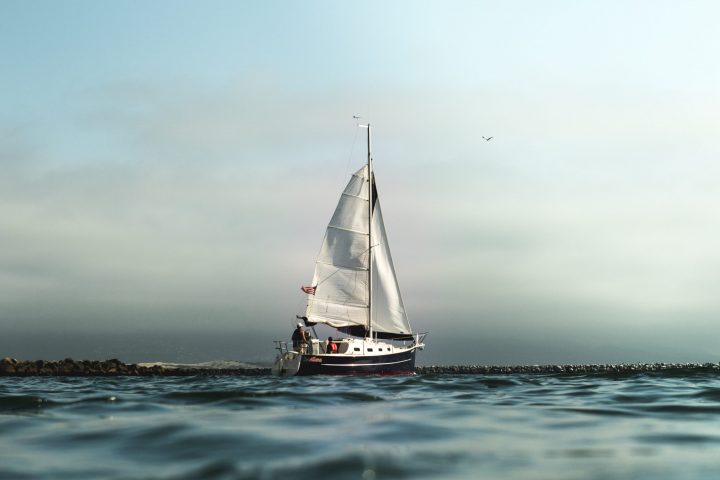
30 to 34 Feet
At 30 feet or so, a few boats begin providing impressive amounts of interior space, enough so that solo sailors or salty couples could live aboard full time. The Catalina 30 is one such example, a beamy coastal cruiser with a fantastic amount of interior space and an open floor plan that encourages you to spread out.
In offshore vessels, a couple of notable 34-foot vessels have a similar amount of size and can comfortably be outfitted for long trips. But these boats are small by the standards of most modern cruisers, and their owners will have far less room for provisions, water, fuel, and stuff than others.
35 to 40 Feet
The range between 36 and 38 feet is a crowded market for sailboats since this size range suits many different needs. There begins to be enough space to spread out, and there is often more than one stateroom with private doors. The boat is big enough to outfit and load up for long-distance cruising for a couple. For a family, there’s enough bunks and space to spend a week aboard with few quibbles. The salon has seating to entertain between four and six people comfortably.
Living on a boat this size is still small, however. The galleys are usually cramped, and there are seldom extras onboard like a separate freezer. Storage is always a challenge, especially if you’re packing for a long journey. And the boat bed is usually a wedge-shaped v-berth like a smaller boat, which will require one person to climb over the other all the time.
40 to 45 Feet
If you want more space to spread out, more privacy, and more storage than you might need, look at boats over 40 feet.
Two significant upgrades you get in boats this size include an island berth and a separate shower stall. These might seem trivial to small boat shoppers, but these are great upgrades when living aboard full time, especially for older couples. Another plus is the galleys, which have much more useable storage for provisions and counter space for food prep. The salon seating in a boat this size can usually host six to eight people very comfortably.
Boats above 40 feet tend to get more challenging to operate, however. The sail area has a greater force in a breeze and is heavier to raise, the anchoring equipment is larger and requires an electric windlass, you’ll want a diesel generator for power, and docking will likely require a bow thruster. In other words, not only are they larger and more complicated, they become a lot more expensive. Big boats have extensive systems, and the leap into a boat above 42 feet is usually a significant jump in price from 38 feet long.
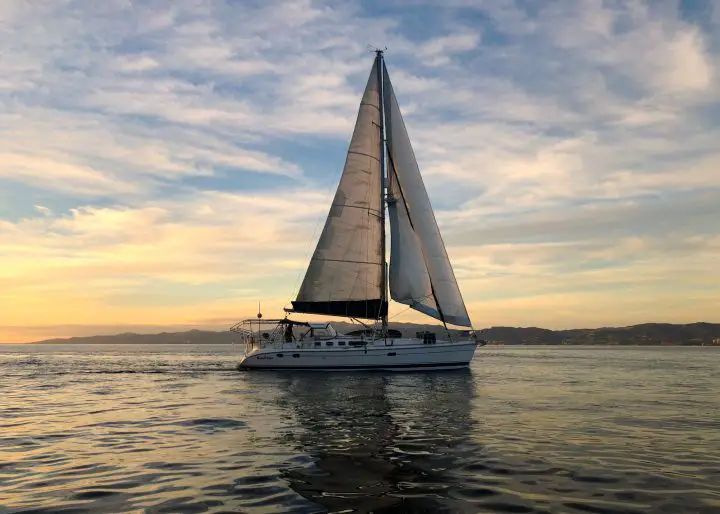
45 to 50 Feet
By the time you get to larger sailboats over 45 feet, you’ve gone up another notch. Yes, everything is more expensive, but all the luxuries of home come on board. You’ll likely have an (albeit small) washer and dryer. Offshore boats will likely have a watermaker , so you never run out of water. There will be plenty of space for dinghies or paddleboards. There will likely be three completely private staterooms and at least two heads below. The galley will have everything home does—stovetop, oven, microwave, coffee maker, blender, fridge, separate freezer, and anything else you could ask for.
Boats of this size begin to be limited by where they can travel. Their masts are tall, and they may be limited to open-ocean port cities without fixed bridges. They will also have deeper keels than their smaller counterparts, limiting their ability to travel in shallow water areas.
50 Plus Larger Boats
A large boat over 50 feet is getting into “yacht” territory. It will likely have every luxury of home, but it will also be full of complicated systems and will be expensive to maintain and store. Boats of this size are popular with couples who often travel with guests or large families who often travel together.
Small Coastal — Less than 37 Feet
A few cats come in less than 37 feet—one popular model is the Gemini 105MC . These boats are known as coastal cruisers for the most part because they don’t generally hold enough gear for long passages, although many have done them.
These small catamarans lack the same grandeur of their larger counterparts. They’ll still have large salons with big tables that can seat six or eight people, but the galley is usually down in a hull. There is usually one sizeable queen-sized berth for the owners and smaller staterooms for guests or storage. Many of these boats are powered by outboards or a single inboard motor.
Small Offshore — 37 to 40 Feet
The most popular boat model in this range is the Lagoon 380 , of which Lagoon built almost 1,000 hulls. There are smaller catamarans available, but this one stands out for its excellent living space and classic “catamaran” layout. Other popular models in this range include the Leopard 38, 39, and 40 (all generations).
These cats are entry-level for ocean crossing capable cats, and they’re perfectly sized for cruising couples. They’re easy to handle, easy to sail, and easy to fill with stuff. They’ll usually have two queen-sized berths and one or two smaller berths, all in entirely private cabins. There are usually two heads in each hull, and some designs feature separate showers. They’ll sleep three couples comfortably in private staterooms and can store enough provisions for a week of island hopping. For a cruising couple, they can usually store everything they’d need for a long-term voyaging within reason.
Catamarans in this size have limits, though. They tend to be easily weighed down by too much stuff, and their length causes them to “hobby horse” in choppy seas. Two inboard diesel motors power them, which are more expensive to replace or maintain than outboards.
Midrange Offshore — 41 to 45 Feet
Midrange catamarans above 42 feet tend to perform much better than the shorter boats, without the hobby horsing tendency. They have more room for gear, and they sail faster. This size boat works for couples who often have guests or traveling families.
These midrange catamarans might look a lot like their smaller sisters, but it is a significant price jump to get into boats of this size. The engines are bigger, the rigging is more stout, and the sails cover more sky.
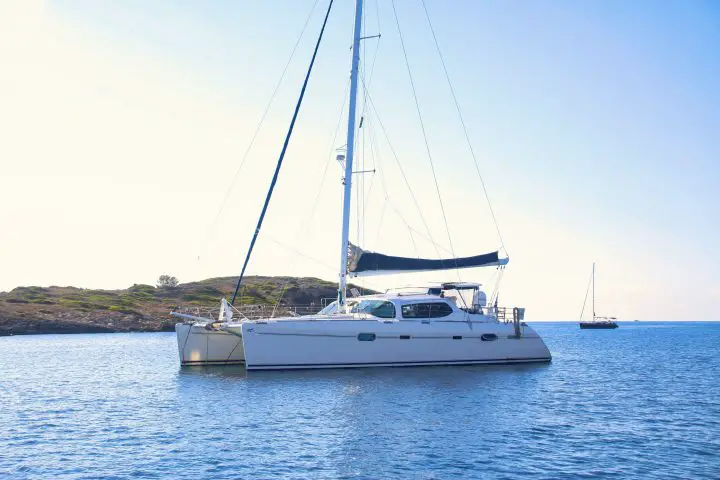
Large Offshore — 46 to 50 Feet
These bigger catamarans come from the charter companies and are designed for a crew of two to entertain three or four couples for a week at a time. There’s enough room for all six or eight people to spread out while living with two strangers, all while having privacy and space. The cockpits and salons of a boat this size can host gatherings of 20 or 30 people over for drinks. Anytime one of these cats pulls into the anchor, it’s usually a safe bet where the sundowner get-togethers will always be held.
50 Plus and Larger Vessels
The space that you find on a 50-foot cat is probably equivalent to an 80 or 90-foot monohull. The salon is enormous, and there is usually a flybridge with an entirely separate seating and entertaining area.
Catamarans this size are large vessels. Their twin engines make maneuvering easy, but like handling larger monohulls, anyone handling this size boat will need to get trained by an experienced captain with great sailing skills before setting out.
If you haven’t spent much time on boats, nailing the size of the boat you want requires more than just imagination and web articles (as good as those may be)! There is simply no substitute for getting on a boat, for standing inside its cabin, sitting on its settees, and manning its helm. There is no other way to find out what the space is like—is it cozy and warm or cramped and terrifying?
Like buying a home in a strange neighborhood, if you’re struggling with finding the right size boat, consider enlisting the help of a buyer’s agent or buyer’s broker. Yacht brokers work exactly like real estate agents, and it is common to enlist one to help you purchase a boat. In addition, knowledgeable brokers familiar with the type of sailing you want to do can guide you through the search process and get you access to view and step onboard many different types and sizes of sailboat.
What are the sizes of sailboats?
Sailboats come in every shape and size, from single-person Opti sailing dinghies to the largest in the world, the Sailing Yacht A, at 142.8 meters (468.5 feet). Sailboats are generally measured by either their length overall (LOA) or length on deck (LOD). Most private sailboats fall somewhere between 25 and 40 feet long.
What size sailboat should I buy?
Everyone is looking for something different when they buy a sailboat. Your choice of boat greatly depends on how you want to sail it, where you want to take it, and how much time you’re planning to spend aboard. The best way to get a feel for what size will work for you is to get as much sailing experience as you can before you purchase. Take sailing lessons, stay overnight on boats, and consider a bareboat charter vacation.
What is a good size sailboat for the ocean?
Finding a good bluewater cruiser to cross oceans is about choosing a reliable and trustworthy design built to a high standard by a reputable boatyard. This is much less about size than many people believe. There are very stout and small boats that have circumnavigated the globe, including the tiny 22-foot Falmouth Cutter or the Flicka 20.
Most people looking to go voyaging will find that minimalism required to make a small boat like those work to be limiting. While it was once quite common for world cruisers to set out on boats under 35 feet, most people today set off in vessels 40 feet or longer.
Matt has been boating around Florida for over 25 years in everything from small powerboats to large cruising catamarans. He currently lives aboard a 38-foot Cabo Rico sailboat with his wife Lucy and adventure dog Chelsea. Together, they cruise between winters in The Bahamas and summers in the Chesapeake Bay.

Size-Charts.com – When size matters
For buyers & sellers – Size charts & Product size plugin
Sailboat Size Guide for Beginners and PROs
A sailboat is a type of boat that uses sails to harness the wind and propel it forward. Sailboats have been used for centuries for transportation and recreation, and they come in a variety of sizes and designs. The most basic type of sailboat has a mast, sails, rigging, and a hull (skip straight to the Sailboat Size Chart ).
The mast is a tall pole that supports the sails, and the sails are usually made from cloth. The rigging is a system of ropes and pulleys that helps to raise and lower the sails. The hull is the body of the boat, which provides buoyancy and keeps the boat from sinking.
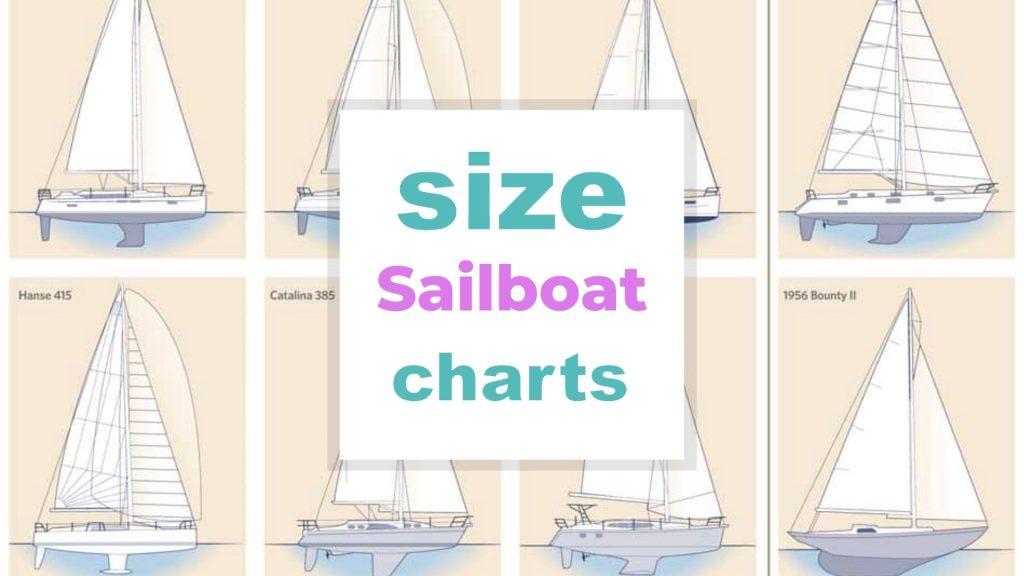
Sailboats are powered by wind, which is caught by the sails and used to push against the water. This action propels the boat forward. Sailboats can be sailed alone or with a crew, and they can be used for racing, cruising, or other activities.
This guide is not about sailboats though, but all about sailboat sizes. So let’s get right into it.
Jump right into the Frequently Asked Questions
Related: What Kite Size do I need for Kitesurfing? , Roller Skates Size: Find The Perfect Fit , Skateboard helmet size chart and fitting guide , Yoga Ball Size chart for exercising or for your office , Roller Skate Size Chart for Adults and Children , Printable Shoe Size Chart – How do i measure my foot size?
Sailboat Size Table of Contents
The importance of sailboat size, what is a good size for a sailboat, sailboat size chart (by sailing class), what is a good size sailboat for the ocean, frequently asked questions.
Related: Surfboard Size Guide and Dimensions
For those who love to sail, the sizing of the sailboat is critical. The process, though daunting, will turn out satisfying when you’re able to find a boat that’s most compatible with your needs.
There are different sailboat sizes curated for different situations such as the distance to be covered, the number of passengers, the budget, and preferences that come into play when looking out for a sailboat.
For whichever your needs, you want to end up with a vessel that’s going to assure you safety over the waters and at least remain within the sailing or cruising safety index. Hence, the begging question – how do you find a sailboat size that’s big enough without being too big?
We seek to answer all the whys and why-nots you might have regarding sailboat sizes. We also seek to make it easy for you to determine a vessel that you not only need but also one that’s in line with your taste.
Related: Jet Ski Size: Which Size Should You Go For?
A good sailboat is at least 30 ft. Such a boat is seaworthy, comfortable, and can be sailed on without breaking the bank. It is one of the smallest sail sizes that can go for long distances.
However, most sailors prefer between 35 and 45ft sailboat sizes. A good sailboat for your family should fall somewhere between 30 and 40ft.
A 30ft sailboat is as good as a 40ft and 50ft boat in many ways as long as comfort is overlooked. For its ability to go for very long distances, a 30-foot sailboat is one of the smallest sailboats that sail around the world.
However, Alessandro di Benedetto’s story of circumnavigating the world using his 21-foot sailboat says it all. He broke the world record for using the smallest yacht to sail around the world, showing that sailboats are more powerful than we know.
Learn more about how to pick the right size sailboat (video)
Related: Kayak Paddle Size by type and height (size charts included)
Related: Ski pole size advice with easy to use size charts
A 30-foot sailboat is a good place to start. This size is good enough to carry out the downwind sailing to the destination. The boat is also easy to manage during waves and has some room to store cargo and food in the event that the sailing takes days or weeks.
A 30-foot boat is among the smallest sailboats for ocean crossing because of the dire demands of long sails such as comfort and storage.
Moreover, the bigger the boat the faster the sails for its ability to tackle high waves, just to mention. The best size sailboat for ocean crossing ranges from 35 – 45ft.
Check out this video to learn more about sailboat sizes
What is the minimum size sailboat for open ocean sailing.
The 27-foot boat is the minimum sailboat to cross the Atlantic, according to the Atlantic Rally for Cruisers. While this site is not as popular as bigger boats of 38 feet, it is something you can bank on for open-ocean sailing on a budget.
Most people swear by bigger boats that will make it easier and less of a hassle to sail downwind.
Even smaller boats have managed to cross the Atlantic such as the renowned Tinkerbelle (13.5 foot). The boat soared into history books for being the world’s smallest sailboat to cross the Atlantic Ocean in 1965.
Is a 30-foot sailboat big?
A 30-foot sailboat is big enough for a couple setting out for a long distance. Many sailboat brands of this size make it comfortable for two people. The boat has a sleeping space, toilet, shower, food storage, sink, and stove that make it comfortable for two people.
In simple terms, the smaller the number of sailors the better the sailing experience on a 30-foot boat.
For instance, a 20ft sailing boat is big enough for one person but can also be used by a family of six, of course, depending on the brand and its sturdiness.
Can one person sail a 30-foot boat?
Yes, a 30-foot boat can be steered by one person. In such a scenario, it’s important to prep for the sail as much as possible as you will be forced to skip some activities.
With the right boat size, automation of systems that are in the best condition, enough sail area, and properly operating assistive equipment sailing a 30-foot boat can be less taxing than you think.
Several other factors come into play such as experience and physical fitness. A sailor may need to be agile and exploit their sailing skills especially when things go wrong.
Can you single-hand a 40-foot sailboat?
It is very possible to single-hand a 40-foot or even bigger sailboat. This calls for the right measures to be in place. If looking to sail solo, try going for shorter distances as you gain the courage and skills to manage the vessel above the waters for longer distances.
Otherwise, such a boat size can be challenging to single-hand if you’re doing it for the first time.
Moreover, ensure that the weight of the cargo is not beyond 90 tons, to make it easier to steer on high waves.
How many people can a 30-foot boat fit?
A 30-foot boat will accommodate a maximum of 11 passengers without any stability problems. However, this is advisable for short distances because of comfort issues.
The boat is among the smallest sailboats around the world as brands prefer bigger vessels, speaking of the growing demand for them today.
To determine a boat’s passenger capacity, multiply the length of the boat by its width then divide the product by 15. This is especially important if the boat lacks a capacity plate.
While different sailing yacht sizes have different sailing experiences, small doesn’t always mean incapable. Small boats are cheaper than big ones because of their speed and ease of steering during harsh weather conditions.
Solo sailing is not advisable for long sails because of the physical demands to steer the boat through to its destination.
Above all, sailboat size is an important consideration when purchasing a sailboat. The wrong size sailboat can lead to disappointment and wasted money. Please use this guide to be sure you are getting the right size for the purpose before you hit the waters.
Any questions? Well, we are always happy to help. So please use the comments area to share your questions.
Picture in this post is by Kristel Hayes on Unsplash
Related to Sailboat Size

Thomas Vandepitte 185 Posts
Leave a reply cancel reply.
Your email address will not be published. Required fields are marked *
Save my name, email, and website in this browser for the next time I comment.
Imagine a world with minimum to zero returns. Imagine a perfect fitting bought product. Our vision is to improve the online shopping experience by becoming the go-to source for accurate sizing tools and information, reducing returns, and increasing customer confidence and conversion rates.
Privacy Policy
The Partner network
Request or add a size chart
Wordpress plugin
Chat-GPT Size Advisory
Size Chart Search Engine
Size Charts by Brands
- Converse Size Charts
- Allbirds Size Charts
- Dr Martens Size Charts
- Hanks Size Charts
- Hermès Size Charts
- Veja Size Charts
- Lane Bryant Size Charts
- Diadora Size Charts
- Salvatore Ferragamo Size Chart
- Chanel Size Charts
- Levis Size chart
- Valentino Size Charts
- Moncler Size Charts
- Lee Size Charts
- Merrell Size Charts
- Diesel Size Charts
- Armani Size Charts
- Wrangler Size Charts
- Salomon Size Charts
- Miss Me Size Charts
Size Charts by Topics
- Insoles Size Chart
- Bookcase Size Charts
- Battery Size Chart
- Country size charts
- Bracelet Size Chart
- RV size Chart
- Rug Size chart
- Skateboard Size Chart
- Cap Size Chart
- Fitness Size Chart
- Music Size Chart
- Condom Size Chart
- Gun Size Chart
- Snow Size Chart
- Helmet Size Chart
- Diapers Size Charts
- Hats Size Chart
- Maternity Size Charts
- Gloves Size Chart
- Glasses Size Chart
Size Charts by Gender
- Men Size Charts
- Kids Size Charts
- Women Size Charts
Size Charts by Types
- Comfort Size Charts
- Dog Size Charts
- Fish Size Chart
- Gender Neutral Size Charts
- Golf Size Charts
- Horse Size Charts
- Luxury Size Charts
- Plus Size Charts
- Safety Size Charts
- Work Size Charts
Types of Sailboats: Essential Guide for Every Sailor
Sailboats have been an essential part of human history, contributing to exploration, trade, and leisure. With a myriad of designs and sizes, these versatile vessels cater to various purposes and preferences. The defining characteristics of sailboats come from their rigging, sails, and hull design.
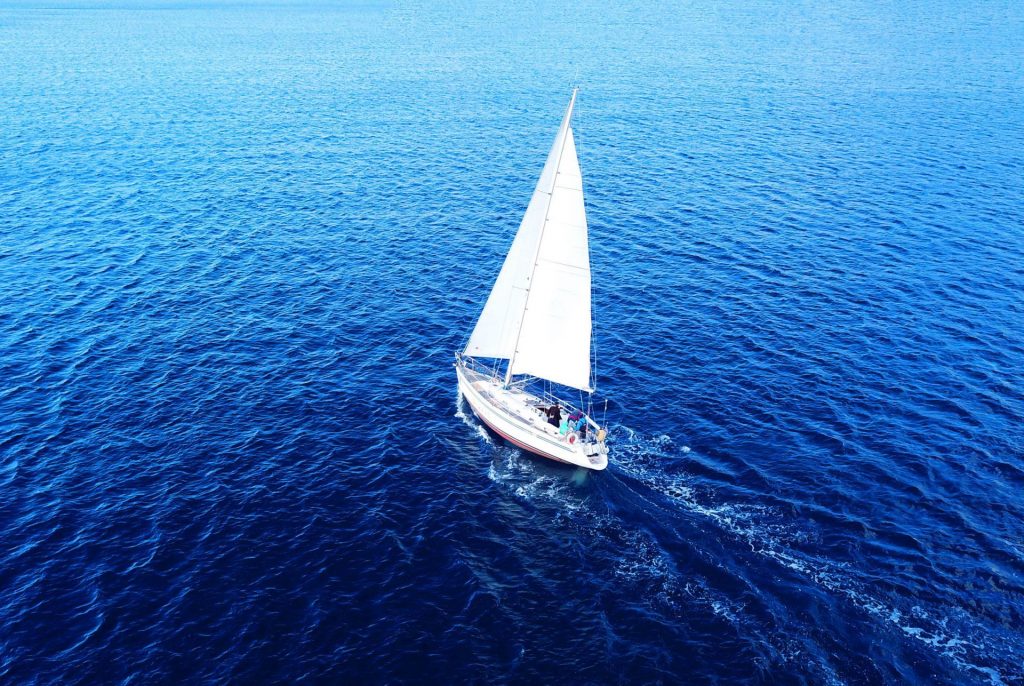
The basics of sailboat design play a significant role in the classification and function of these vessels. Hull shapes, keel types, and construction materials contribute to the speed, stability, and maneuverability of sailboats. Additionally, rigging and sails come in various shapes and sizes, which influence sailing performance and handling.
Key Takeaways
- Sailboats are classified by hull design, rigging, and sails that serve specific purposes.
- Designs and materials have a direct impact on the performance and handling of sailboats.
- A wide range of sailboat types exists, which cater to different needs and preferences.
Basics of Sailboat Design
Sailboats come in various shapes and sizes, designed for different purposes and sailing conditions. One can classify sailboats based on hull types, keel types, and mast configurations. This section will briefly discuss these basic components of sailboat design.
There are mainly two types of hulls: monohull and multihull.
- Monohull : This is the traditional and most common type of sailboat hull. It consists of a single hull, providing stability through the use of a keel or centerboard. Monohulls come in various shapes and sizes, suitable for various sailing conditions.
- Catamaran : Catamarans have two parallel hulls of equal size, offering increased stability and speed compared to monohulls. They are commonly used for cruising and racing.
- Trimaran : Trimarans have three hulls, with a larger central hull and two smaller outrigger hulls. This design offers even more stability and speed than catamarans.
The keel is an essential component in sailboat design, helping with stability and performance. There are various keel types, including:
- Full keel : This traditional design features a long and wide keel that extends along the boat's bottom. It offers good tracking and stability but sacrifices speed and maneuverability.
- Fin keel : Fin keels are shorter and deeper than full keels, providing a better combination of stability and maneuverability. These are common in modern monohull sailboats.
- Bulb keel : A bulb keel features a fin keel with a heavy bulb at the bottom, which concentrates the boat's weight, increasing stability and performance in rough conditions.
- Swing keel or centerboard : Swing keels and centerboards can be raised or lowered, allowing the boat to adapt to different water depths and sailing conditions. They are common in smaller boats and racing sailboats.
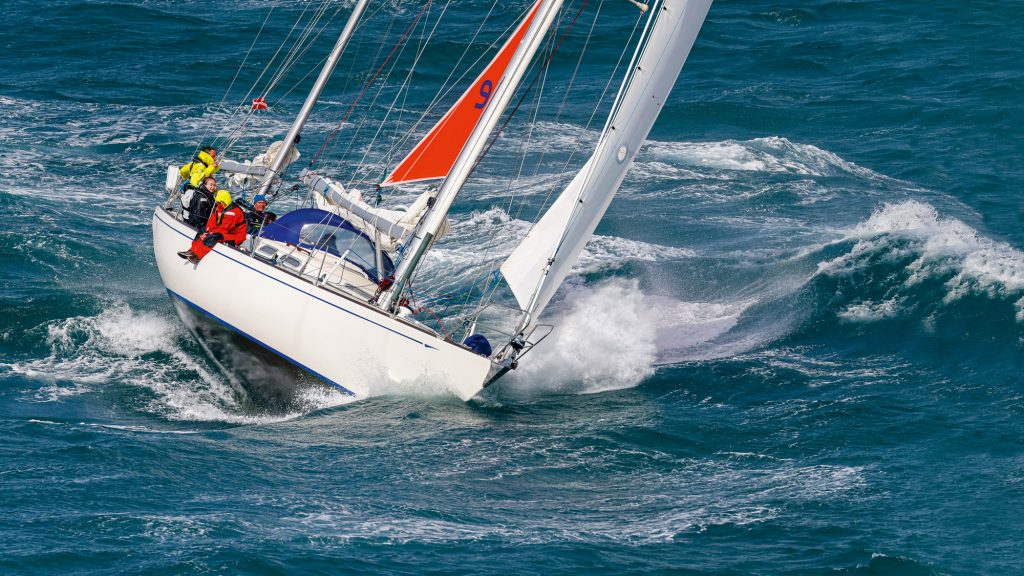
Mast Configuration
The mast configuration affects the sail plan and overall performance of a sailboat. Some common mast configurations include:
- Sloop : This is the most popular mast configuration and features a single mast with a mainsail and a headsail. The simple design makes it easy to handle and suitable for various sailing conditions.
- Cutter : Similar to the sloop, the cutter also has a single mast but carries two headsails, providing more sail area and better performance in heavy weather.
- Ketch : A ketch configuration has two masts: a taller main mast and a shorter mizzen mast. This design offers more flexibility in sail combinations and better balance in different sailing conditions.
- Yawl : Similar to a ketch, a yawl also features two masts but the mizzen is located further aft and is smaller. This design provides better balance and control, particularly in downwind sailing scenarios.
In conclusion, the basics of sailboat design involve selecting the appropriate hull type, keel type, and mast configuration for the desired sailing performance and conditions. Understanding these concepts can help sailors make informed decisions when choosing a sailboat or planning their sailing adventures.
Rigging and Sails
When it comes to sailboats, the rigging and sails play a crucial role in the boat's overall performance and capabilities. This section will briefly cover popular rig types and sail types seen on different sailboats.
There are several types of rigs commonly found on sailboats:
- Sloop : Sloops are the most common type of rig found on modern sailboats. They have a single mast with a mainsail and a single headsail, typically a genoa or jib.
- Ketch : Ketches have two masts, with the main mast taller than the mizzen mast situated aft. They carry a mainsail on the main mast and a mizzen sail on the mizzen mast. Ketches benefit from easier handling and reduced sail area under strong winds.
- Yawl : Similar to ketches, yawls have two masts, but the mizzen mast is smaller and sits further aft, behind the rudder post. Yawls are often chosen for their graceful appearance and improved balance.
- Schooner : Schooners have two or more masts, with the aft mast(s) typically taller than the forward mast(s). Schooners can handle more sails, offering increased sail area for better performance, especially downwind.
- Catboat : Catboats are single-masted sailboats with a single, large mainsail and no headsails. They have a wide beam, which provides stability and ample space for passengers.
- Cutter : Cutters are similar to sloops but carry two headsails, usually a jib and staysail. Cutters may have multiple headsails for increased versatility in various wind conditions.
In addition to the types of rigs, there are also several types of sails used on sailboats, including:
- Mainsail : The primary sail attached to the back of the main mast. It is typically raised on a track or luff groove and managed by a combination of halyard, sheet, and boom vang.
- Genoa : A large triangular sail that overlaps the mainsail, typically used in light winds to provide additional surface area for better performance.
- Jib : A smaller, non-overlapping triangular sail attached to the forestay. Jibs are easier to manage than genoas and are used in a variety of wind conditions.
- Spinnaker : A large, lightweight sail used primarily for downwind sailing . Spinnakers are often brightly colored and shaped like a parachute to catch wind efficiently.
- Staysail : A smaller sail typically used in cutter rigs, positioned between the main mast and the forestay. Staysails provide additional sail area and versatility in varied wind conditions.
Understanding the relationship between sail and rigging can help sailors optimize the performance of their sailboats. With various options for rig types and sail types, each sailboat can be configured to meet the unique needs of its skipper and crew.
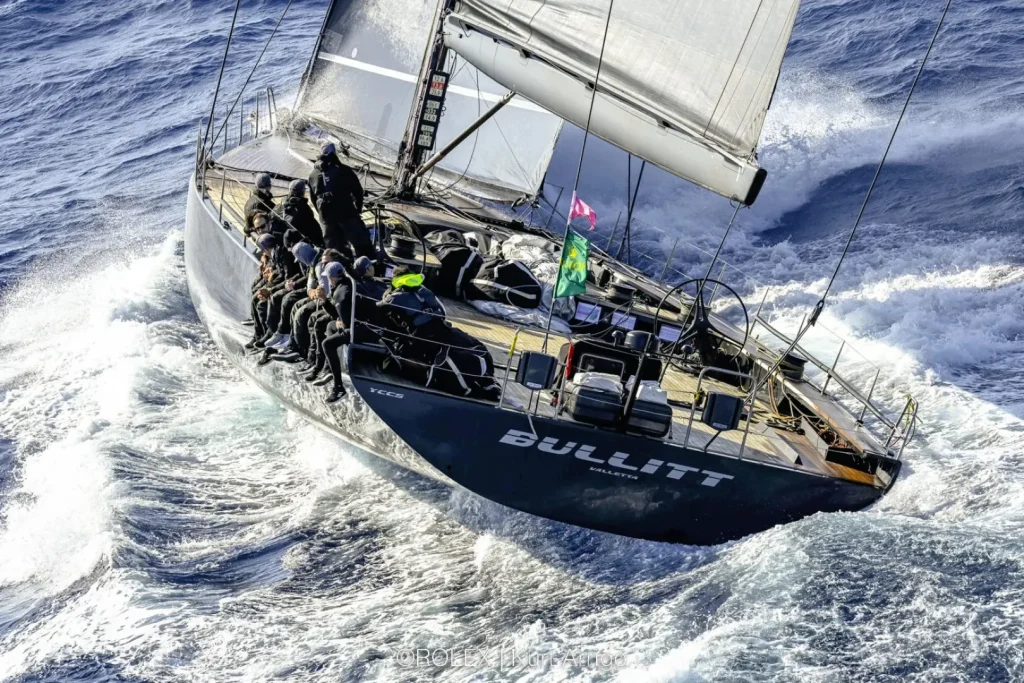
Classes and Types of Sailboats
Monohulls are the most common type of sailboats, consisting of a single hull that provides stability and balance. They come in various sizes and designs, depending on their intended use. Some popular monohull sailboats include the Optimist , Finn, and Sunfish, which are frequently used for racing and recreational sailing. Monohulls tend to have a deeper draft, requiring more water depth than their multi-hull counterparts.
Multihulls, also known as multi-hull sailboats, are a more modern innovation in sailing. They feature two or more hulls connected by a frame or bridgedeck. This design offers increased stability and speed over monohulls. Some common types of multihulls are catamarans (with two hulls) and trimarans (with three hulls). Due to their wider beam and shallower draft, multihulls are particularly suitable for cruising in shallow waters and provide more living space on board.
One-Design Sailboats
One-Design sailboats are a specific class of racing sailboats in which all boats are built to the same design specifications, ensuring that the competition focuses on the skill of the sailor rather than the design of the boat. These boats must adhere to strict rules and standards, with minimal variations allowed in terms of hull shape, sail area, and rigging. Some popular one-design sailboats include the Enterprise and the aforementioned Optimist and Finn sailboats.
Dinghies and Skiffs
Dinghies and skiffs are small, lightweight sailboats that are often used for sailing classes, short-distance racing, or as tenders to larger boats. Dinghies usually have a single mast with a mainsail and sometimes a small jib. Some popular types of sailing dinghies include the Optimist, which is specifically designed for children, and the versatile Sunfish sailboat. Skiffs, on the other hand, are high-performance sailboats primarily used for racing. They have a larger sail area relative to their size and typically include features such as trapezes and planing hulls, which allow for faster speeds and greater maneuverability.
In conclusion, there are various classes and types of sailboats, each with its own unique features and characteristics. From the simplicity of monohulls to the stability and speed of multihulls, and from the fair competition of one-design sailboats to the excitement of dinghies and skiffs, there is a sailboat to satisfy every sailor's preferences.
Sailboat Size and Use
When exploring the world of sailboats, it's important to understand their different sizes and purposes. Sailboats can be categorized into three main types, each with unique characteristics and uses: Day Sailers , Racing Sailboats, and Cruising Sailboats .
Day Sailers
Day Sailers are small sailboats typically ranging from 10 to 24 feet in length. These boats are perfect for short sailing trips and are easy to maneuver for beginners. They have limited accommodations on board, providing just enough seats for a small group of people. Some popular day sailer models include the Laser, Sunfish, and Flying Scot. Lightweight and agile, Day Sailers are often used for:
- Recreation: casual sailing or exploring nearby waters with family and friends
- Training: beginner sailing lessons or practicing sailing techniques
- Competition: local club races or interclub regattas
Racing Sailboats
Racing Sailboats are designed to provide maximum speed, maneuverability, and efficiency on the water. Sizes may vary greatly, from small dinghies to large yachts. Key features of racing sailboats include a sleek hull shape, high-performance sails, and minimalistic interiors to reduce weight.
Career racers and sailing enthusiasts alike participate in various types of racing events , such as:
- One-design racing: all boats have identical specifications, emphasizing crew skill
- Handicap racing: boats of different sizes and designs compete with time adjustments
- Offshore racing: long-distance racing from one point to another, often around islands or across oceans
Cruising Sailboats
Cruising Sailboats are designed for longer journeys and extended stays on the water. They typically range from 25 to 70 feet in length and provide comfortable accommodations such as sleeping cabins, a galley, and storage spaces for supplies and equipment. Sailing cruisers prioritize stability, comfort, and durability for their voyage.
Here are some common types of cruising sailboats:
- Cruiser-racers: These boats combine the speed of a racing sailboat with the comfort and amenities of a cruising sailboat. They are ideal for families or sailors who enjoy participating in racing events while still having the option for leisurely cruises.
- Bluewater cruisers: Designed for handling the world's most demanding ocean conditions, bluewater cruisers are built with a focus on sturdy, self-reliant sailboats that can withstand long-distance voyages and challenging weather conditions.
- Multihulls: Catamarans and trimarans are gaining popularity in the cruising world for their typically more spacious interiors and level sailing characteristics. With two or three hulls, multihulls offer high levels of stability and speed for a comfortable cruising experience.
Understanding the differences between various sailboat types will help potential sailors select the perfect vessel for their sailing goals, skills, and preferences. Day Sailers, Racing Sailboats, and Cruising Sailboats each have their unique features, catering to distinct uses and sailing experiences.
Advanced Sailboat Features
Sailboats have evolved over time, and many advanced features have been developed to enhance performance and safety. In this section, we will discuss some of the key advanced features in modern sailboats, focusing on performance enhancements and safety/navigation.
Performance Enhancements
One critical component that impacts a sailboat's performance is the type of keel it has, which affects stability, resistance, and maneuverability . There are several kinds of keels such as fin keel , wing keel , and bulb keel . Fin keels offer low drag and high efficiency, making them suitable for racing sailboats. On the other hand, wing keels provide better stability at low speeds, while bulb keels provide a lower center of gravity to enhance overall stability and comfort during long voyages.
Another feature that contributes to a sailboat's performance is its sails and rigging. The jib is a triangular sail at the front of the boat, which helps improve its upwind performance. More advanced sailboats use a combination of shrouds , which are the supporting cables running along the sides of the boat, and stays , the cables that help hold the mast in place, to create a stable and efficient rigging system.
A sailboat's performance can also be influenced by the presence of a centerboard or daggerboard , which can be adjusted to optimize stability, maneuverability, and speed. When racing or navigating in shallow waters, retractable centerboards and daggerboards are particularly useful as they provide better performance and versatility.
Safety and Navigation
Safety and navigation onboard a sailboat relies on a combination of advanced gear and equipment. A modern sailboat is usually equipped with:
- GPS and chartplotters to assist with navigation and planning routes
- VHF radios for communication with other vessels and authorities
- Radar to detect obstacles, weather systems, and other vessels
- AIS (Automatic Identification System) which helps monitor nearby vessel traffic
The design of a sailboat's hull, rigging, sails, and hardware also contribute to its safety. The boom , the horizontal pole that extends the sail, should be properly secured and designed to avoid accidents while sailing. The keel , whether it's a fin, wing, or bulb keel, plays a vital role in the overall stability and safety of the sailboat. The choice of keel should be based on the intended use of the sailboat and the prevailing sailing conditions.
In summary, advanced sailboat features significantly improve the performance, safety, and navigation capabilities of modern sailboats. Innovations in keel design, rigging systems, and onboard navigational equipment have undoubtedly contributed to the overall enjoyment and safety of sailing.
Sailboat Ownership
Buying Considerations
When considering buying a sailboat , it is important to understand the different types of sailboats available and the purpose each serves. Sailboats can be broadly categorized into three types:
- Racing sailboats: Designed for speed and performance, with minimalistic interiors and advanced sail systems.
- Cruising sailboats: Built for comfort and longer trips, featuring more spacious interiors and amenities.
- Daysailers: Smaller, easy-to-handle boats that are often used for short trips and recreational sailing.
Prospective boat owners should consider factors such as boat size, type, budget, and intended use (solo vs. family sailing, charter operations, etc.). It's also essential to evaluate the availability of necessary gear and the level of experience required to handle the chosen sailboat.
Maintenance and Upkeep
Sailboat ownership involves maintenance and upkeep to ensure the boat remains functional, safe, and holds its value. Some common maintenance tasks include:
- Hull cleaning and inspection: Regularly inspect the hull for damages and clean off any growth to maintain performance and fuel efficiency.
- Antifouling paint: Apply antifouling paint to prevent marine organisms from attaching to the hull, which can negatively impact the boat's performance.
- Engine maintenance: Check and replace engine oil, inspect cooling and fuel systems, and clean or replace air filters.
In addition to regular maintenance, sailboat owners should also be prepared to replace or repair critical systems and components, such as:
- Sails: Monitor the condition of your sails and replace them as needed to maintain performance and safety.
- Rigging: Regularly inspect and maintain the standing and running rigging, and replace worn or compromised parts.
- Electronics and instruments: Ensure navigation systems, radios, and other electronic equipment are functioning properly.
Taking proper care of a sailboat can be time-consuming, and some owners may choose to charter their boats when not in use as a way to offset ownership costs. Others may opt for hiring professionals to manage routine maintenance, particularly when sailing solo or with limited sailing experience.
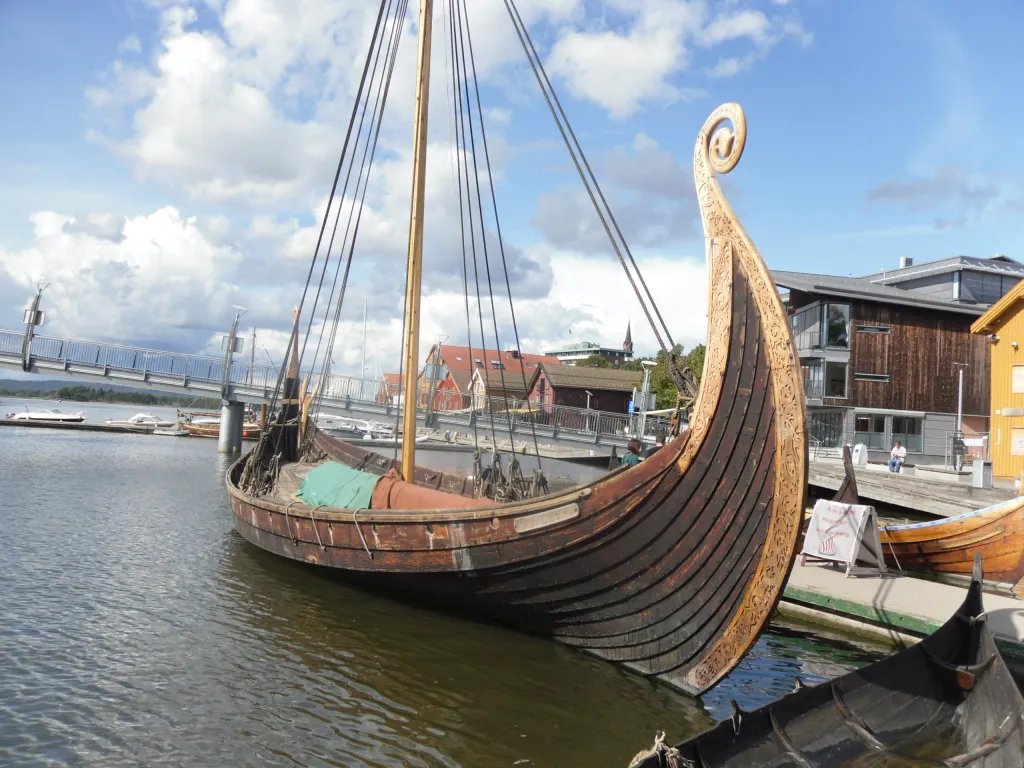
Historical and Special Sailboats
Tall ships and gaffers.
Tall Ships are large, traditionally rigged sailing vessels with multiple masts, typically square-rigged on at least one of their masts. Some examples of these ships include the clipper, brig, and square-rigged vessels. The clipper is a fast sailing ship known for its sleek hull and large sail area, while the brig features two square-rigged masts. Square-rigged ships were known for their impressive sail area and could cover large distances quickly.
Gaffers are a subset of historical sailing vessels with a gaff mainsail as their primary sail type. This gaff-rig is characterized by a spar (pole) that extends the top edge of the mainsail, giving it a quadrilateral shape to optimize wind coverage. Gaff mainsails were commonly used in England and influenced the development of other sailing vessels.
Classic and Antique Sailboats
Classic and antique sailboats refer to older, traditionally designed sailing vessels that have been preserved or restored. They often feature wooden construction and showcase a variety of rigging types, including gaff rigs and square rigs. These historical sailboats have unique designs, materials, and techniques that have since evolved or become rare.
Here are some examples of antique and classic sailboats:
- Sloop : A single-masted sailboat with a Bermuda rig and foresail
- Cutter : A single-masted vessel with a similar rig to the sloop, but with additional headsails for increased maneuverability
- Ketch : A two-masted sailboat with a smaller mizzen mast aft of the main mast
In summary, historical and special sailboats encompass a wide range of vessel types, from large, multi-masted tall ships to smaller, single-masted gaffers and classic sailboats. These vessels reflect the rich maritime history and the evolution of sailing techniques and designs over time.
Sailboat Culture and Lifestyle
Sailboat culture and lifestyle encompass a variety of aspects including racing events, leisurely cruising, and exploring new destinations. The main types of sailboats include racing yachts, cruising sailboats, and motorsailers, each offering a unique experience for sailors.
Regattas and Racing Circuits
A popular aspect of sailboat culture involves participating in regattas and racing circuits . These events create a competitive atmosphere and develop camaraderie among sailors. Racing sailboats are specifically designed for speed and agility , and sailors often team up to compete in prestigious races such as the Rolex Sydney Hobart Yacht Race or the America's Cup. Yacht clubs play an essential role in cultivating this competitive sailing environment.
Sailboat Charter and Tourism
Another facet of sailing culture is the sailboat charter and tourism industry, which allows people to experience the cruising lifestyle without owning a sailboat. Charters are offered for various types of sailboats, from family-sized cruising vessels to luxurious superyachts . Yacht sailing provides tourists with a unique travel experience, as they can explore diverse destinations, immerse themselves in local cultures, or simply relax on the open water.
Cruising sailboats are designed to provide comfortable living spaces and amenities, making them perfect for longer journeys or exploring remote destinations. Motorsailers, on the other hand, are equipped with both sails and engines, offering versatility and convenience for sailors.
Some popular sailing destinations include the Caribbean, Mediterranean Sea, and the South Pacific. These regions offer beautiful scenery, rich cultural experiences, and ideal sailing conditions.
The sailboat culture and lifestyle attract individuals who enjoy adventure, exploration, and camaraderie. From competitive racing events to leisurely cruising vacations, sailing offers diverse experiences that cater to a wide range of interests.
Frequently Asked Questions
What are the distinguishing features of different sailboat classes?
There are various sailboat classes, each with its own distinguishing features. Monohulls, for example, are the most common type of sailboat and have a single hull. Multihulls, such as catamarans and trimarans, have two or three hulls, respectively. These differences in hull design often affect the boat's stability, speed, and maneuverability.
Which sailboat types are best for novice sailors?
Novice sailors often benefit from starting with smaller, more manageable boats. Sailing dinghies and daysailers are popular choices due to their simple rigging and ease of handling. These boats typically have a single mast and a limited number of sails, making them ideal for beginners to learn sailing basics.
What are common types of small sailboats ideal for day sailing?
For day sailing, small sailboats such as sailing dinghies, day sailers, and pocket cruisers are ideal options. These boats usually range between 12 and 25 feet in length and offer simplicity, ease of handling, and portability. Examples of common day sailing boats include the Sunfish, Laser, and O'Day Mariner.
How do the purposes of various sailboat types vary?
Sailboats serve different purposes based on their design, size, and features. Daysailers and dinghies are ideal for short trips, sailing lessons, and casual outings. Racing sailboats, with their lighter weight and streamlined design, are built for speed and competition. Cruising sailboats, on the other hand, are designed for longer voyages and often include living quarters and additional amenities for comfortable onboard living.
What is considered the most popular class of sailboat for recreational use?
The most popular class of sailboat for recreational use often varies depending on individual preferences and local conditions. However, monohulls are commonly preferred due to their widespread availability, versatility, and affordability. Within the monohull class, boats like the Sunfish, Laser, and Catalina 22 are popular choices for their ease of use and adaptability to various sailing conditions.
Could you describe a sailing dinghy designed for two people?
A two-person sailing dinghy typically has a simple rig with a single mast and one or more sails, making it easy to handle for both experienced and novice sailors. The RS Venture , for example, is a popular choice for two-person sailing. It features a spacious cockpit, durable construction, and simplicity in its rigging and control systems. These characteristics make it an excellent option for recreational sailing, training, and even racing.
Related Articles
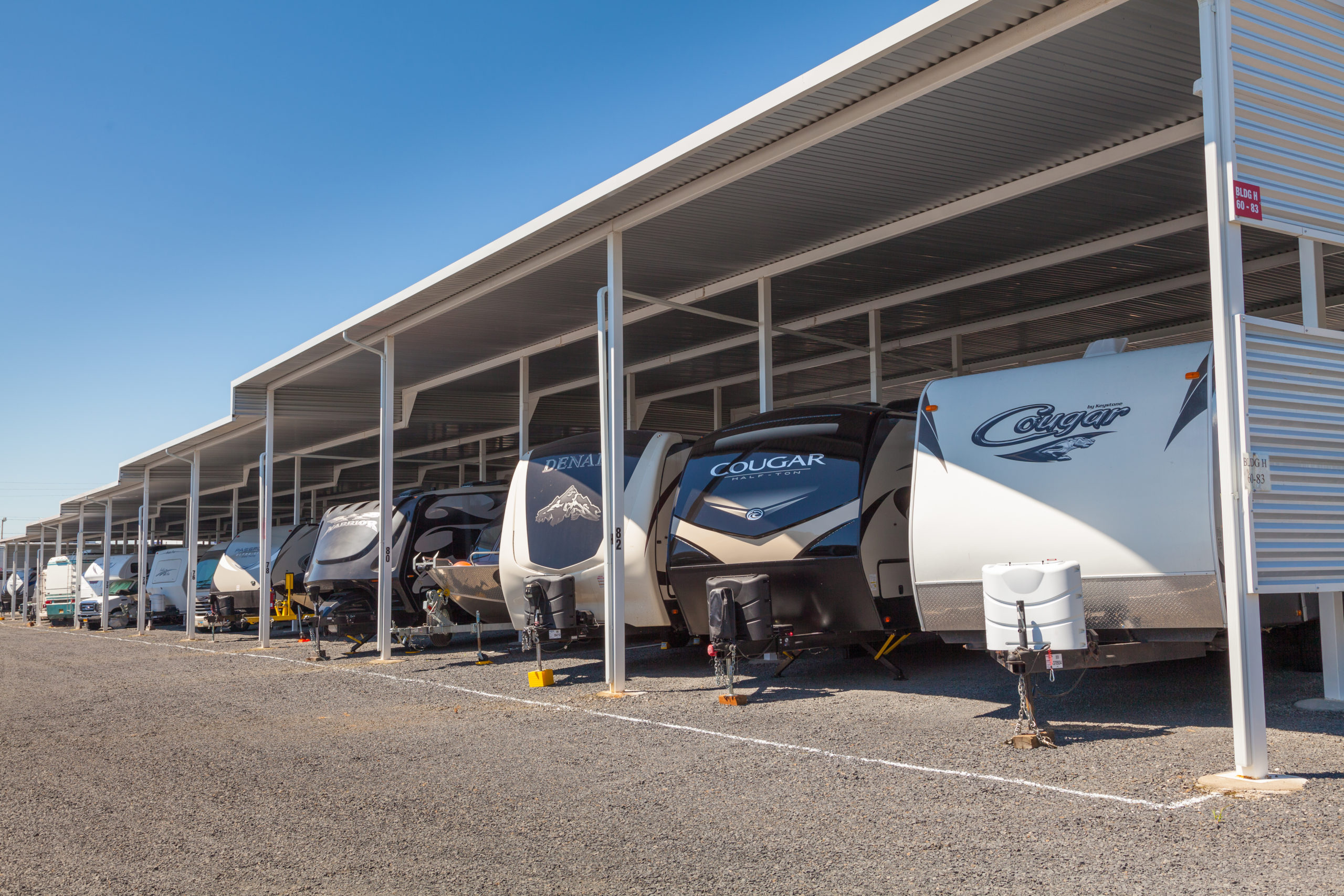
RV & Boat Storage Near Me: Top Facilities for Secure and Accessible Storage

It's Not The Size of Your Antenna-It's where you put it

Valarravette Corvette: Unveiling the High-Performance Beast

Sebastian Inlet State Park: A Comprehensive Guide
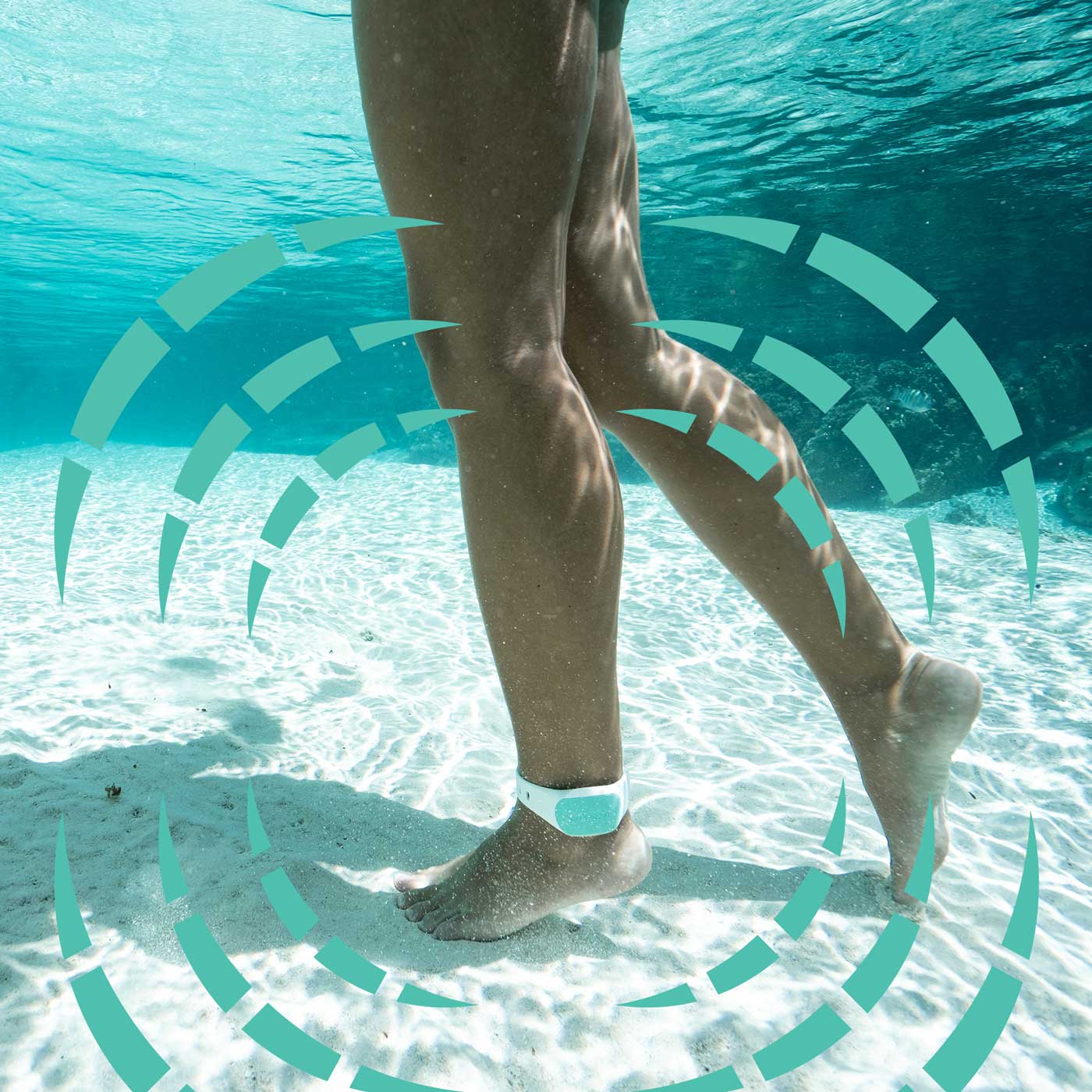
Sharkbanz: The Ultimate Guide to Shark Protection Technology
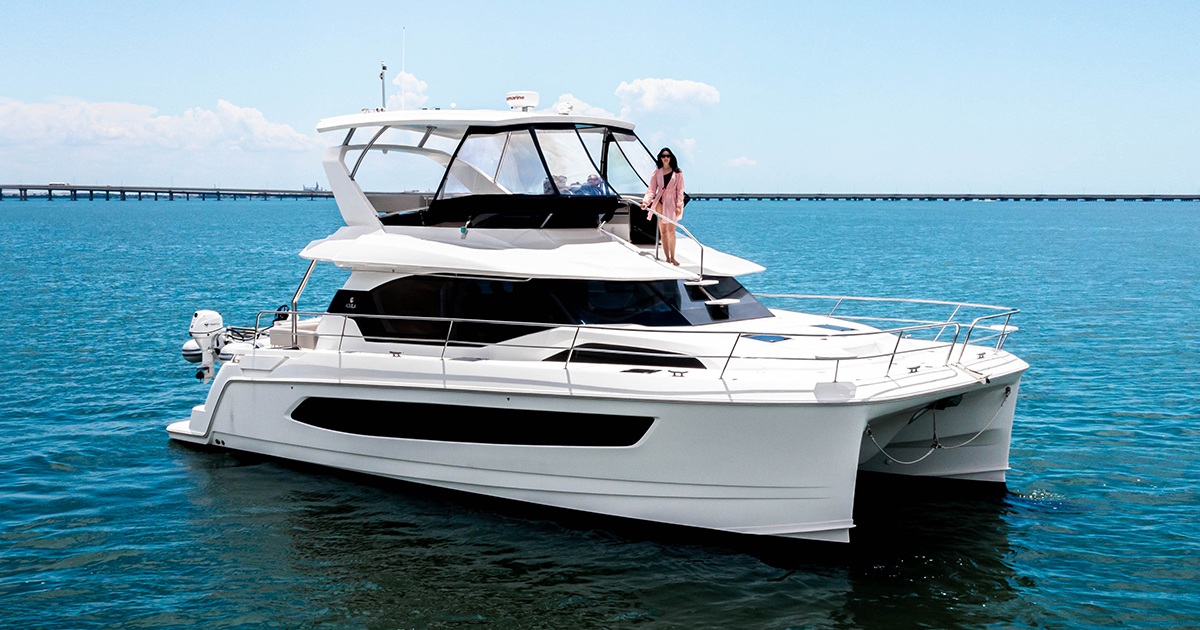
Aquila 44: Exploring the Luxury Power Catamaran Experience

Hydrafoil for Boats: Comprehensive Guide to This Maritime Innovation
Biggest Cruise Ships: A Comprehensive Guide to Modern Floating Cities
13 Best Cruising Sailboats in 2023 & Why They're Better
If you're interested in long-distance exploration at sea, cruising sailboats are a popular choice. The best cruising sailboats are designed to provide comfort, durability, and seaworthiness. From high-performance cruisers with heirloom-quality materials to versatile boats, there's something in this lineup for your skill level and preference. These boats have raised the bar and are set to provide memorable sailing experiences.
The best cruising sailboats are:
Beneteau Oceanis Yacht 54
Jeanneau sun odyssey 490, x-yachts x49, dufour grand large 460, hallberg-rassy 340, tartan 4300, island packet 420, fountaine pajot saona 47, lagoon 450f, bavaria cruiser 46.
One aspect that sets these sailboats apart is their focus on innovation and performance. Let's take a closer look at the 13 best cruising sailboats of 2023 and explore what makes them stand out from the rest.
- These cruising sailboats feature spacious interiors, sturdy hulls, and versatile sail configurations.
- These sailboats are equipped with navigation and communication systems, as well as additional features such as watermakers, generators, and refrigeration systems.
- You can buy these boats for anything between $250,000 and $1.4 million or more.
- A cruiser is a type of sailboat that is generally larger and more comfortable than a racing sailboat.
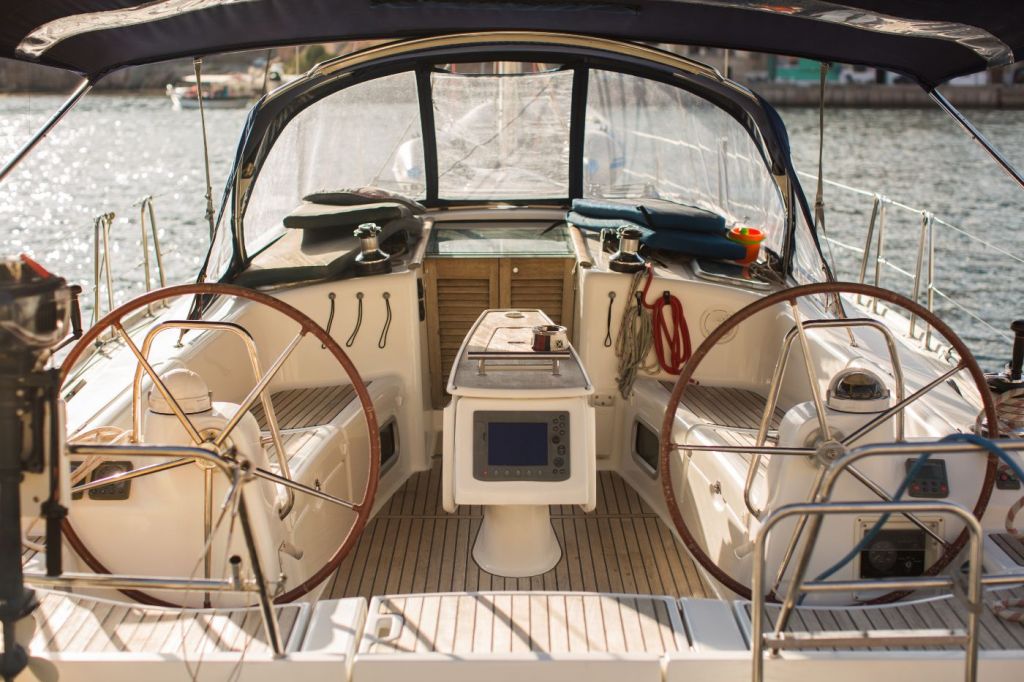
On this page:
Best cruising sailboats, why these sailboats are better, the most popular cruising sailboat.
In this section, we'll explore the 13 best cruising sailboats of 2023, highlighting their unique features and reasons why they stand out in the market.
Comfortable living space : A cruising sailboat should have a comfortable living space that can accommodate the crew for an extended period of time. This includes a spacious cabin, galley, head, and berths.
Seaworthiness : A cruising sailboat should be able to handle rough seas and adverse weather conditions. It should have a sturdy hull, a well-designed keel, and a balanced rigging system.
Sailing performance : A cruising sailboat should have good sailing performance, which includes speed, stability, and ease of handling. It should be able to sail efficiently in different wind conditions.
Safety features : A cruising sailboat should have safety features such as a reliable navigation system, adequate safety equipment, and a strong anchoring system.
Storage space : A cruising sailboat should have enough storage space for provisions, equipment, and personal belongings. This includes storage lockers, shelves, and compartments.
Energy efficiency : A cruising sailboat should have an energy-efficient system that can provide power for lighting, electronics, and other equipment without relying on shore power.
Durability : A cruising sailboat should be built to last and withstand the wear and tear of extended cruising. This includes using high-quality materials and construction techniques.
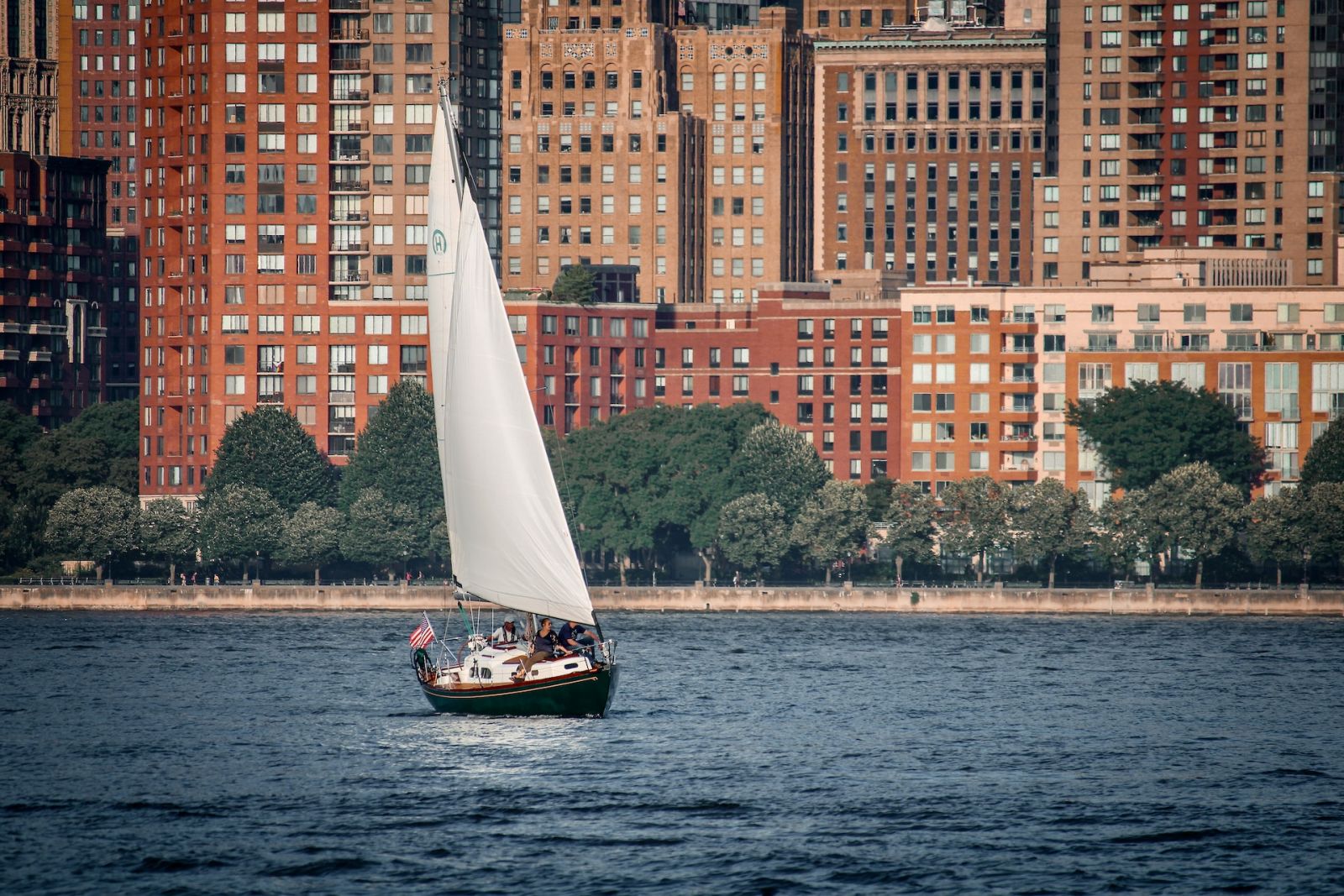
The Amel 50 is known for its luxurious and comfortable accommodations, and excellent seaworthiness. Its unique features include a spacious interior with modern design, an innovative cockpit layout, and a powerful yet easy-to-handle sailing system.
The Amel 50 has a unique feature called the "Amel Easy Docking" system, which allows for easy and precise maneuvering in tight spaces. It also has a unique "Amel Silent Block" system, which reduces noise and vibration for a more comfortable ride.
The Oyster 565 is known for its high-quality construction, attention to detail, and luxurious accommodations, as well as its excellent safety features. It provides you with exceptional performance and comfort. Its sleek hull design offers fast, stable sailing, while the spacious, high-quality interior ensures you'll enjoy your time onboard.
The Oyster 565 has a unique feature called the "Oyster Deck Saloon," which provides 360-degree views and adequate natural light in the living space. It also has a unique "Oyster DNA" system, which allows for customization of the boat to suit the owner's preferences.
With its cutting-edge design and performance, the Beneteau Oceanis Yacht 54 lets you sail in style. Its chined hull, twin rudders, and easy handling make it a pleasure to sail, while the spacious, modern interior ensures your comfort on longer voyages.
The Beneteau Oceanis Yacht 54 has a unique feature called the "Dock & Go" system, which allows for easy and precise maneuvering in tight spaces. It also has a unique "Beneteau Smart Sailing" system, which includes a suite of electronic and navigational tools for easy and safe sailing.
The Jeanneau Sun Odyssey 490 is known for its hard chine design, and excellent performance and stability. It offers innovative design and functionality. Its walk-around decks, unique cockpit layout, and high-quality interior make it ideal for cruising in comfort.
The Jeanneau Sun Odyssey 490 has a unique feature called the "Walk-Around Deck," which allows for easy and safe movement around the boat. It also has a unique "Jeanneau Sun Loft" system, which provides a flexible and customizable living space.
The X-Yachts X49 combines performance, luxury, and comfort. It is known for its high-performance hull design, excellent speed and stability. With its fast hull, advanced sailing systems, and plush interior, the X49 is perfect for both racing and cruising.
The X-Yachts X49 has a unique feature called the "X-Yachts Pure X" system, which includes a suite of performance-enhancing features such as a carbon fiber mast and boom, a racing-inspired sail plan, and a deep lead keel.
The Dufour Grand Large 460 provides you with both comfort and performance. It is known for its innovative design, featuring a self-tacking jib and retractable bow thruster for easy handling. Its spacious interior, ergonomic deck layout, and powerful sailing capabilities make it an excellent choice for long-distance cruising.
The Dufour Grand Large 460 has a unique feature called the "Dufour Easy" system, which includes a suite of tools for easy and safe sailing, such as a self-tacking jib and retractable bow thruster. It also has a unique "Dufour Grand Large Lounge" system, which provides a flexible and customizable living space.
Experience easy handling and modern style with the Hanse 458. It is known for its sleek and modern design, self-tacking jib, large swim platform. Its innovative self-tacking jib, efficient deck layout, and comfortable accommodation make it perfect for family cruising.
The Hanse 458 has a unique feature called the "Hanse Easy Sailing" system, which includes a suite of tools for easy and safe sailing, such as a self-tacking jib and retractable bow thruster. It also has a unique "Hanse Individual Cabin Concept" system, which allows for customization of the living space to suit the owner's preferences.
Known for its quality and craftsmanship, the Hallberg-Rassy 340 offers you comfort and performance in a compact package. It is known for its classic design, long waterline, spacious cockpit, and comfortable and practical accommodations. With its stable hull, efficient sailplan, and well-designed interior, it's ideal for long-range cruising on a smaller scale.
The Hallberg-Rassy 340 has a unique feature called the "Hallberg-Rassy Hardtop," which provides protection from the elements and a spacious cockpit area. It also has a unique "Hallberg-Rassy Quality Concept" system, which includes high-quality construction materials and techniques for durability and longevity.
The Tartan 4300 delivers a perfect balance of performance and comfort. It is known for its high-quality construction, cored hull and deck for added strength and durability. Its epoxy-infused hull provides lightweight strength, while the spacious, beautifully crafted interior ensures a luxurious cruising experience.
The Tartan 4300 has a unique feature called the "Tartan Infusion Molding Process," which allows for precise and consistent construction of the hull and deck for added strength and durability. It also has a unique "Tartan Smart Sailing" system, which includes a suite of electronic and navigational tools for easy and safe sailing.
For those who value comfort and classic design, the Island Packet 420 won't disappoint. It is known for its full keel design, excellent stability and seaworthiness. Its spacious, well-appointed interior and solid construction make it a reliable choice for long voyages.
The Island Packet 420 has a unique feature called the "Island Packet Full Foil Keel," which provides excellent stability and seaworthiness. It also has a unique "Island Packet Anchoring System," which includes a powerful windlass and a custom-designed anchor roller for easy and safe anchoring.
The Fountaine Pajot Saona 47 catamaran offers you the perfect combination of speed, stability, and space. Its sleek hulls and spacious, well-designed living areas make it an excellent choice for cruising with friends and family.
The Fountaine Pajot Saona 47 has a unique feature called the "Fountaine Pajot Helmsman's Position," which provides excellent visibility and control of the boat. It also has a unique "Fountaine Pajot Lounge Deck" system, which provides a spacious and comfortable living space.
Cruise in style on the Lagoon 450F, known for its spacious accommodations and excellent performance under sail. With its distinctive flybridge, comfortable cabins, and efficient sailing system, it's ideal for multi-day getaways.
The Lagoon 450F has a unique feature called the "Lagoon Flybridge," which provides excellent visibility and control of the boat. It also has a unique "Lagoon Spacious Cockpit" system, which provides a comfortable and practical living space.
The Bavaria Cruiser 46 is a versatile and stylish cruiser that offers excellent performance and comfort. It is known for its innovative design, featuring a drop-down transom for easy access to the water. Its user-friendly sailing systems, attractive interior, and practical deck layout make it an ideal choice for a wide range of cruising adventures.
The Bavaria Cruiser 46 has a unique feature called the "Bavaria Hybrid Propulsion System," which allows for energy-efficient sailing and propulsion. It also has a unique "Bavaria Smart Storage" system, which provides enough storage space for gear and supplies. Additionally, the Bavaria Cruiser 46 has a unique "Bavaria Vision" design concept, which includes a spacious and comfortable living space with plenty of natural light and ventilation.
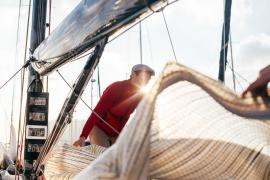
Cruising Gear Essentials
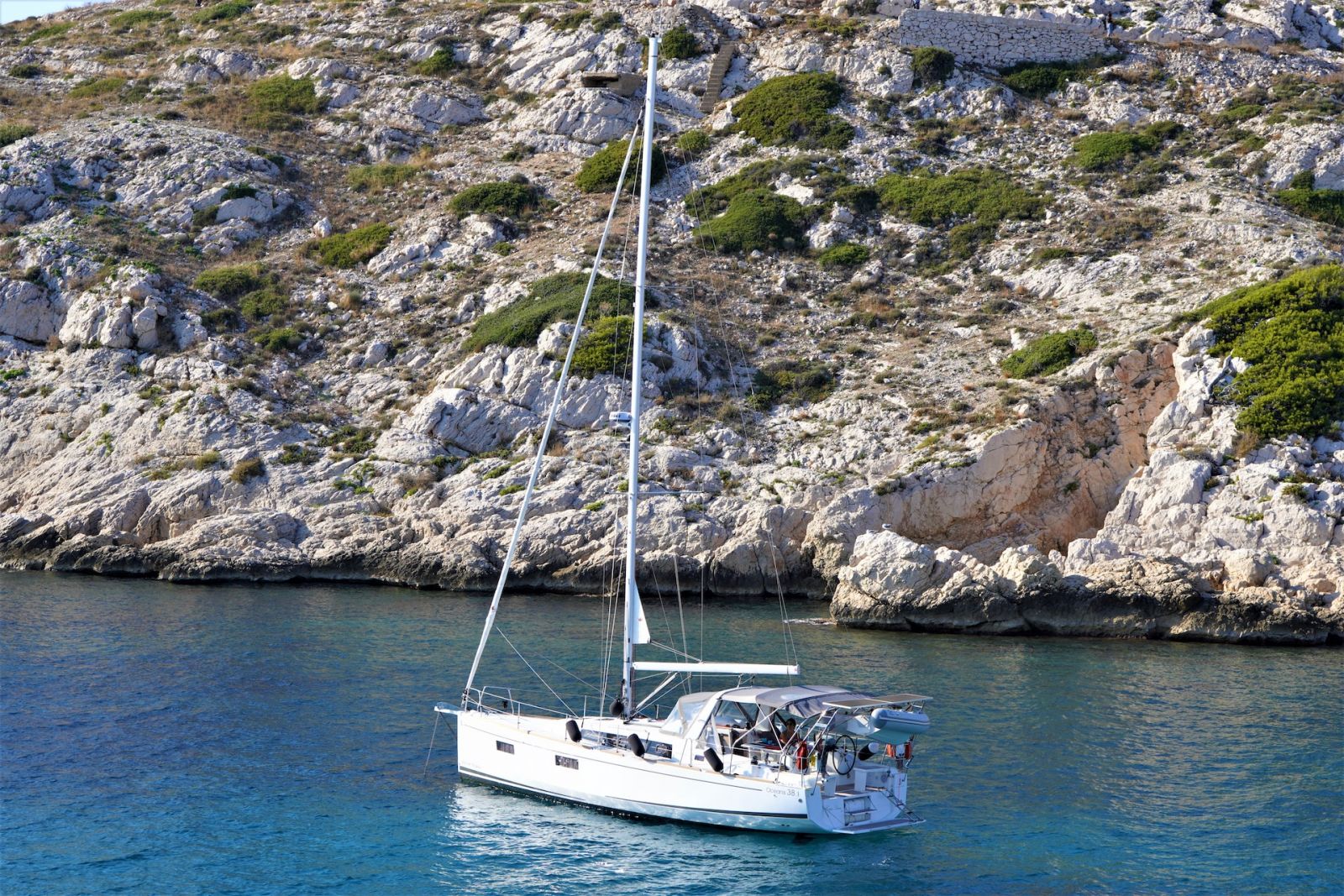

Key features to look for
Versatile hull design.
This allows your sailboat to navigate in various conditions, making it ideal for long-distance cruising.
Efficient sail plan
By having a well-designed sail layout, your boat provides better control, handling, and propulsion.
High-quality construction
Top-quality materials and craftsmanship not only increase the boat's durability, but also enhance its performance.
Comfortable accommodations
When you spend extended periods at sea, you want your sailboat to feel like home, with adequate living space and modern amenities. For an extended sailing trip, you are going to need these 41 sailboat cruising essentials .

How they improve sailing experience
Easier boat handling.
Advanced rigging systems, self-tacking jibs, and other innovative technologies make it easier for you to manage your boat, allowing for more time spent enjoying the sea.
Increased safety
State-of-the-art navigation equipment and weather forecasting systems help you anticipate environmental changes, ensuring a safe voyage.
Sustainable power options
Many sailboats in 2023 come with solar panels, hydro generators, or hybrid propulsion options, reducing your environmental impact and providing more sustainable choices while out at sea.
Integrated connectivity
These boats boast digital systems that allow you to stay connected, monitor your journey, and update your friends and family with your adventures.
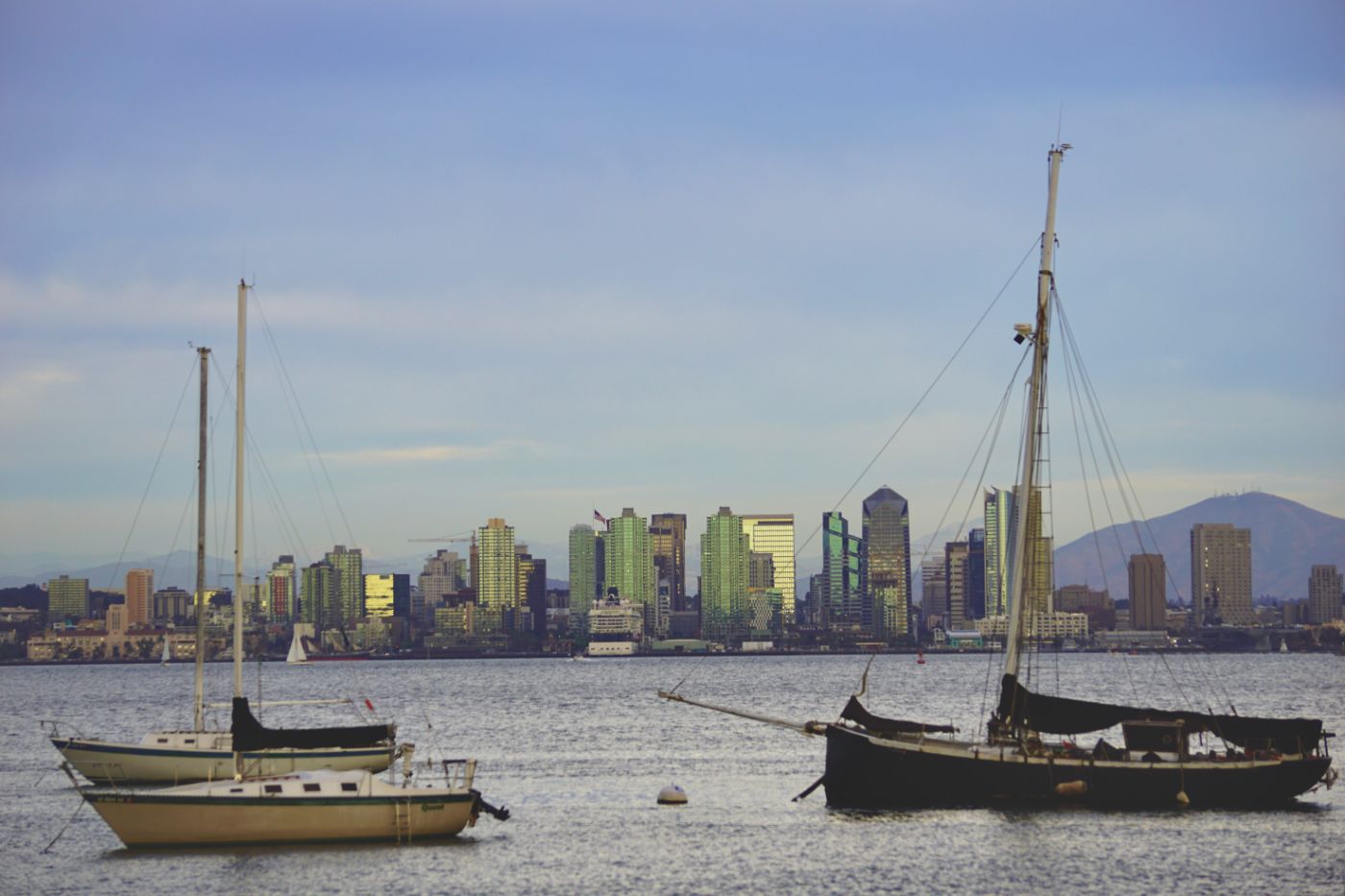
Their advantages over others
Better performance.
These boats have been designed with speed, stability, and maneuverability in mind, ensuring top-notch sailing experiences.
Longevity and value
Since they're built with high-quality materials and expert craftsmanship, these boats are certain to last, making them a wise investment.
Customization options
Many of these sailboats offer customizable features, allowing you to tailor the boat to your specific needs and preferences.
Award-winning designs
Several of these boats have received prestigious awards for their innovative features and performance, making them the ultimate cruising sailboats for any passionate sailor.
The Island Packet 420 and Lagoon 450F are the two most popular cruising sailboats known for their comfort, seaworthiness, and versatility.
The Island Packet 420 is a well-regarded cruising sailboat that has a loyal following. It is known for its spacious interior, comfortable accommodations, and good sailing performance.
The Island Packet 420 features a full keel and a cutter rig, which makes it a stable and seaworthy vessel that can handle a variety of weather conditions. The sailboat has a large master cabin, a well-equipped galley, and a comfortable salon area, making it a popular choice for those who enjoy extended periods of time at sea.
The Lagoon 450F is a popular choice for those who want to explore the world by boat. It is known for its spacious interior, stable platform, and good sailing performance.
The Lagoon 450F features a catamaran hull design, which provides a stable and comfortable platform that is ideal for long-distance cruising. The sailboat has a spacious cockpit, multiple sleeping quarters, and a well-equipped galley, making it a popular choice for those who want to travel with family or friends.
The best size cruising sailboat
The best size cruising sailboat is in the range of 40 to 50 feet. Sailboats in this size range are large enough to provide comfortable accommodations for an extended period of time at sea, yet small enough to be easily handled by a small crew or even single-handed.
Sailboats that are too small may lack the necessary amenities and space for long-distance cruising, while sailboats that are too large may be difficult to handle and require a larger crew. Ultimately, the best size cruising sailboat will depend on individual preferences, needs, and intended use, and it's important to consider factors such as comfort, safety, and ease of handling when choosing a cruising sailboat.
The safest cruising sailboat
Hallberg-Rassy 340, and Island Packet 420 are considered among the safest cruising sailboats. These sailboats are known for their sturdy construction, well-designed hulls, and reliable systems. They are also known for their ability to handle a variety of weather conditions and their comfortable accommodations. However, safety can also depend on the boat maintenance, and the skill and experience of the crew.
Leave a comment
You may also like, 41 sailboat cruising essentials for long trips.
In this post I list the items you are unlikely to have if you have never done bluewater or long-term cruising before. There are some essential safety product and …

What's the Best Size of Sailboat for Coastal Cruising?

The Best Boat for Cruising the Mediterranean (3 Types)
The best beginner sailboats for ocean cruising (under $25,000), own your first boat within a year on any budget.
A sailboat doesn't have to be expensive if you know what you're doing. If you want to learn how to make your sailing dream reality within a year, leave your email and I'll send you free updates . I don't like spam - I will only send helpful content.
Ready to Own Your First Boat?
Just tell us the best email address to send your tips to:

Sailboats For A Family Of 6 – Top 4

Sailing as a family of six can be exciting for most of us. More people can mean more fun, better role allocation, and better mutual support. But, which sailboat to choose for the travel?
The ideal sailboat for a family of 6 should be at least 30 ft long and include space for sleeping, showers, and toilets. The Catalina MK II, Beneteau Oceanis, and Lagoon 42 are highly recommended for mid-sized families.
What makes a sailboat perfect for a family of six? Well, there are numerous factors to consider.
The 4 Best Sailboats For A Family Of 6
After researching several mid-sized sailboats, we have listed four sailboats for your consideration.
1. Beneteau Oceanis 38.1
The Beneteau Oceanis 38.1 is a compact boat that is ideal for a family of six with enough space for two more guests.
These yachts come in handy and have adequate amenities to satisfy all your family’s needs. What is exceptional about this boat is its stability. Whether you are planning to cross the Pacific or hop around different islands, the stability of this vessel is great for handling all weather conditions.
Families that have used this model have found the stability exceptional. There is also a vast swimming area which is great for families with kids. The sailboat contains three cabins and two bathrooms.
Want to get a first-hand view of how things could turn in this sailboat? You should watch this video:
Keep reading for more sailboats and videos of families sailing the world.
2. Lagoon 42 & 47
Lagoon catamarans are known for their ergonomics and ease of movement in ample space. These catamarans can accommodate up to 12 guests and have four cabins and three bathrooms on average. Some of them have six cabins and five bathrooms, depending on the model.
What is so special about these catamarans is their stability and the excellent deck layout. The deck is perfect for families to take multiple views of the ocean. Lagoons are well-performing and ideal for sailors with moderate experience.
These catamarans are over 40 ft in length and have a center cockpit. The amount of space and different areas on this boat will be great for a family of six to spread out. Your privacy is not compromised anywhere on this vessel.
The only precaution I recommend is to be careful docking since it is so large. It will be much more different than a typical 30 ft monohull.
To get a glimpse of this boat, watch this video:
A family of six takes this boat to sail with their four kids, and it has never let them down.
3. Catalina 36 MK II
Want to take a well-known sailboat for your vacation? The Catalina MK II is your solution. This is one of the most widely used sailboats that families trust in terms of convenience, amenities, costs, and durability.
The sailboat consists of two cabins and one head. This may seem on the smaller side, but the Catalina MK II is 36 ft in length, giving your family plenty of space to spread out. One of the biggest things to consider when there are six of you is overall space.
The hand-laid hull is solid fiberglass. Vinyl ester resin is used on the outer plies, underneath the gel coat, because it better resists osmotic blistering than polyester.
The saloon measures 13′ 4″ long from the companionway to the forward stateroom, and the maximum headroom is 6′ 5″. This is fantastic head space.
This would be my first choice if I had a family of six!
4. Beneteau 49 Monohull
If I were to recommend a next-gen sailboat that fits all your needs and the itinerary, I’d blindly go with the Beneteau 49 Bluewater Monohull Sailboat. Passengers and sailors proudly remark on this sailboat as an exceptional monohull. It is about 50 feet in length and accommodates medium to large-sized families.
Several families that have completely moved to live on boats, go with these broad and recreational boats. Be it weeks or months, you can stretch and relax in comfort. This is also great for families that need privacy.
Remember, more space, more privacy.
If you were to purchase one of these new from Beneteau, you could choose between two options. The first option has 3 cabins and 2 heads, and the second option has 2 cabins and 2 heads.
I am not sure about the price on this one, but it will definitely be six figures if you buy it new.
How To Choose A Sailboat For A Family Of 6?
Choosing the perfect sailboat for a family of 6 requires assessment of factors like safety, amenities, space, comfort, entertainment, and ease. Your requirements are vital in identifying the ideal model for your family.
Some use sailboats to sail across the ocean or take a short vacation. However, a lot of people choose to live on sailboats and need vast spaces or trailers to move whenever required.
Here is a list of 6 items to consider when selecting a sailboat for a family of 6:
- Size – This is the first and foremost specification of a sailboat to pay attention to. A family of six needs a sailboat of at least 30 ft in length. If you are planning to live on it, you should go with a sailboat over 40 ft in length.
- Safety – Does the sailboat provide adequate safety amenities? Is it equipped as per the safety laws? Check these questions as you review the boat. Some sailboats also have safety nets to safeguard passengers during emergencies, which is a nice feature.
- Cockpit look – The layout of the cockpit is of paramount importance when you are sailing and need to watch your children and the seas. This is one of the reasons that several families choose recreational catamarans. They have great views from the large cockpit area.
- Hull – Are you someone sailing most of the time? You may need a multi-hull sailboat that gives more speed and a smoother ride. If you are planning to sail across an ocean, you need to go with multi-hulled boats that are large and provide more comfort on the go. This is all about personal preference.
- Amenities – As you travel with kids, it is essential to have private bathrooms, bedrooms, and space. Options for activities like diving, snorkeling, and kayaking are great to have for entertainment. Find out if your sailboat has the space to let you barbeque and keep your family entertained.
- Pet-friendly – Most families planning to live on sailboats move with their pets. In such instances, you need to find out if the sailboat has enough room for pets to move around and live.
From the technical perspective, ensure that you are aware of the heeling nature of the boat. Some conventional sailboats heel excessively and affect the stability during rough currents. Go with modern sailboats that have moderate heels and also prioritized stability. To find out more check out my article on boats that heel.
If you are planning to purchase a sailboat only for vacations, a monohull is sufficient, but it is the decision of your family with regard to amenities.
What Is A Good Size Sailboat To Live On?
A good size sailboat to live in is about 30 feet in length for individuals and above 40 feet in length for families.
Solo sailors wanting to enjoy their free times tend to go for shorter vacations. In such instances, they do not go behind excellent amenities. Instead, they go with smaller sailboats that are easy to maintain, stable, and more affordable.
For families, there are numerous considerations, and it is also essential to satisfy the needs of everyone. As a result, providing ample spaces to accommodate them would solve the majority of their needs.
What Is A Good Size Sailboat For The Ocean?
The ideal size of a sailboat for the ocean is 35-45 feet in length. This length helps fit cargo, handle rough conditions, and achieve high hull speeds. Make sure you have the crew available to handle a larger boat.
Whether you are traveling solo or as a family, a sailboat of this length is more likely to give you the best view and protection at all times. Always go with catamarans when you sail across an ocean as they are extremely stable and easy to maintain.
Are you planning to sail around the world via the ocean? You should go with sailboats that have ample spaces to stock food, water, and other essentials for several weeks.
How Big Of A Sailboat Can A Couple Sail?
The ideal size of a sailboat for a couple is 35-40 feet in length. This sized sailboat is perfect for stocking items, engaging in recreational activities, and safety.
A couple with no kids can have a great time in sailboats of at least 30 feet in length. However, couples with kids need more amenities such as adequate cabins, bathrooms, and entertainment elements to keep everyone engaged while sailing for long periods.
Choosing sailboats that are smaller can pose space constraints. Contrarily, larger sailboats can be too big to handle during rough currents.
Final Thoughts
Whether you rent or purchase a sailboat, it is essential to find if it is worth every penny spent. Individual priorities can significantly differ. However, it is essential to list them and gain consensus before purchasing one.
If you are new to choosing sailboats, Lagoon, Beneteau, and Bali catamarans are your starting points. Choose the size based on the number of members and the duration of the trip. If you are planning to live on your sailboat, durability is more important than affordability.
Set your goals, and then begin hunting that perfect sailboat down for a family of six!
Boatlifehq owner and author/editor of this article.
Recent Posts
Sailboat Racing - Rules & Regulations Explained
Sailboat racing, a blend of skill, strategy, and adherence to intricate rules and regulations, offers a thrilling and intellectually stimulating experience on the water. Navigating through the...
What is the best sailboat to live on? Complete Guide
Embarking on the journey of living aboard a sailboat requires careful consideration of your budget, desired amenities, and storage options. This guide offers a concise, step-by-step approach to...
What Size Boat Do I Need? (Family size Chart)
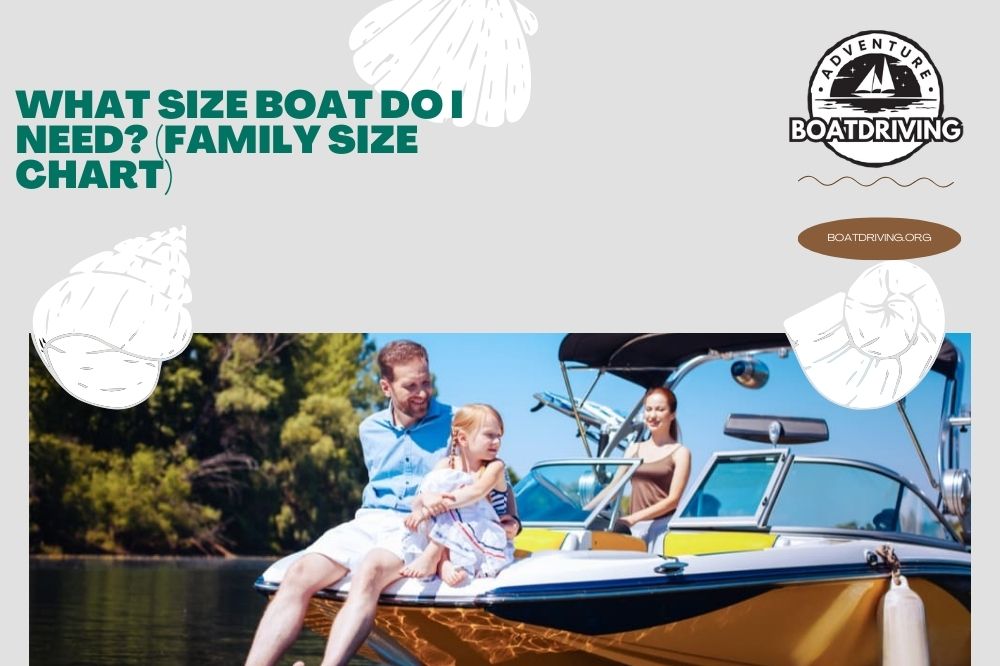
Owning a boat is an exciting experience, but many novices question what size boat do I need? Boat dimensions are only one of many doubts you will face when deciding to purchase one.
You should consider a few factors, including your preferences, the number of people who will use a boat, its type, and future purpose. It is also vital to determine how long you plan to use it during a year and what distance you plan to travel regularly.
Table of Contents
What Is The Best Boat Size For Me?
Boat size classes, the boat size per purpose, the boat size per passenger number.
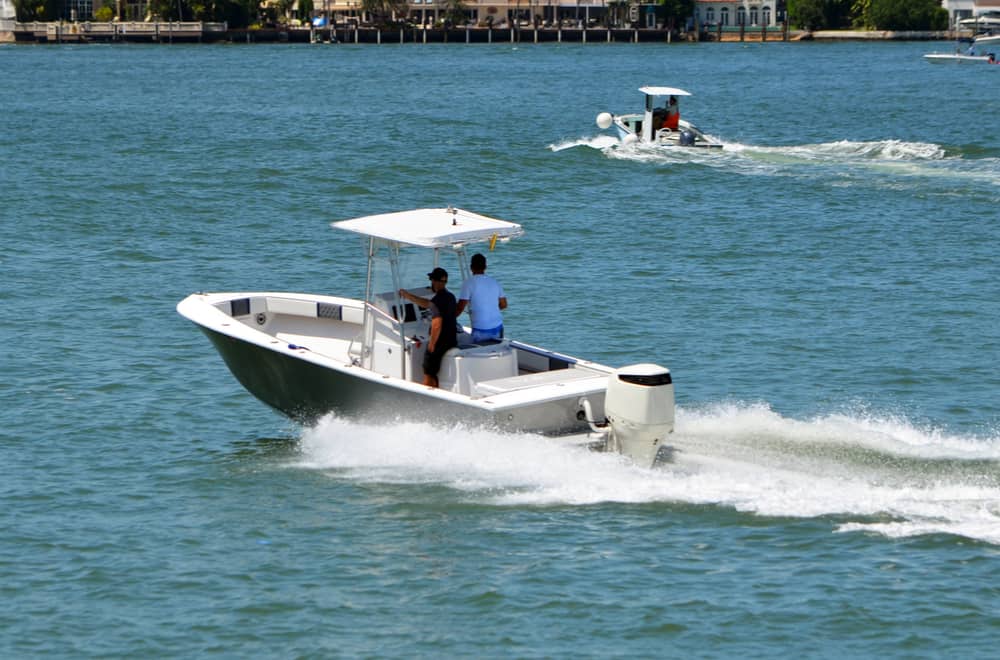
The boat size you should choose will depend on several factors, including:
You can pick out a boat belonging to one of the four classes:
- Class A includes boats less than 16 feet (5 m) long
- Class 1 includes boats with a length of 16 to 26 feet (5 – 7.9 m)
- Class 2 includes boats ranging between 26 and 40 feet (7.9 – 12.2 m)
- Class 3 includes boats with a length from 40 to 65 feet (12.2 – 19.8 m)
Your experience level
The ideal boat size for you primarily depends on your experience level. Only that way, you can enjoy safe sailing without unwanted surprises. Novices should always pick out smaller vessels that are more comfortable for maneuver.
The next thing to consider is the environment you expect to sail in. If you prefer spending time in calm waters, you should buy a smaller boat . Do the homework and determine the ideal boat length for the lake, river, or open sea and particular models limitations.
The rule of thumb is that you need a 17 to 22 feet (5.2 – 6.7 m) long vessel for calm bodies of water, like rivers and shallow lakes . If you plan to sail big lakes, seas, or the ocean, you will need a boat approximately 23 to 28 feet (7 – 8.5 m) in length.
Keep in mind that some protected locations restrict the boat types and sizes. Therefore, it is wise to check local safety rules and regulations regarding boat size restrictions.
Boating activity
As you can guess, a boat size directly depends on the activity you want to use it for. The primary thing to consider is accessories for watersports or necessary fishing gear besides the people on board.
Towing and storage
The boat length you want can be limited with the storage space at your disposal. Plus, it should fit a trailer you have, and your vehicle needs to be strong enough to tow the boat effortlessly.
Always check the available slip space in a nearby marina since it can be a limiting factor for the boat size you want to buy. For instance, you can’t buy a 40 feet (12.2 m) long vessel if there is no available dock space for this particular size.
Your budget
Regardless of your wishes, the budget will always be a limiting factor when it comes to the boat length. Remember that the price is higher for longer vessels, so you should calculate your possibilities before shopping.
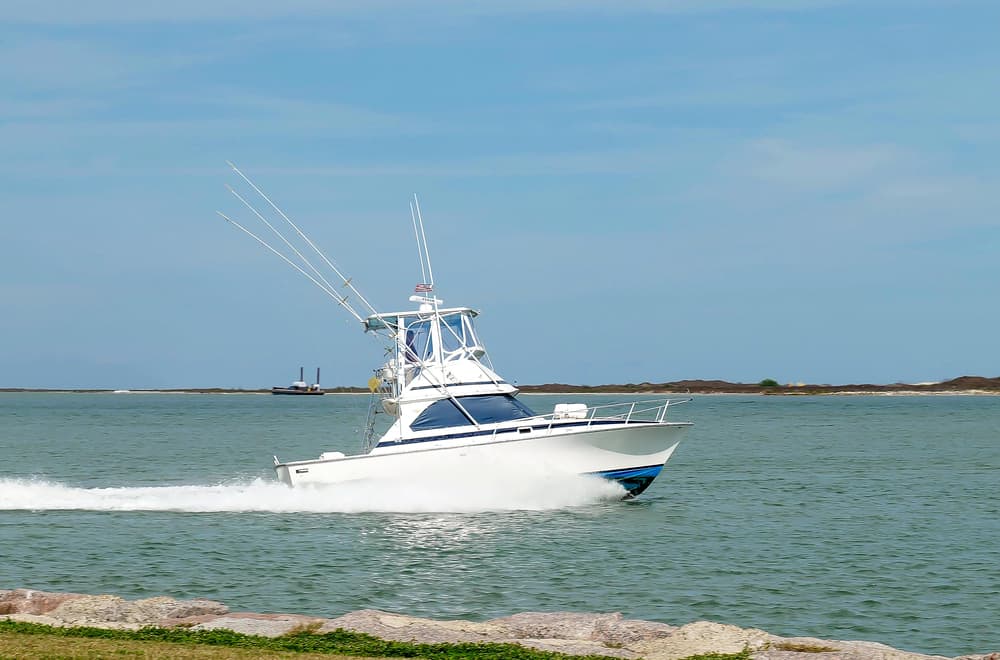
As you can guess, you should look for different boat sizes , depending on their purpose. For instance, you will need a more sizable vessel if you plan to carry additional equipment besides passengers. Let’s see.
Off-shore fishing boat size
If you need a boat for off-shore fishing, you should look for at least 30 feet (9 m) long model. Such a robust vessel can handle rough weather conditions and heavy waves. You should look for a luxurious and comfortable model with enough space for fishing accessories.
Inshore fishing boat size
The best boat for inshore and river fishing needs to be 17 to 22 feet (5.2 – 6.7 m) long. It should have a shallow draft to reach shallow areas without deprivation passengers of comfort effortlessly.
Bay and lake fishing boat size
Bay and lake fishing requires a versatile boat designed with more horsepower and additional room for a comfortable, longer family stay . In most cases, a 20 to 30 feet (6 – 9 m) long model will fulfill all your needs even in rough bay waters.
Cruising boat size
Cruising and pleasure sailing boats are typically 20 to 30 feet (6 – 9 m) long. It should include comfortable lounge seating, sizable deck space for sunbathing, a handy fiberglass hardtop, and a grill.
On the other hand, you will need a vessel longer than 30 feet (9 m) if you plan ocean crossing. In that case, it needs to handle longer off-shore trips through the currents and unpredictable water.
When enjoying day cruising, you should look for a model with convenient viewing areas and more seating space. Overnight cruising requires a cabin cruiser with a sleeping area, galley, and toilet.
Water sports boat size
An ideal water sports boat size is 15 to 25 feet (4.6 – 7.6 m). This small boat should have a powerful engine of great horsepower. Since this vessel type has no storage space, you can quickly determine the necessary length by counting the people they will use it.
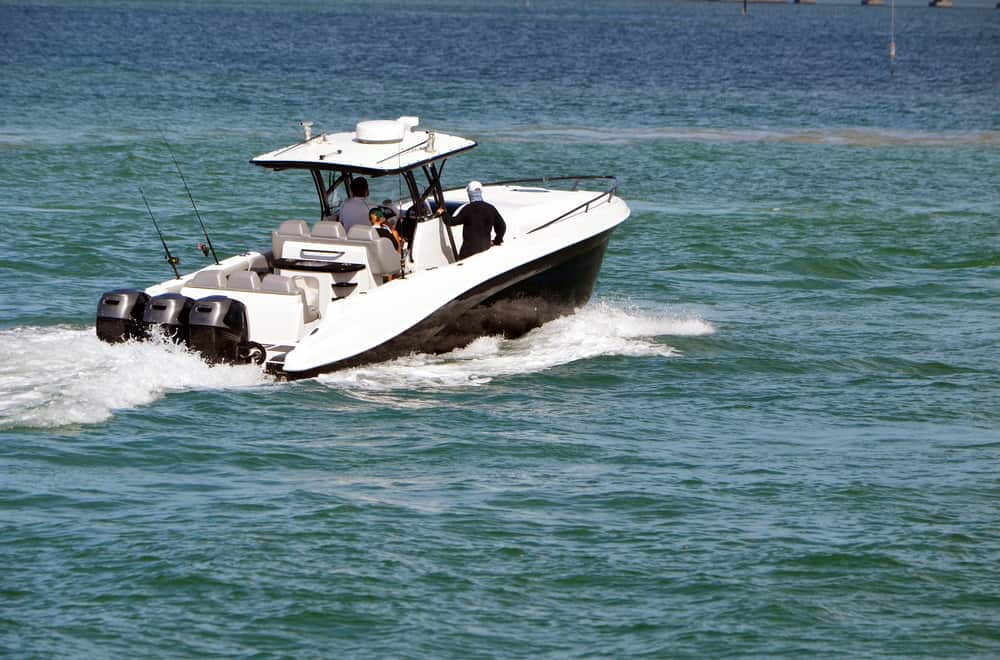
The crucial factor you should consider when choosing a boat of appropriate size is the number of people that will use it. The vessel length that fits most families ranges 15 to 30 feet (4.6 – 9 m). The rule of thumb is to pick out a bit sizable model to make all passengers feel comfortable.
Remember that boats are not the same, and seating capacity varies significantly. For instance, a full-size, 20 to 21 feet (6 – 6.4 m) long bass boat is of appropriate length for a family of five. However, the same-sized pontoon will be cozy enough for 10 to 13 passengers.
Some experts recommend novices to collect all the family and visit the store. That way, you can climb in available models and see how they fit your needs.
Keep in mind that people won’t sit all the time, so you should also calculate space for moving. Therefore, you should buy a boat 2 to 3 feet (61 – 91.5 cm) longer than your family’s current needs.
Family of three
One small family of three will enjoy in a 12 feet (3.65 m) boat. However, you should remember that its dimensions can vary from 10 to 15 feet (3 – 4.6 m), depending on the vessel type.
Family of four
An average family of four will need at least 15 feet (4.6 m) long boat. However, that size can vary from 13 to 18 feet (4 – 5.5 m), depending on its type and purpose.
Family of five
A family of five will feel comfortable in an 18 feet (5.5 m) boat, with a variation from 16 to 20 feet (5 – 6 m). Besides the boat type and activity you want to use it for, you should also consider the planned travel length.
Family of six
One 20 feet (6 m) long boat will be big enough for a family of six. Before determining the exact length, you should think about the boat type. That will be a crucial factor that will make your new vessel comfortable.
Some models will require shifting the recommended size, so their length can range from 18 to 23 feet (5.5 – 7 m), sometimes even more.
Family of eight
Depending on the purpose you need a boat for, a 24 feet (7.3 m) long model will be appropriate for most families of eight members. However, you can choose a 22 to 30 feet (6.7 – 9 m) boat related to its type.
Family of ten
A large family with ten members will need at least 26 feet (7.9 m) long boat, but that size can vary, depending on the boat type. So, it is wise to consider different models ranging from 25 to 30 feet (7.6 – 9 m) or even longer.
Family of twelve
If you are happy and have a family of twelve , you should think of a boat that can provide enough space and be comfortable for every member. One 28 feet (8.5 m) long vessel is a typical choice in this case, but you can consider various models ranging from 27 to 32 feet (8.2 – 9.7 m).
Once you decide to buy a boat , you should determine the size to fulfill your needs. In most cases, you should pick out a 15 to 30 feet (4.6 – 9 m) long model, depending on your family members and the boat’s purpose. The best option is to buy a vessel 2 to 3 feet (61 – 91.5 cm) larger than your current needs.
Related posts:
- 6 Best Cheap Boats You Can Live On Full Time
- How To Choose Sailboat Autopilot? (Types & Components)
- 8 Tips to Buy a Boat Like PRO
- How Much Does It Cost to Wrap a Boat? (Price Chart)
Leave a Comment Cancel reply
Save my name, email, and website in this browser for the next time I comment.
- Pontoon Boats
- Personal Watercraft
- nauticalknowhow
- Nautical Knots
- Tools and Calculators
5 Best LiveAboard Sailboats – Plus 8 Important Buying Considerations
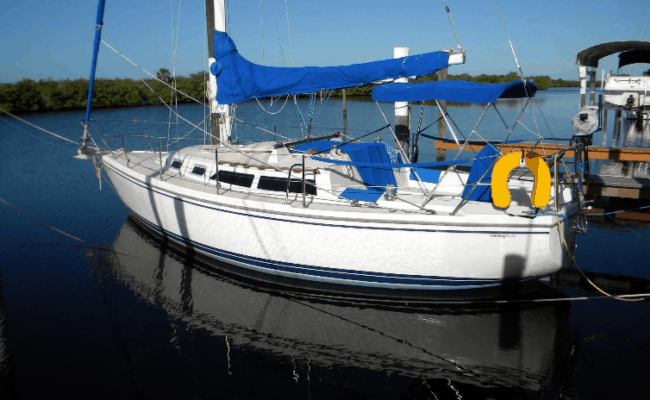
CATALINA 30
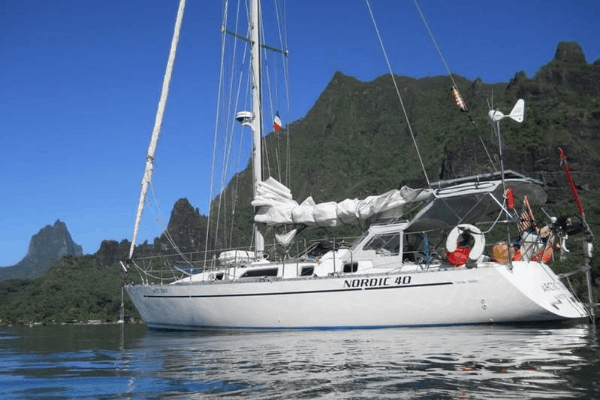
Taking the plunge to live on a sailboat is usually a huge decision, especially as living aboard a boat is an exciting lifestyle choice. However, there are lots of things to consider before buying a boat that will suit your needs and also be nearly as comfortable as a traditional home on land.
Whether this is your first time choosing a liveaboard sailboat, or you want to upgrade to a better option, you will find useful information in this article. But before we get into the best liveaboard sailboats and how to choose one, let’s see why living aboard a boat is a great lifestyle choice.
We’ve reviewed some of the best liveaboard sailboats and listed them here to help you choose one that will suit you most.
5 Best LiveAboard Sailboats
Islander 36.
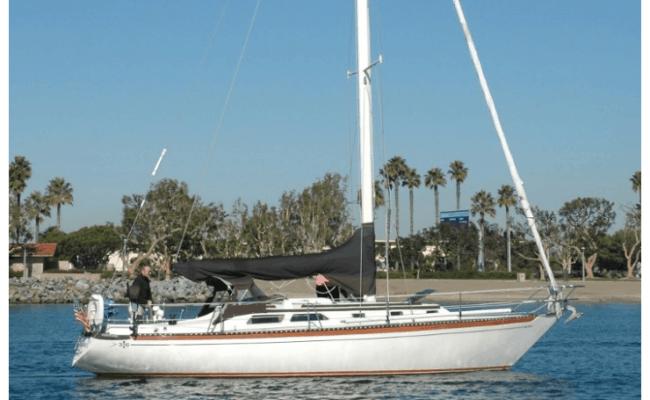
The Islander 36 is the boat for you if you want a well-rounded sailboat with impressive cruising abilities. With close to a thousand of these boats built between 1973 and 1986, the model is one of the successful and best-selling boats of the company.
These sailboats are renowned for their well-adorned cabins, with many featuring exquisite wooden interior trim. Typically, the interiors are spacious and feature a long port and starboard settee. The settee is designed to fold out into a double berth for sleeping. There is also a nav station to port with a quarter berth at the back that forms an extra seat. The boat also has a spacious master berth with an enclosed shower, making this boat one of the best liveaboard sailboats for cruising.
The interior also features plenty of drawers, plus many caned and louvered lockers. The L-shaped galley is to starboard and equipped with an icebox (that can be upgraded to a refrigerator). It also comes with a three burner LPG stove and a double sink.
Perhaps the most eye-catching feature of the interior is the companionway steps that are easy to maneuver. This is by far better than having ladders, as the steps can serve as additional separate seats when you have guests onboard.
The amount of fuel the boat’s tank can take is ideal for coastal cruising. Although Islander 36s can embark on extended trips, you will need to get additional jerry cans for that purpose.
You can check here for pricing and listings .
- LOA: 36 ft
- Beam: 11 ft 2 in
- Ballast: 5450 lbs
- Displacement: 13,450 lbs
- Sail Area: 612 sq ft
- Fuel Tank: 30 gallons
- Water Tank: 56 gallons
Boats →
If you are looking for a boat that is tough to beat feature-for-feature and size-for-size, perhaps this model will be of interest to you. Designed for comfort and performance, the Catalina 30 is arguably the most common production cruising sailboat to ever grace the open waters. Despite coming into the market as far back as 1972, their popularity to date is a glaring proof of high performance.
You can expect to find spacious accommodation in this 30-foot sailboat with modern features such as a fully equipped galley and electric pumps that supply running water. The layout features a “suite” style with a V-berth master bedroom that is closed off from the rest of the cabin.
The Catalina 30 also features a dinette that can also serve as a workspace or chart table. The boat also includes an enclosed shower and head, which makes living aboard a comfortable experience.
Check out listings for Catalina 30 here .
- LOA: 29 ft 11 in
- Beam: 10 ft 10 in
- Ballast: 100 lbs
- Displacement: 10,200 lbs
- Sail Area: 446 sq ft
- Shoal Draft: 4 ft 4 in
- Head Room: 6 ft 3 in
Yachtworld →
Weatherly, comfortable, spacious, and fast – these are what readily comes to mind when you think of the Nordic 40 .
This large sailboat is perfect for long-distance voyages, so if you intend to buy a boat that will offer excellent accommodation for offshore cruising, you know where to look. Thanks to its large structure, the interior is extremely spacious, making it the perfect choice for couples who want to spend more time aboard a boat.
The standard Nordic comes with top-notch equipment, including a Navtec hydraulic vang and Navtec rod rigging, plus full hull insulation in the entire interior. There is standing headroom available throughout, along with a spacious master bedroom.
The galley is fully equipped with modern facilities and allows for comfortable living. With the standard Nordic 40, there is no worry about storage space. Remote living is a walk in the park with this boat, even if you intend to anchor out for a couple of months at a stretch with enough supplies and provisions.
Keep in mind that these boats are not very common, but if it is the type that appeals to you, it is worth searching out.
Check out listings for Nordic 40 here .
- LOA: 39 ft 9 in
- Beam: 12 ft 5 in
- Ballast: 7,091 lbs
- Displacement: 18,000 lbs
- Sail Area: 756 sq ft
- Water Tank: 120 gallons
- Fuel Tank: 56 gallons
Thinking about taking your entire family for a coastal cruise or even a near-offshore cruising experience? Consider the Hunter 33 , one of the best liveaboard sailboats equipped for such purposes.
One of the longest-lived boats in its category, the Hunter 33 came into the market in 1977 and is still in production to date. The mid-sized sailboat comes with great interior accommodations, with ample room for sleeping and sitting. It comes with two private cabins, which is great for a 33-foot sailboat.
It features a shower and toilet aft the master bedroom. Plus, there is a full dinette and standing headroom throughout the cabin.
In a nutshell, this the perfect sailboat for those moving up in size and want a great boat with modern conveniences for an extended cruising period.
Check here for detailed listing and pricing .
- LOA: 33 ft 6 in
- Beam: 11 ft 6 in
- Ballast: 3,579 lbs
- Displacement: 11,016 lbs
- Sail Area: 625 sq ft
- Water Tank: 50 gallons
- Fuel Tank: 25 gallons
- Headroom: 6 ft 4 in
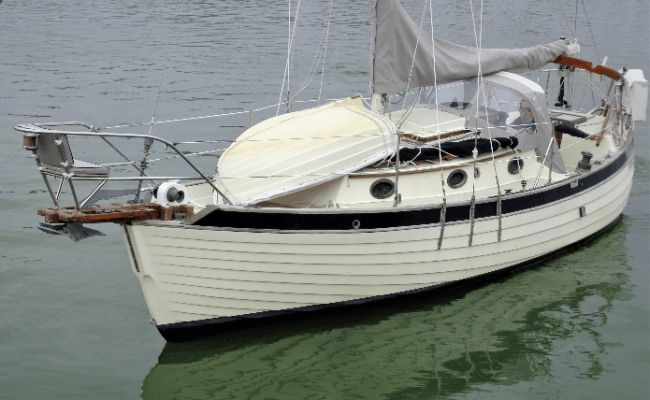
The Nor’Sea 27 is an excellent choice if you are single or searching for the best liveaboard sailboats for minimalists. This boat is arguably the best compact liveaboard cruiser available in the market today.
The compact boat has a surprisingly spacious interior for a 27-footer. Plus, it features almost every amenity you can find on a larger boat.
For comfort, the small sailboat feels more like a Catalina 30 and comes with a galley, shower, toilet, and two bunks below the cockpit. The forward berth also serves as a dinette.
The design of the sailboat is a huge success and has found a pretty strong following, which explains why it is still in production to date despite hitting the market long ago in 1976. As expected, the little sailboat costs less in slip fees. But the best part is that you can tow it on a trailer, and that’s all legal.
Don’t be fooled by its size, though. The Nor’Sea 27 isn’t cheap. Prices for new ones start from around $150K (with kits starting anywhere from $35K). You find used ones for as little as $15,500 or as much as $95,000 depending on age, quality of finish, and condition.
Find out current listings and prices here.
- Ballast: 3,100 lbs
- Displacement: 8,100 lbs
- Water Tank: 20 gallons
- Fuel Tank: 20 gallons
How to Choose the Best LiveAboard Sailboats – Buying Guide
There are several things to consider when choosing a liveaboard sailboat, but perhaps the most important factor is the level of accommodation that will suit your need. A boat with useful features such as a fully functional kitchen or electric toilets are well and fine, but many traditional sailors don’t really care about limited amenities. Any stripped-down sailboat with basic interior would do just fine.
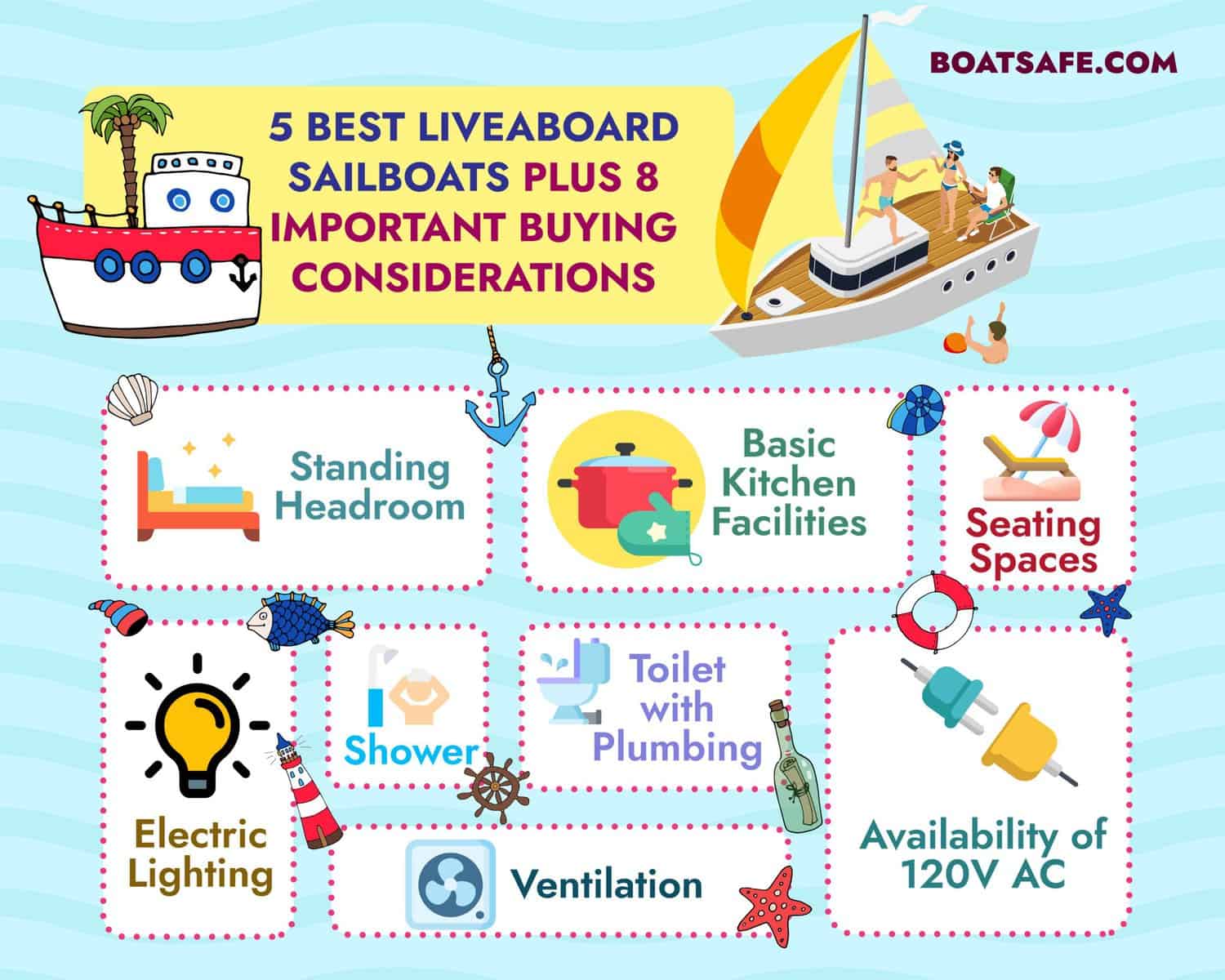
Most sailors are generally okay with any standard live about sailboats constructed after 1970 since these types typically have adequate ventilation , a usable kitchen, head, and shower. But whatever your preferences, you can be sure you will find something that will provide the level of comfort you need in most modern sailboats.
Here are 8 important factors and requirements we think are crucial when choosing the best liveaboard sailboats.
1. Standing Headroom
There’s nothing wrong with spending a couple of days in a week aboard a boat without standing headroom. However, if living aboard a sailboat is a lifestyle choice for you, consider one with standing headroom. Your body is not meant to crouch or crawl for months or years on end. With time, your back and other muscles will start to take a hit. For your overall health and wellbeing, it is best to choose a sailboat with standing headroom. Our recommendation is 5-feet 10-inch standing headroom or something within that range.
2. Basic Kitchen Facilities
A liveaboard boat without a kitchen can only mean one thing: you will be eating out every single day! While this is okay for some people, others will prefer to cook their own meals at least once in a while, regardless of their culinary skills.
We think a kitchen is a must-have for the best liveaboard sailboats, even if it doesn’t have all the modern facilities. Basic kitchen facilities should include a refrigerator or icebox, a sink, and a stove. If you find one with an oven, that’s a plus, too!
3. Toilet with Plumbing
The fastest way to spread diseases when you liveaboard a boat is to have improper human waste storage and disposal system. Sanitation facilities are among the top considerations when choosing the best liveaboard sailboats.
Using a porta-potty all year long is definitely out of the question. Besides, no one would like to live on a stinky boat or have guests come over a smelly abode. When you choose a liveaboard sailboat, look for one with a built-in and properly outfitted toilet. It should also have a safe sewage storage tank with a proper disposal system.
Many liveaboards prefer to use gym or marina facilities instead of their onboard showers. This is okay, but it doesn’t eliminate the need for bathing facilities on board. Choose a sailboat with a shower for convenience’s sake, even if you don’t use it all the time.
It is important to make sure that your bilge pump is always in good working condition, especially if you have a boat shower that drains directly into the bilge. Keep in mind that whatever goes into the drain will find its way below your floor.
5. Electric Lighting
Having kerosene lamps is okay. In fact, many sailors love to have them because it adds a certain feel and beauty to their boats. But you definitely want to consider the convenience and safety offered by electric lighting. If you plan on living aboard a boat for a long time, you will need some form of reliable electric lighting.
6. Availability of 120V AC
The best liveaboard sailboats come with 120V AC outlets for standard house electricity connections. The availability of electricity is a definite requirement for living aboard a boat. You want to have a way to charge your cell phones, computers, and use other electronic gadgets. A boat with only a 12V outlet is not good enough. It is best to choose a sailboat with 120V AC outlets if you want to enjoy electricity living aboard a boat full-time.
7. Seating Spaces
Apart from the main bed, the best liveaboard sailboats should have additional seating spaces. There should be separate spaces for sitting, working, navigating, and eating, especially if you plan on living aboard for a long time. You don’t want to be bored with the monotony of using only one space (the main bed) for all your daily activities. Having separate seating spaces has the added advantage of making your day-to-day activities more agreeable.
8. Ventilation
Perhaps the simplest requirement for liveaboard sailboats is ventilation. But it is equally essential, regardless. An opening porthole or a passive solar roof vent should suffice. The important thing to consider when it comes to proper ventilation is a boat that provides a way to let in fresh air without needing to open the main hatch.
Coastal Vs. Offshore Accommodations
And now, here’s one final factor to consider before choosing a liveaboard sailboat. How do you plan to use your boat? Do you want a sailboat that will serve primarily as a long-distance cruiser, or do you intend to use it mainly for coastal cruising?
Your intended use significantly affects the style of interior design that will be suitable for your purpose. Sailboat accommodations are greatly impacted by their cruising purposes. Coastal cruisers are likely to feature more plush layouts, complex interiors, and larger sofas. Also, these boats generally have several amenities, so it is common to have smaller storage spaces in these sailboats.
On the other hand, offshore or long-distance cruisers feature cabins that are designed and arranged to make the journey as comfortable as possible. These sailboats generally don’t have unnecessary furniture and other extras below deck to make room for increased sleeping and storage spaces.
It is easy to get carried away during the physical inspection of a sailboat, especially if the boat is equipped with modern facilities and fanciful, eye-catching amenities. But don’t get swayed by those, even though they are important for improved convenience. Your top priority should be how you intend to use the boat – for coastal cruising or offshore cruising. This should inform your choice of accommodation.
Benefits of Living on a Sailboat
Okay, why should you want to give up living on land and opt for an unstable address somewhere in the middle of the ocean? Is it even safe to do so?
Living aboard a sailboat is an exciting lifestyle that offers several benefits and challenges, too! Thousands of people across the world choose this lifestyle, and because these boats are constructed from high-quality, durable materials, you can be sure it is safe to liveaboard one.
This lifestyle offers liveaboards a cheaper alternative than living in a traditional house. This is particularly the case in waterfront cities where rental apartments and houses in the marina areas are even more expensive.
It is a lot cheaper to live in a boat if you enjoy traveling around the world on the water. And if you enjoy the marina lifestyle, you could take it a step further by owning and living in one of the several best liveaboard sailboats available.
And come to think of it, these boats require some serious investments. What’s the point of buying a “house” on the water without living in it, right? To many people, it makes more economic sense to live in their expensive boats, instead of paying extra rent for a house on the land when there is one idling away on the water.
About Chris
Outdoors, I’m in my element, especially in the water. I know the importance of being geared up for anything. I do the deep digital dive, researching gear, boats and knowhow and love keeping my readership at the helm of their passions.
Categories : Boats
Leave a Reply Cancel reply
Your email address will not be published. Required fields are marked *
Save my name, email, and website in this browser for the next time I comment.
More in Boats

What Is A Gunwale?

131 of the Best Hawaiian Boat Names

167 Patriotic Boat Names

The 138 Best Boat Names for Dog Lovers

The People’s Poncho Review and Ratings

Oru Lake Kayak Review

About Boatsafe
Established in 1998, BoatSafe is your independent guide into the world of boating, fishing, and watersports. We provide expert insights and detailed guides to help you find products tailored to your needs and budget.
Contact Boatsafe
- Address: 4021 West Walnut Street. Rogers, AR 72756
- Phone: (479)339-4795
- Email: [email protected]
Site Navigation
- How We Test
- Corrections Policy
- Privacy Policy
- Terms & Conditions
- Editorial Policy
- Affiliate Disclosure
Our Reviews

All content is © Copyright 2024. All rights reserved.
- BOAT OF THE YEAR
- Newsletters
- Sailboat Reviews
- Boating Safety
- Sailing Totem
- Charter Resources
- Destinations
- Galley Recipes
- Living Aboard
- Sails and Rigging
- Maintenance
- Best Marine Electronics & Technology

40 Best Sailboats
- By Cruising World Editors
- Updated: April 18, 2019
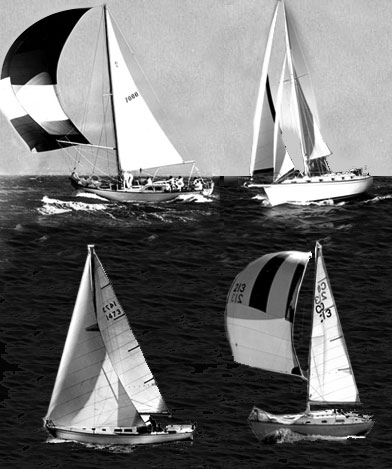
Sailors are certainly passionate about their boats, and if you doubt that bold statement, try posting an article dubbed “ 40 Best Sailboats ” and see what happens.
Barely had the list gone live, when one reader responded, “Where do I begin? So many glaring omissions!” Like scores of others, he listed a number of sailboats and brands that we were too stupid to think of, but unlike some, he did sign off on a somewhat upbeat note: “If it weren’t for the presence of the Bermuda 40 in Cruising World’s list, I wouldn’t even have bothered to vote.”
By vote, he means that he, like hundreds of other readers, took the time to click through to an accompanying page where we asked you to help us reshuffle our alphabetical listing of noteworthy production sailboats so that we could rank them instead by popularity. So we ask you to keep in mind that this list of the best sailboats was created by our readers.
The quest to building this list all began with such a simple question, one that’s probably been posed at one time or another in any bar where sailors meet to raise a glass or two: If you had to pick, what’re the best sailboats ever built?
In no time, a dozen or more from a variety of sailboat manufacturers were on the table and the debate was on. And so, having fun with it, we decided to put the same question to a handful of CW ‘s friends: writers and sailors and designers and builders whose opinions we value. Their favorites poured in and soon an inkling of a list began to take shape. To corral things a bit and avoid going all the way back to Joshua Slocum and his venerable Spray —Hell, to Noah and his infamous Ark —we decided to focus our concentration on production monohull sailboats, which literally opened up the sport to anyone who wanted to get out on the water. And since CW is on the verge or turning 40, we decided that would be a nice round number at which to draw the line and usher in our coming ruby anniversary.
If you enjoy scrolling through this list, which includes all types of sailboats, then perhaps you would also be interested in browsing our list of the Best Cruising Sailboats . Check it out and, of course, feel free to add your favorite boat, too. Here at Cruising World , we like nothing better than talking about boats, and it turns out, so do you.
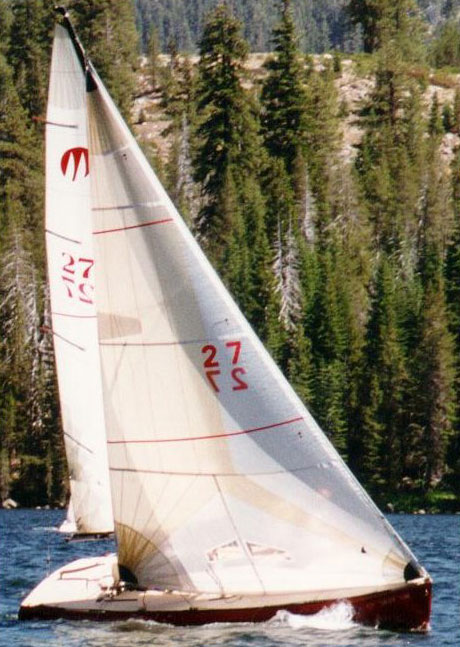
40. Moore 24
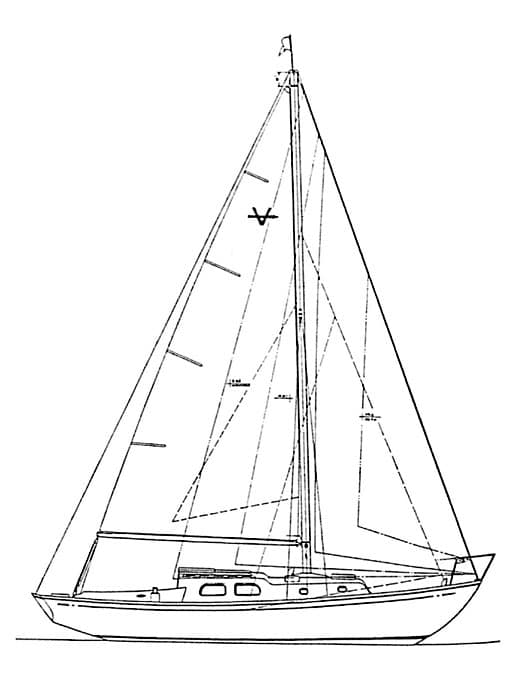
39. Pearson Vanguard
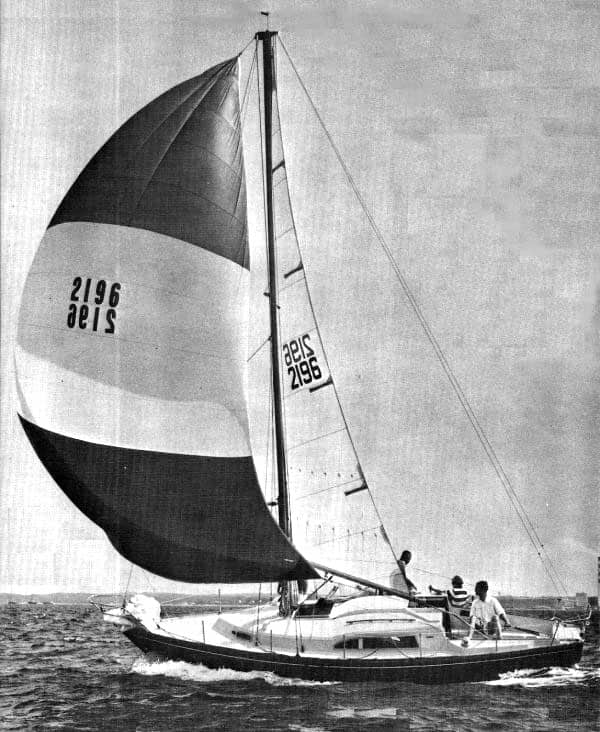
38. Dufour Arpege 30
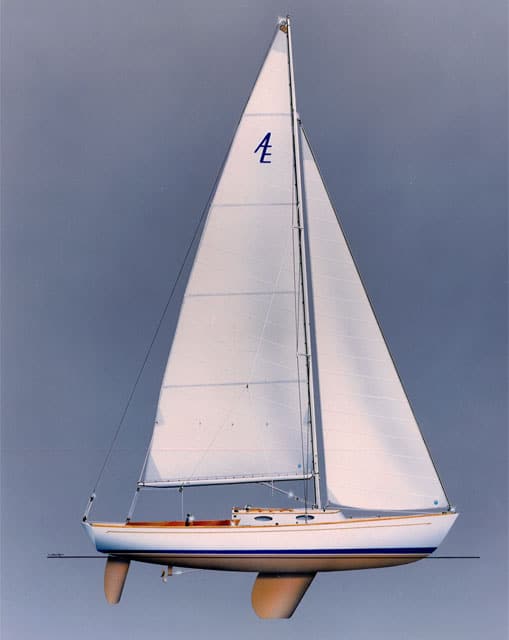
37. Alerion Express 28
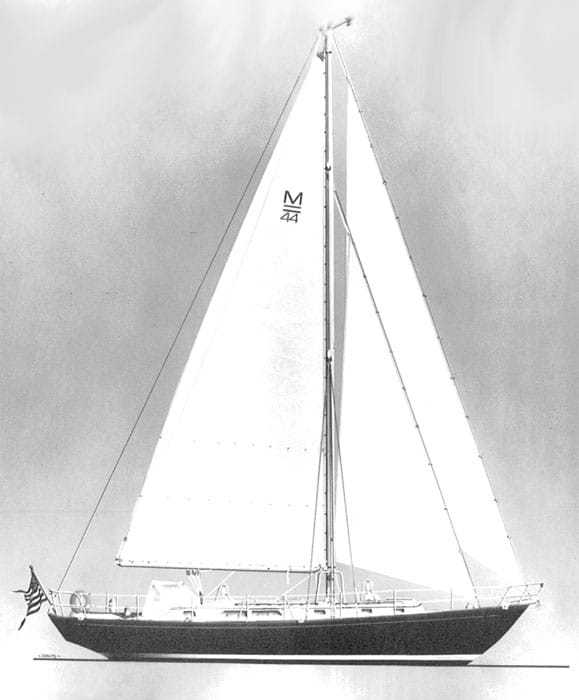
36. Mason 43/44
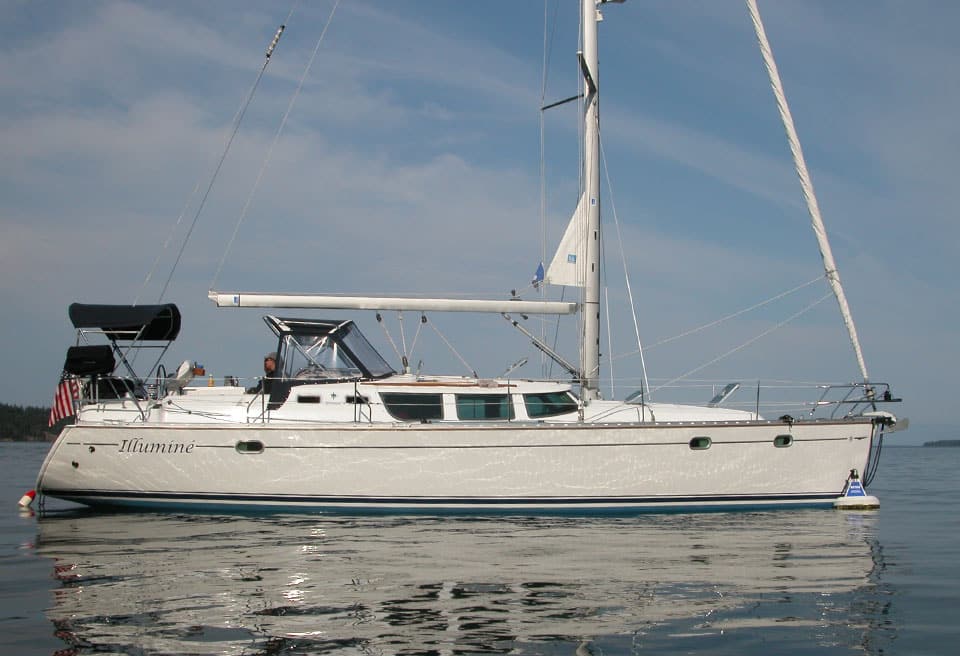
35. Jeanneau Sun Odyssey 43DS
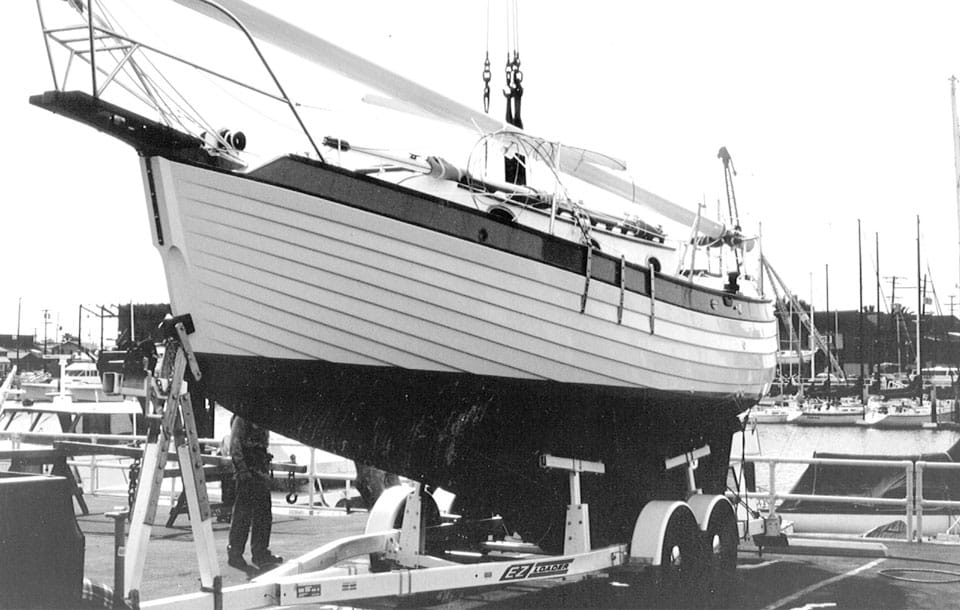
34. Nor’Sea 27
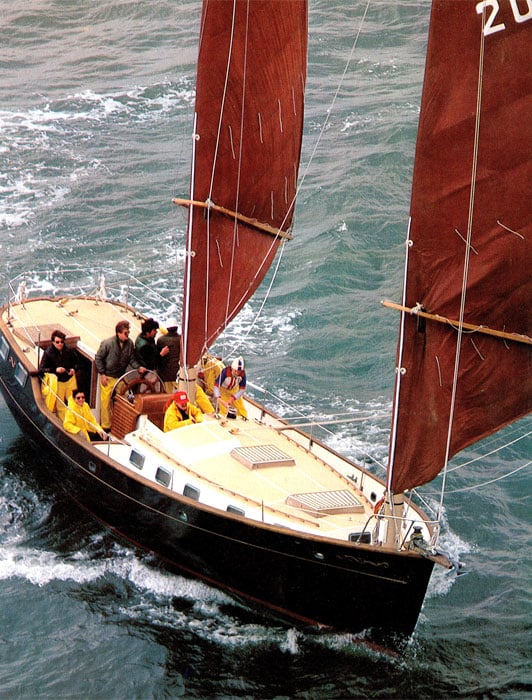
33. Freedom 40
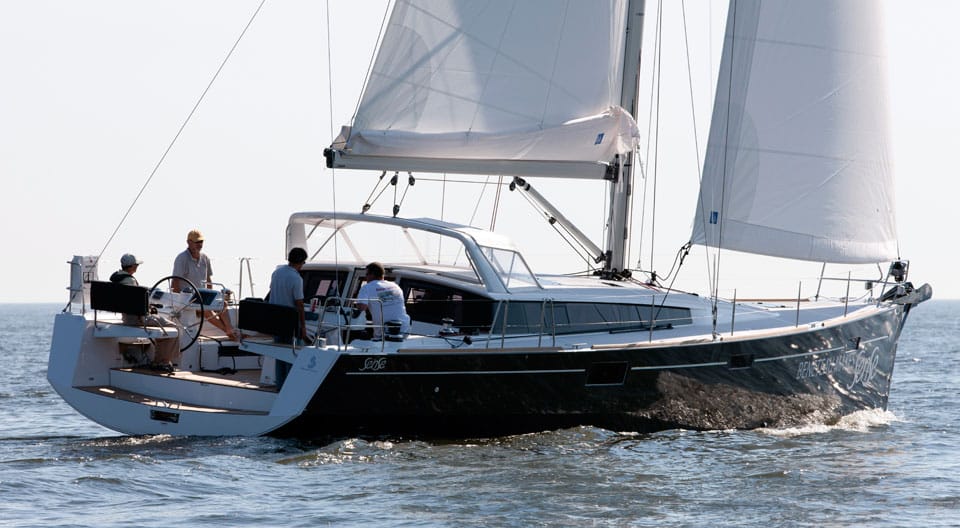
32. Beneteau Sense 50
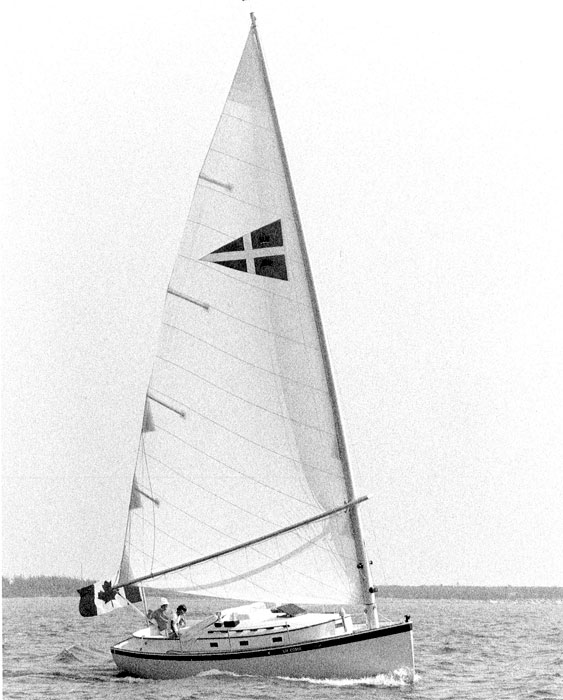
31. Nonsuch 30
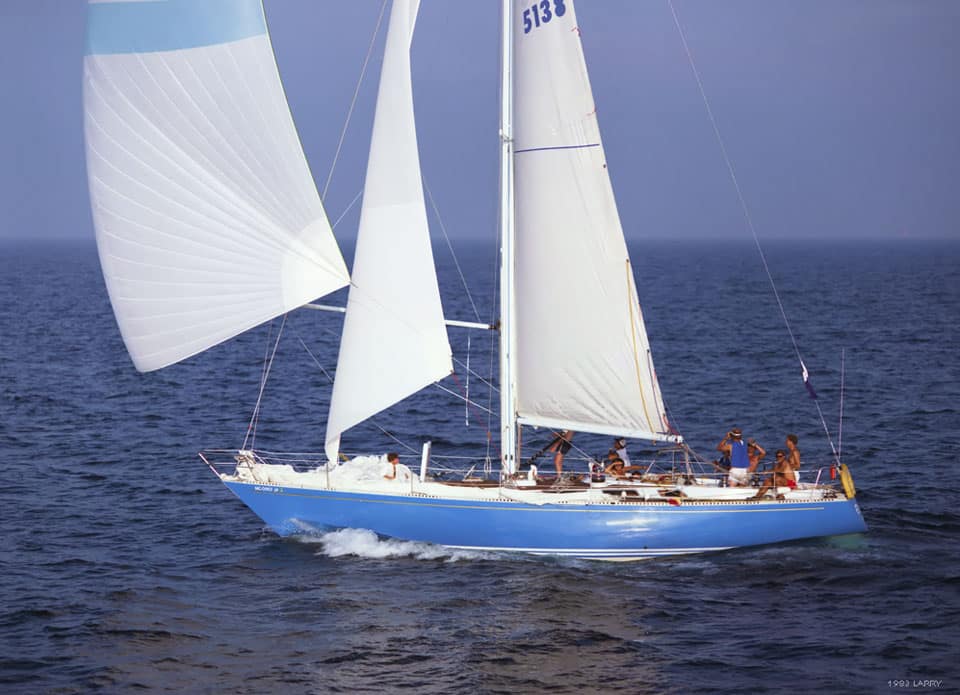
30. Swan 44
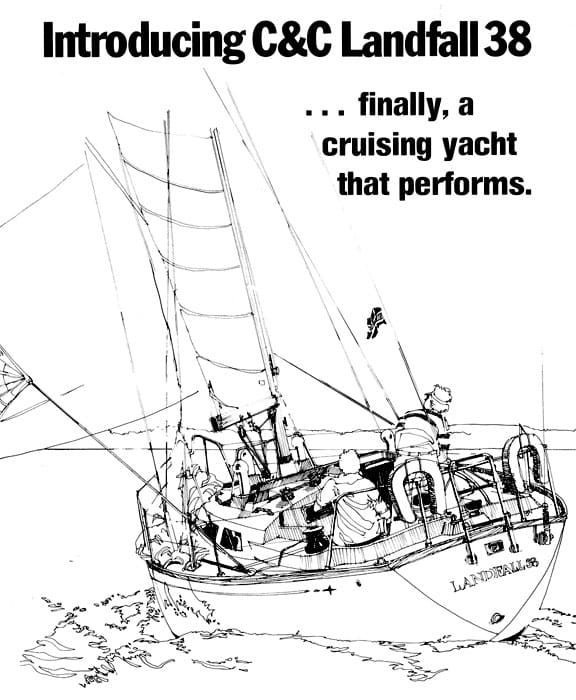
29. C&C Landfall 38
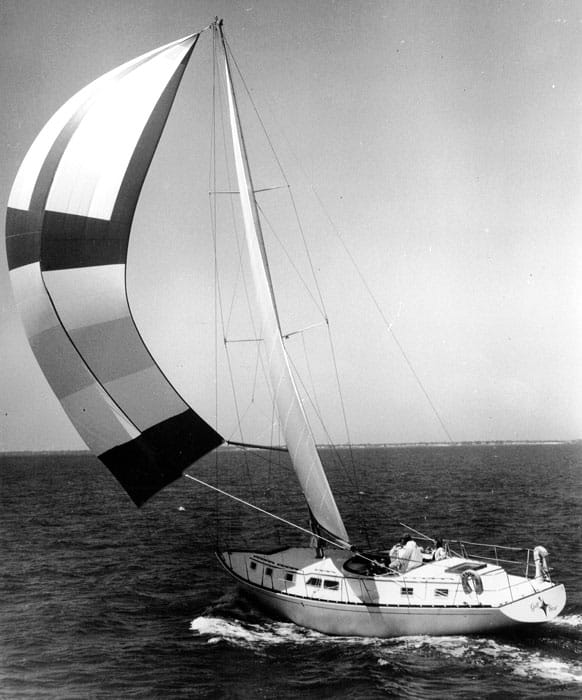
28. Gulfstar 50
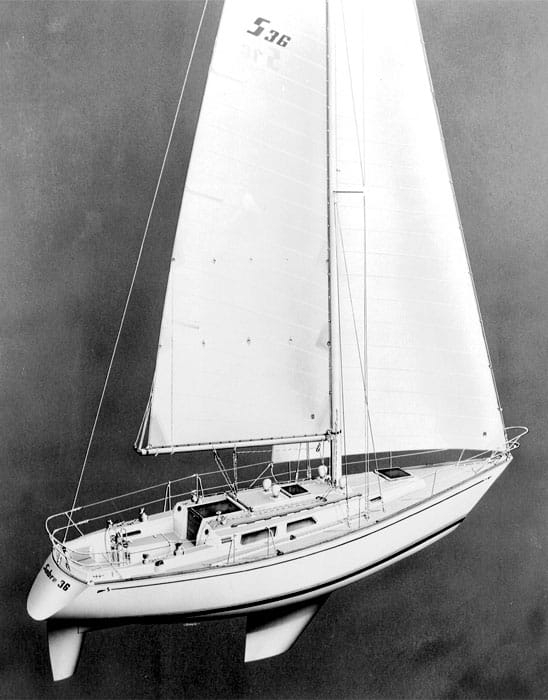
27. Sabre 36
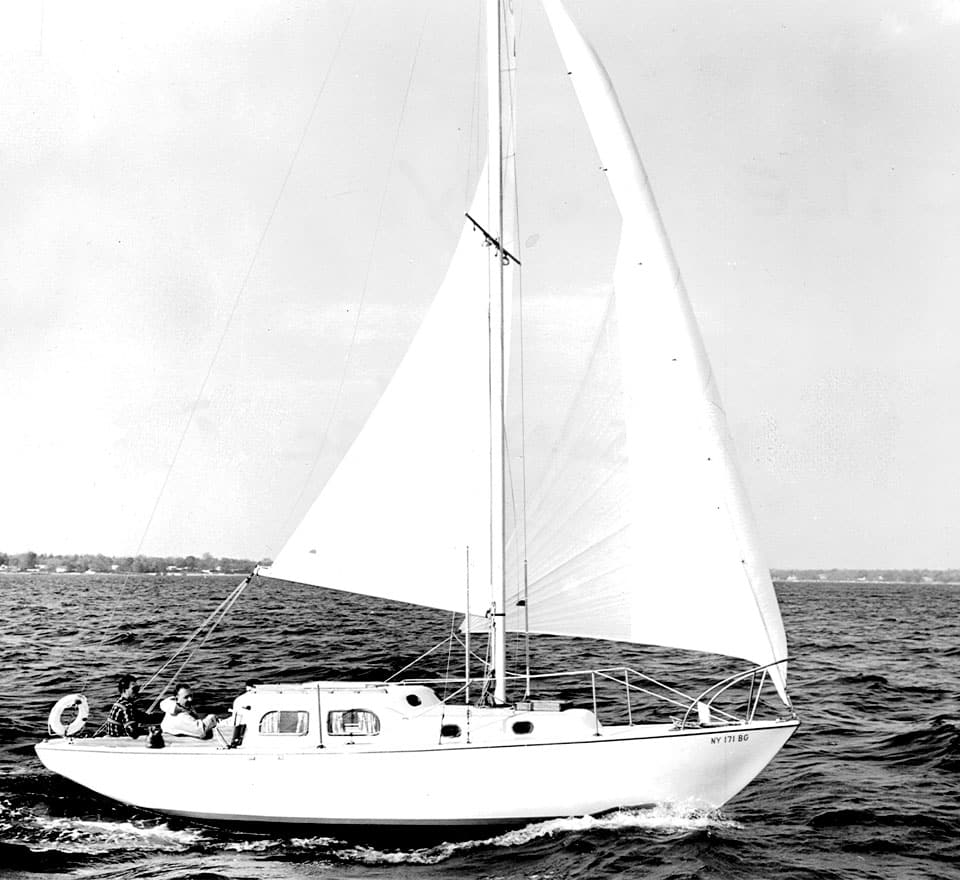
26. Pearson Triton
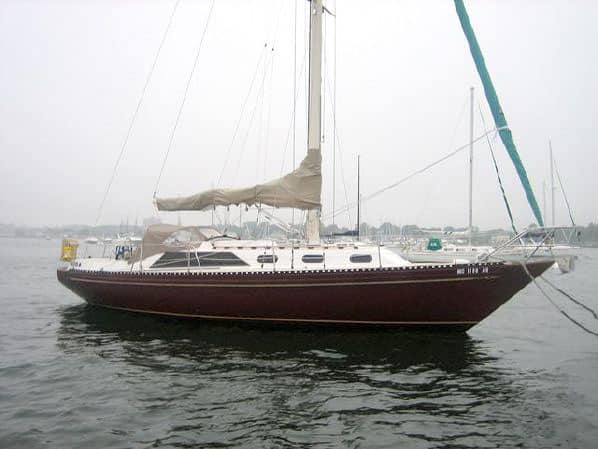
25. Islander 36
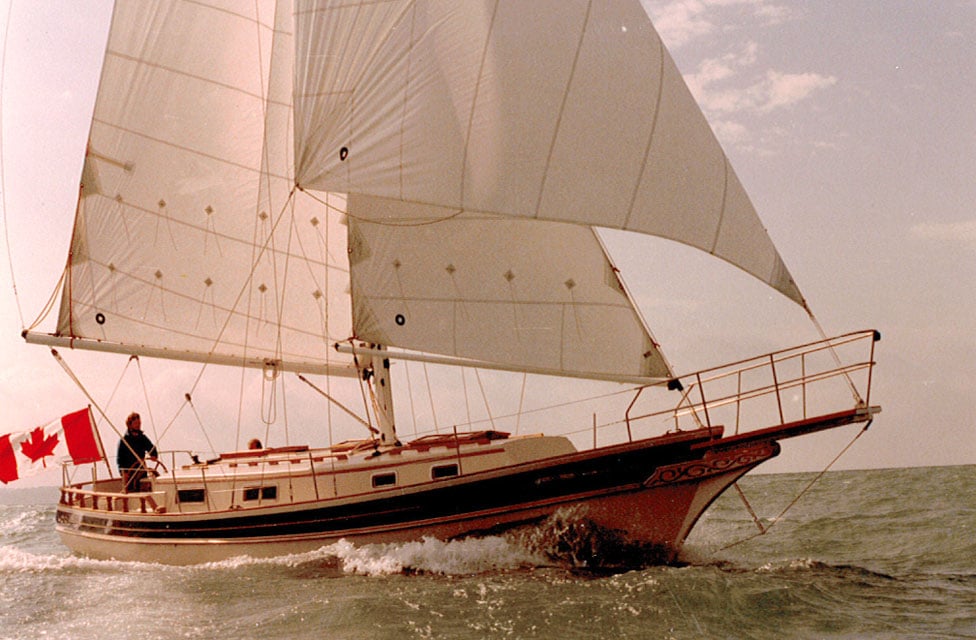
24. Gozzard 36
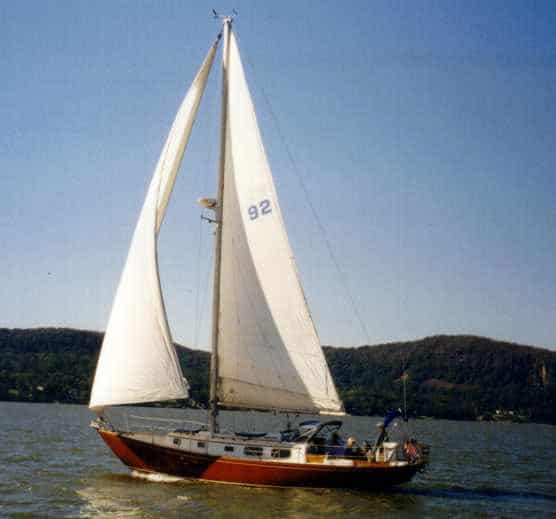
23. Bristol 40
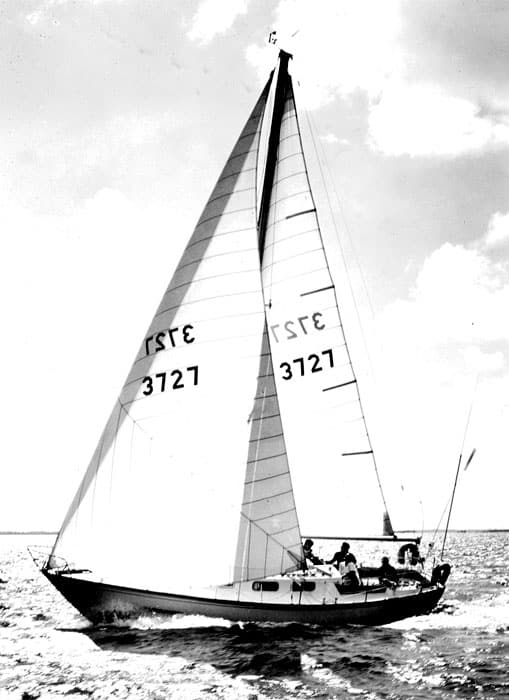
22. Tartan 34
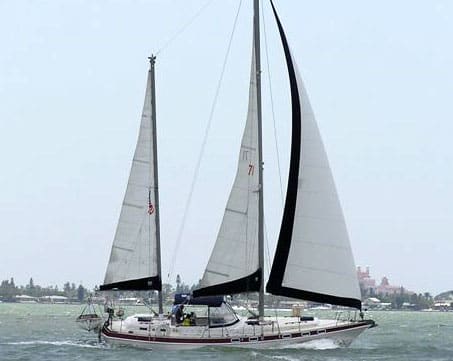
21. Morgan Out Island 41
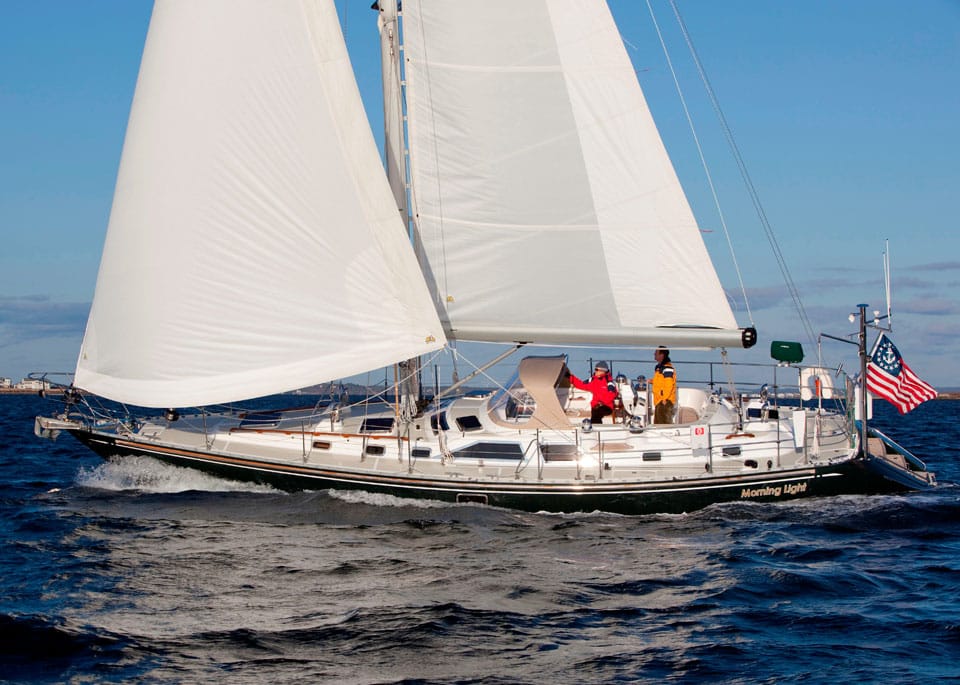
20. Hylas 49
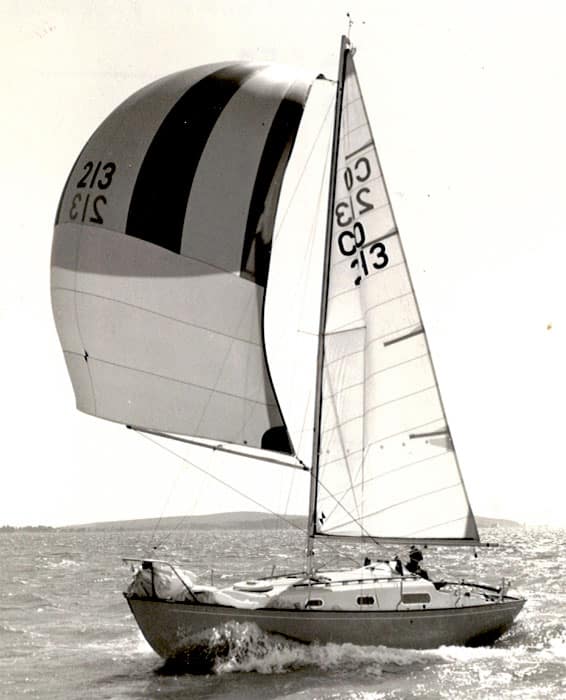
19. Contessa 26
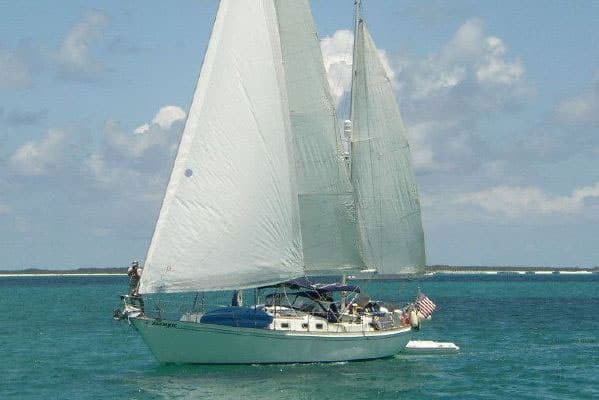
18. Whitby 42
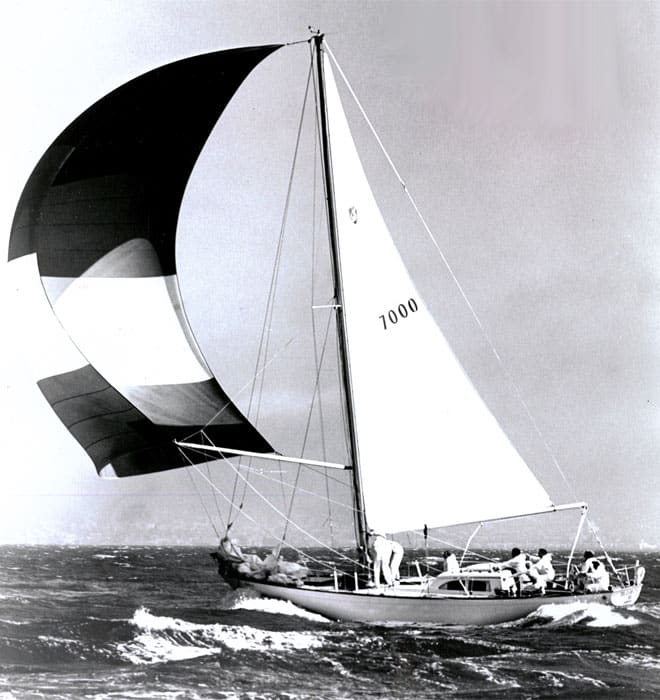
17. Columbia 50
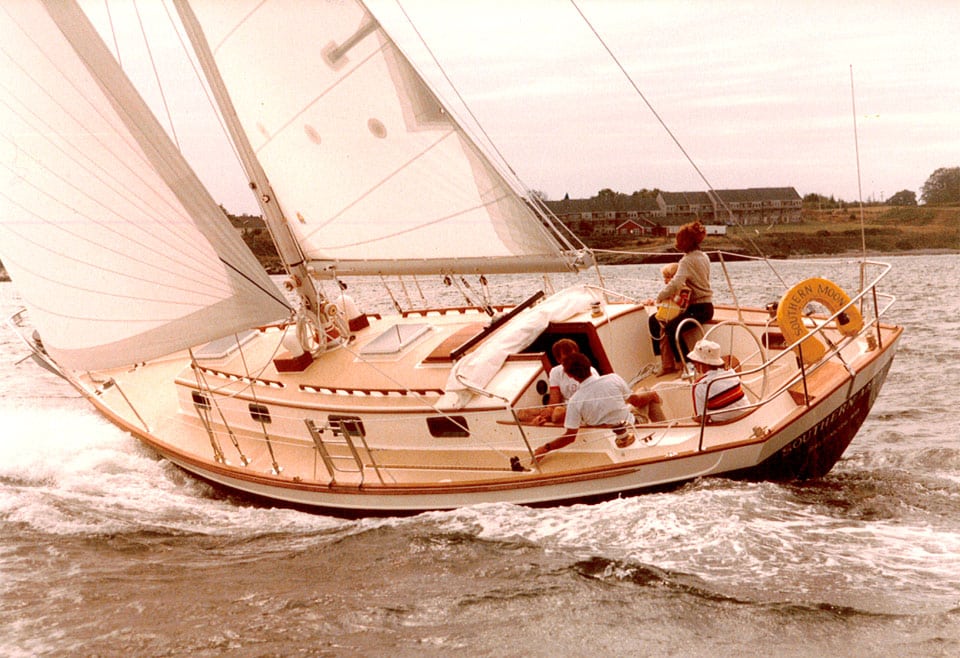
16. Morris 36
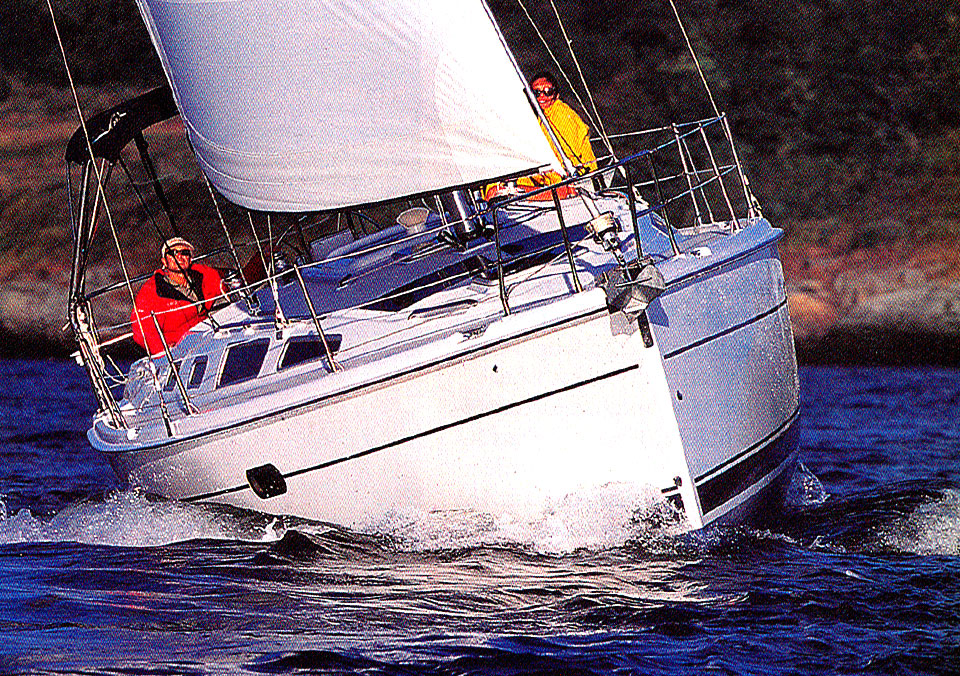
15. Hunter 356
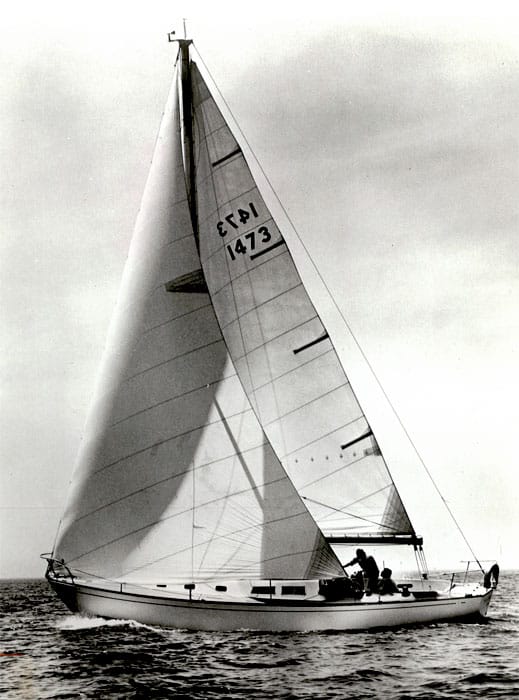
13. Beneteau 423
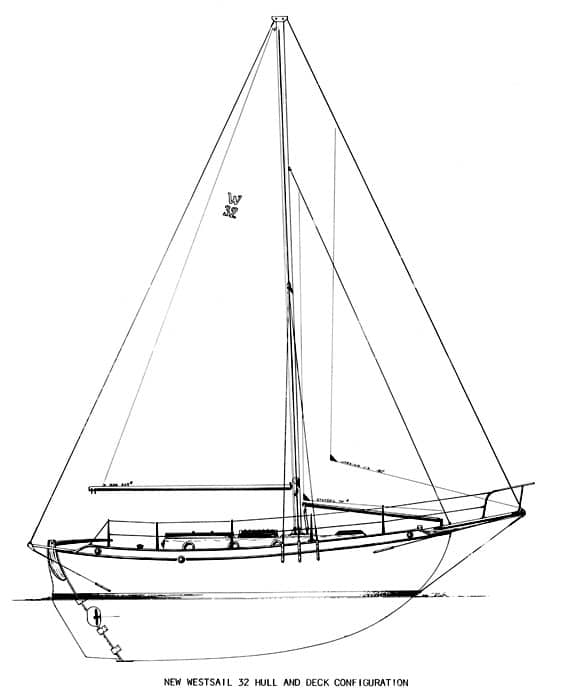
12. Westsail 32
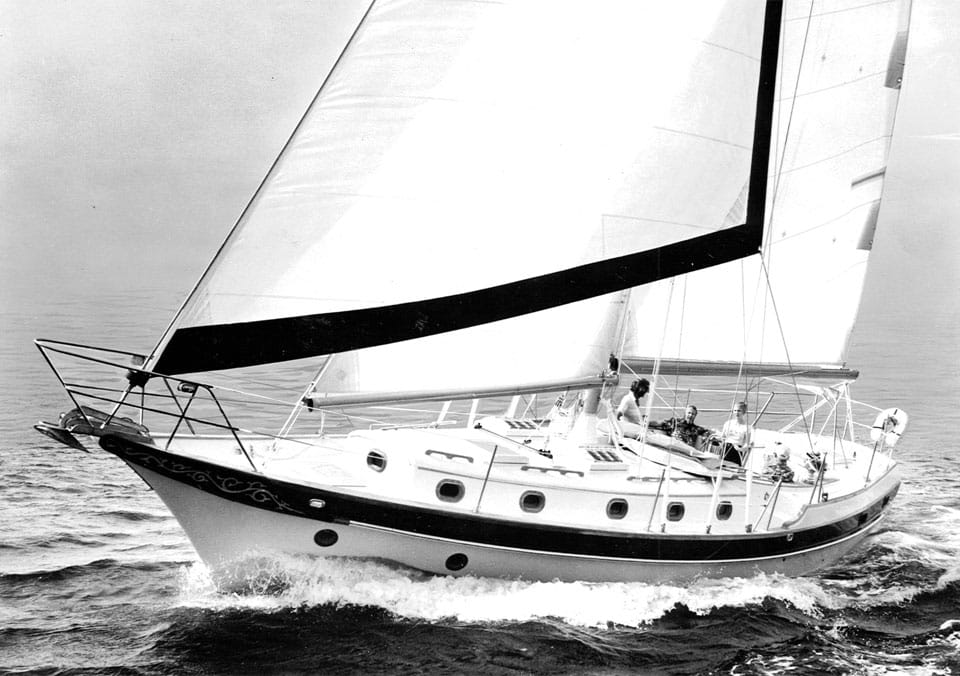
10. Alberg 30
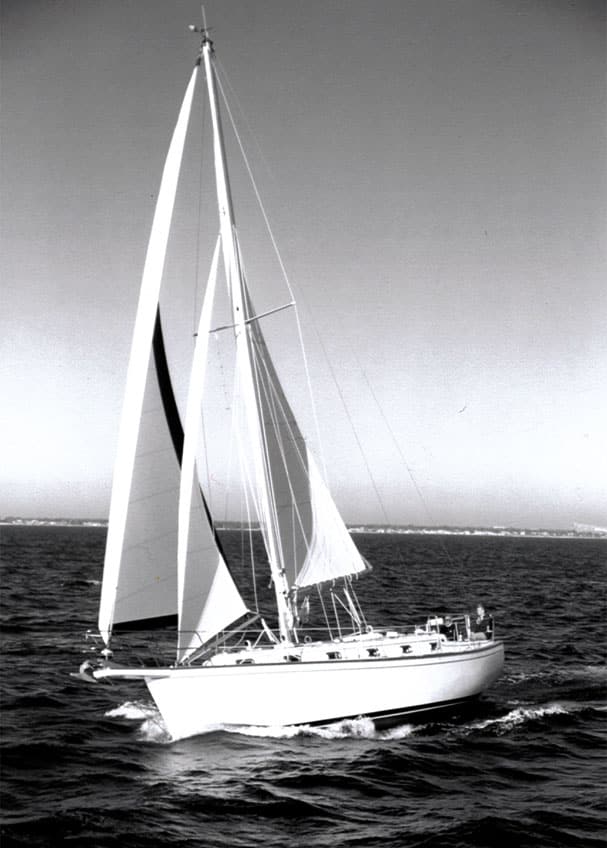
9. Island Packet 38
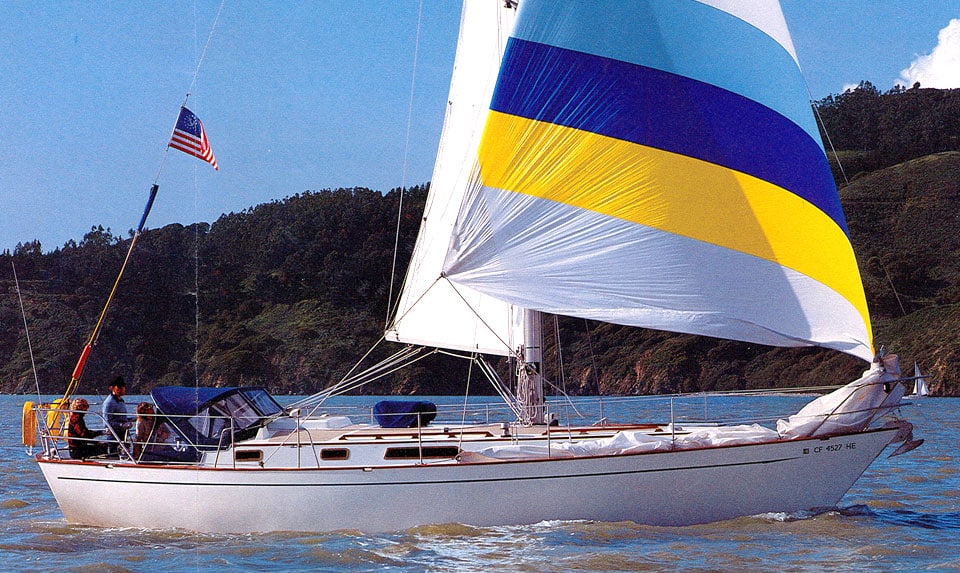
8. Passport 40
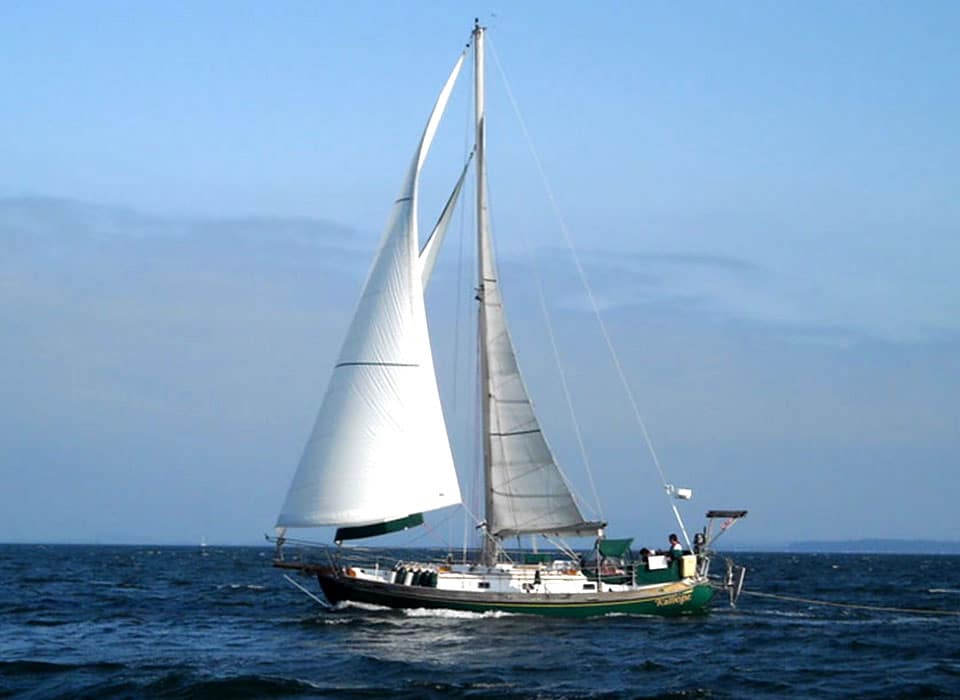
7. Tayana 37
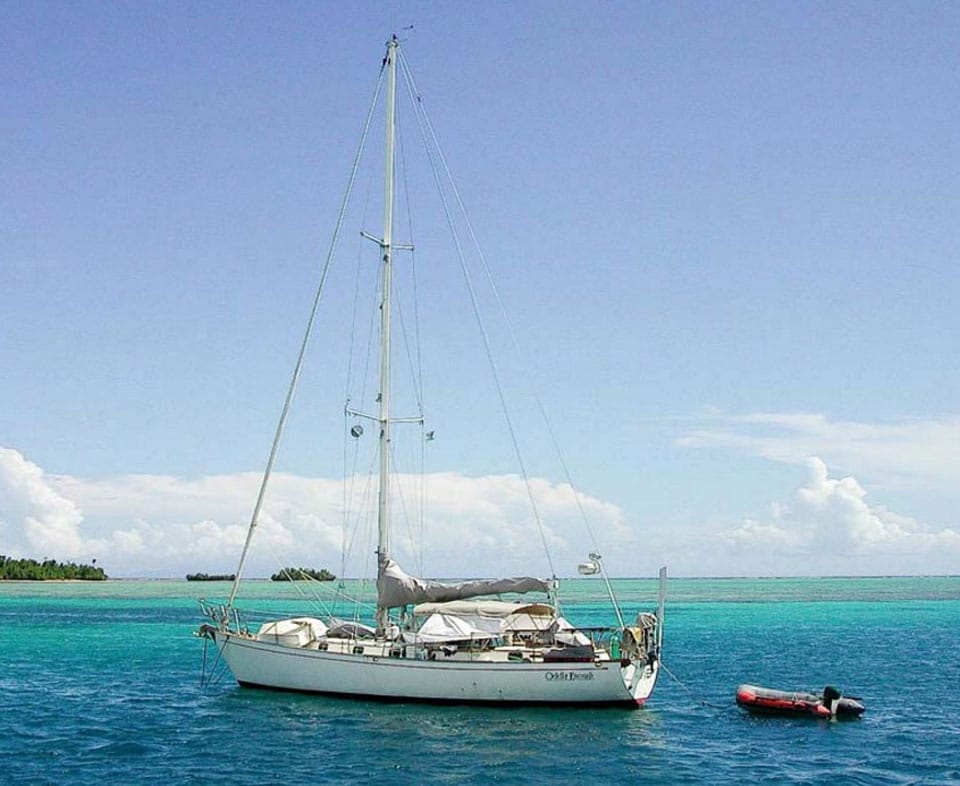
6. Peterson 44
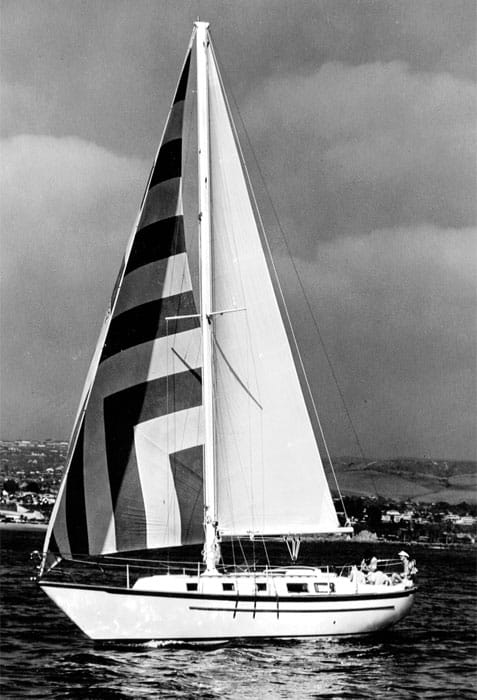
5. Pacific Seacraft 37
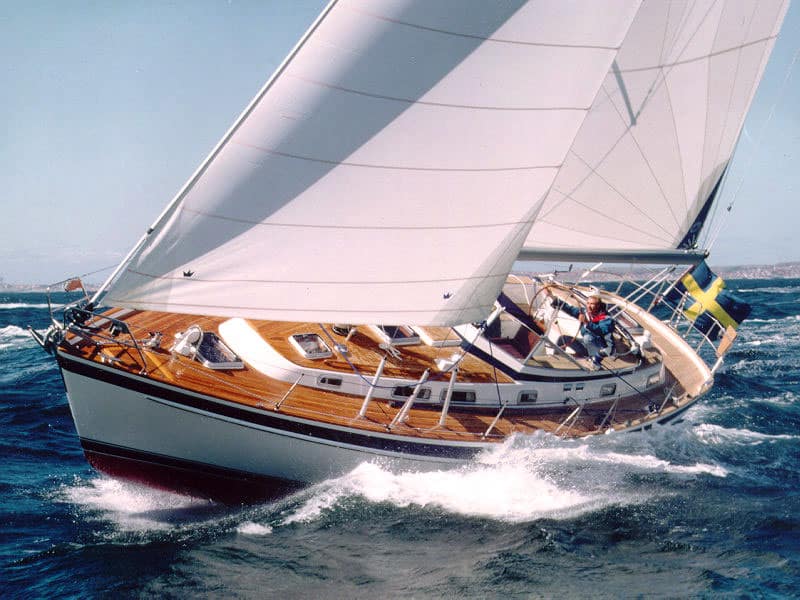
4. Hallberg-Rassy 42
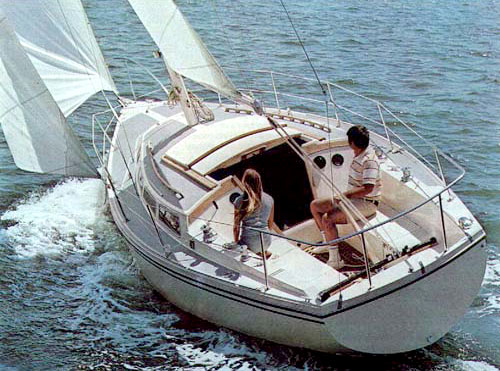
3. Catalina 30
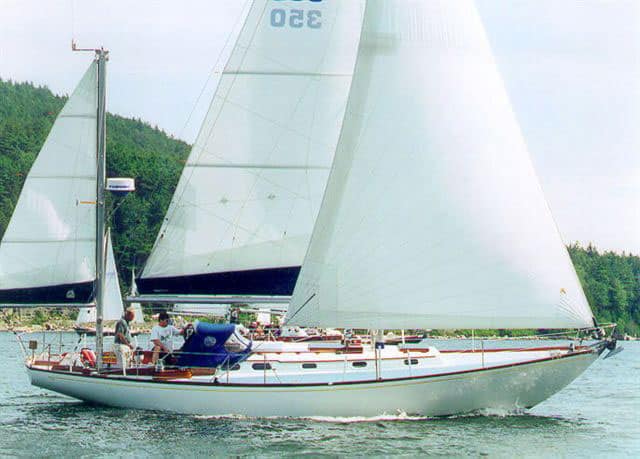
2. Hinckley Bermuda 40
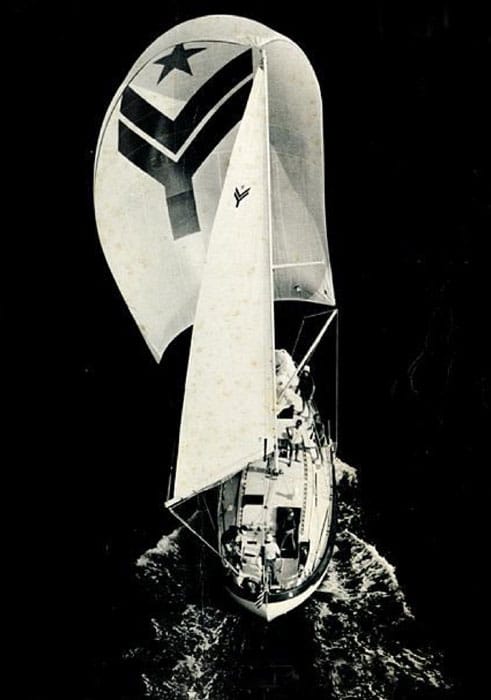
1. Valiant 40
- More: monohull , Sailboats
- More Sailboats
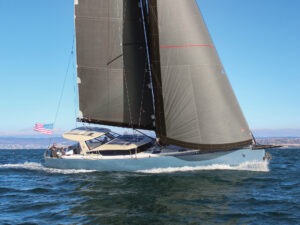
New to the Fleet: Pegasus Yachts 50

Balance 442 “Lasai” Set to Debut

Sailboat Review: Tartan 455

Meet the Bali 5.8
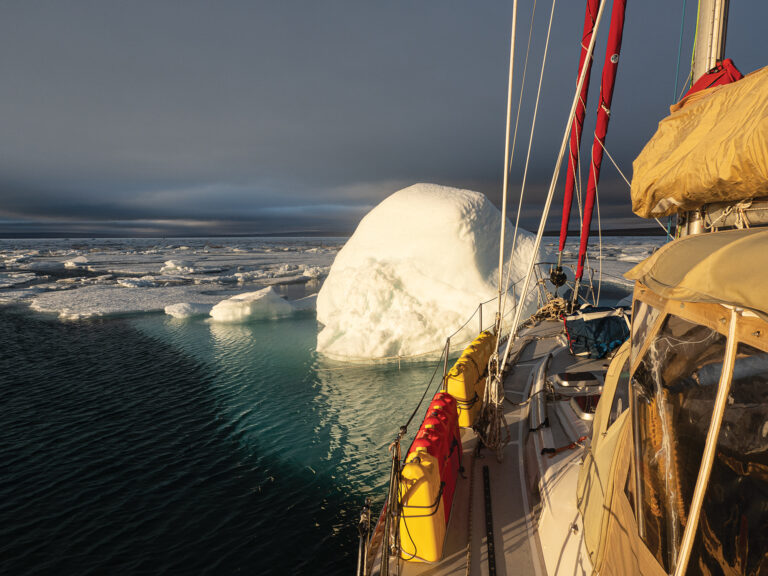
Cruising the Northwest Passage

A Legendary Sail

10 Best Sailing Movies of All Time
- Digital Edition
- Customer Service
- Privacy Policy
- Email Newsletters
- Cruising World
- Sailing World
- Salt Water Sportsman
- Sport Fishing
- Wakeboarding
What we know about the container ship that crashed into the Baltimore bridge
- The ship that crashed into the Francis Scott Key Bridge on Tuesday was the Singapore-flagged Dali.
- The container ship had been chartered by Maersk, the Danish shipping company.
- Two people were recovered from the water but six remain missing, authorities said.

A container ship crashed into a major bridge in Baltimore early Tuesday, causing its collapse into the Patapsco River.
A livestream showed vehicles traveling on the Francis Scott Key Bridge just moments before the impact at 1:28 a.m. ET.
Baltimore first responders called the situation a "developing mass casualty event" and a "dire emergency," per The Associated Press.
James Wallace, chief of the Baltimore Fire Department, said in a press conference that two people had been recovered from the water.
One was uninjured, but the other was transported to a local trauma center in a "very serious condition."
Wallace said up to 20 people were thought to have fallen into the river and some six people were still missing.
Richard Worley, Baltimore's police chief, said there was "no indication" the collision was purposeful or an act of terrorism.
Wes Moore, the governor of Maryland, declared a state of emergency around 6 a.m. ET. He said his office was in close communication with Pete Buttigieg, the transportation secretary.
"We are working with an interagency team to quickly deploy federal resources from the Biden Administration," Moore added.
Understanding why the bridge collapsed could have implications for safety, in both the shipping and civil engineering sectors.
The container ship is the Singapore-flagged Dali, which is about 984 feet long, and 157 feet wide, per a listing on VesselFinder.
An unclassified Cybersecurity and Infrastructure Security Agency report said that the ship "lost propulsion" as it was leaving port, ABC News reported.
The crew notified officials that they had lost control and warned of a possible collision, the report said, per the outlet.
The Dali's owner is listed as Grace Ocean, a Singapore-based firm, and its manager is listed as Synergy Marine, which is also headquartered in Singapore.
Shipping news outlet TradeWinds reported that Grace Ocean confirmed the Dali was involved in the collapse, but is still determining what caused the crash.
Related stories
Staff for Grace Ocean declined to comment on the collision when contacted by Business Insider.
"All crew members, including the two pilots have been accounted for and there are no reports of any injuries. There has also been no pollution," Synergy Marine said in a statement.
The company did not respond to a request for further comment from BI.
'Horrified'
Maersk chartered the Dali, with a schedule for the ship on its website.
"We are horrified by what has happened in Baltimore, and our thoughts are with all of those affected," the Danish shipping company said in a statement.
Maersk added: "We are closely following the investigations conducted by authorities and Synergy, and we will do our utmost to keep our customers informed."
Per ship tracking data, the Dali left Baltimore on its way to Colombo, the capital of Sri Lanka, at around 1 a.m., about half an hour before the crash.
The Port of Baltimore is thought to be the largest in the US for roll-on/roll-off ships carrying trucks and trailers.
Barbara Rossi, associate professor of engineering science at the University of Oxford, told BI the force of the impact on one of the bridge's supporting structures "must have been immense" to lead to the collapse.
Dr Salvatore Mercogliano, a shipping analyst and maritime historian at Campbell University, told BI: "It appears Dali left the channel while outbound. She would have been under the control of the ship's master with a Chesapeake Bay pilot onboard to advise the master.
"The deviation out of the channel is probably due to a mechanical issue as the ship had just departed the port, but you cannot rule out human error as that was the cause of the Ever Forward in 2022 just outside of Baltimore."
He was referring to the incident two years ago when the container ship became grounded for a month in Chesapeake Bay after loading up cargo at the Port of Baltimore.
The US Coast Guard found the incident was caused by pilot error, cellphone use, and "inadequate bridge resource management."
Claudia Norrgren, from the maritime research firm Veson Nautical, told BI: "The industry bodies who are here to protect against incidents like this, such as the vessel's flag state, classification society, and regulatory bodies, will step in and conduct a formal investigation into the incident. Until then, it'll be very hard for anyone to truly know what happened on board."
This may not have been the first time the Dali hit a structure.
In 2016, maritime blogs such as Shipwreck Log and ship-tracking site VesselFinder posted videos of what appears to be the stern of the same, blue-hulled container vessel scraping against a quay in Antwerp.
A representative for the Port of Antwerp told BI the Dali did collide with a quay there eight years ago but couldn't "give any information about the cause of the accident."
The Dali is listed as being built in 2015 by Hyundai Heavy Industries in South Korea.
Watch: The shipwreck at the center of a battle between China and the Philippines
- Main content
Advertisement
‘A Lot of Chaos’: Bridge Collapse Creates Upheaval at Largest U.S. Port for Car Trade
A bridge collapse closed Baltimore’s port, an important trade hub that ranks first in the nation by the volume of automobiles and light trucks it handles.
- Share full article
Shipping in the Port of Baltimore
Monthly cargo handled by the Port of Baltimore

By Peter Eavis and Jenny Gross
- March 26, 2024
The Baltimore bridge disaster on Tuesday upended operations at one of the nation’s busiest ports, with disruptions likely to be felt for weeks by companies shipping goods in and out of the country — and possibly by consumers as well.
The upheaval will be especially notable for auto makers and coal producers for whom Baltimore has become one of the most vital shipping destinations in the United States.
As officials began to investigate why a nearly 1,000-foot cargo ship ran into the Francis Scott Key Bridge in the middle of the night, companies that transport goods to suppliers and stores scrambled to get trucks to the other East Coast ports receiving goods diverted from Baltimore. Ships sat idle elsewhere, unsure where and when to dock.
“It’s going to cause a lot of chaos,” said Paul Brashier, vice president for drayage and intermodal at ITS Logistics.
The closure of the Port of Baltimore is the latest hit to global supply chains, which have been strained by monthslong crises at the Panama Canal, which has had to slash traffic because of low water levels; and the Suez Canal, which shipping companies are avoiding because of attacks by the Houthis on vessels in the Red Sea.
The auto industry now faces new supply headaches.
Last year, 570,000 vehicles were imported through Baltimore, according to Sina Golara, an assistant professor of supply chain management at Georgia State University. “That’s a huge amount,” he said, equivalent to nearly a quarter of the current inventory of new cars in the United States.
The Baltimore port handled a record amount of foreign cargo last year, and it was the 17th biggest port in the nation overall in 2021, ranked by total tons, according to Bureau of Transportation Statistics.
Baltimore Ranks in the Top 20 U.S. Ports
Total trade in 2021 in millions of tons
Baltimore ranks first in the United States for the volume of automobiles and light trucks it handles, and for vessels that carry wheeled cargo, including farm and construction machinery, according to a statement by Gov. Wes Moore of Maryland last month.
The incident is another stark reminder of the vulnerability of the supply chains that transport consumer products and commodities around the world.
The extent of the disruption depends on how long it takes to reopen shipping channels into the port of Baltimore. Experts estimate it could take several weeks.
Baltimore is not a leading port for container ships, and other ports can likely absorb traffic that was headed to Baltimore, industry officials said.
Stephen Edwards, the chief executive of the Port of Virginia, said it was expecting a vessel on Tuesday that was previously bound for Baltimore, and that others would soon follow. “Between New York and Virginia, we have sufficient capacity to handle all this cargo,” Mr. Edwards said, referring to container ships.
“Shipping companies are very agile,” said Jean-Paul Rodrigue, a professor in the department of maritime business administration at Texas A&M University-Galveston. “In two to three days, it will be rerouted.”
But other types of cargo could remain snarled.
Alexis Ellender, a global analyst at Kpler, a commodities analytics firm, said he expected the port closure to cause significant disruption of U.S. exports of coal. Last year, about 23 million metric tons of coal exports were shipped from the port of Baltimore, about a quarter of all seaborne U.S. coal shipments. About 12 vessel had been expected to leave the port of Baltimore in the next week or so carrying coal, according to Kpler.
He noted that it would not make a huge dent on the global market, but he added that “the impact is significant for the U.S. in terms of loss of export capacity.”
“You may see coal cargoes coming from the mines being rerouted to other ports instead,” he said, with a port in Norfolk, Va., the most likely.
If auto imports are reduced by Baltimore’s closure, inventories could run low, particularly for models that are in high demand.
“We are initiating discussions with our various transportation providers on contingency plans to ensure an uninterrupted flow of vehicles to our customers and will continue to carefully monitor this situation,” Stellantis, which owns Chrysler, Dodge, Jeep and Ram, said in a statement.
Other ports have the capacity to import cars, but there may not be enough car transporters at those ports to handle the new traffic.
“You have to make sure the capacity exists all the way in the supply chain — all the way to the dealership,” said Mr. Golara, the Georgia State professor.
A looming battle is insurance payouts, once legal liability is determined. The size of the payout from the insurer is likely to be significant and will depend on factors including the value of the bridge, the scale of loss of life compensation owed to families of people who died, the damage to the vessel and disruption to the port.
The ship’s insurer, Britannia P&I Club, part of a global group of insurers, said in a statement that it was “working closely with the ship manager and relevant authorities to establish the facts and to help ensure that this situation is dealt with quickly and professionally.”
The port has also increasingly catered to large container ships like the Dali, the 948-foot-long cargo vessel carrying goods for the shipping giant Maersk that hit a pillar of the bridge around 1:30 a.m. on Tuesday. The Dali had spent two days in Baltimore’s port before setting off toward the 1.6-mile Francis Scott Key Bridge.
State-owned terminals, managed by the Maryland Port Administration, and privately owned terminals in Baltimore transported a record 52.3 million tons of foreign cargo in 2023, worth $80 billion.
Materials transported in large volumes through the city’s port include coal, coffee and sugar. It was the ninth-busiest port in the nation last year for receiving foreign cargo, in terms of volume and value.
The bridge’s collapse will also disrupt cruises traveling in and out of Baltimore. Norwegian Cruise Line last year began a new fall and winter schedule calling at the Port of Baltimore.
An earlier version of this article misstated the Port of Baltimore’s rank among U.S. ports. It was the nation’s 17th biggest port by total tons in 2021, not the 20th largest.
How we handle corrections
Peter Eavis reports on business, financial markets, the economy and companies across different sectors. More about Peter Eavis
Jenny Gross is a reporter for The Times in London covering breaking news and other topics. More about Jenny Gross
Police investigating the death of an 8-year-old swimmer found in a pipe of a lazy river at a Houston hotel
HOUSTON — Police in Houston are investigating the death of an 8-year-old girl whose body was found inside a large pipe for a lazy river at a Houston hotel where she’d been swimming with her family.
Aliyah Jaico’s death on Saturday was ruled an accidental drowning by the Harris County Institute of Forensic Sciences. It said she died from drowning and mechanical asphyxia, when an object or physical force stops someone from breathing. Her autopsy report is pending.
Police said the girl was found “inside a large pipe in the pool area” and was pronounced dead by paramedics.
A lawsuit filed Monday against the hotel by her mother, Jose Daniela Jaico Ahumada, alleges that the child was sucked into an unsecured opening in the pool’s flow system that was 12 inches to 16 inches wide.
“They had to break up concrete in order to extract her, cut pipe, it was absolutely horrific,” Richard Nava, her mother’s attorney, said Tuesday at a news conference.

The family was staying at the Doubletree by Hilton Houston Brookhollow, which is named as a defendant in the lawsuit along with Hilton Worldwide Holdings. A Hilton spokesperson said they were deeply saddened by the girl’s death and noted that the property is independently owned and operated by a third party. The spokesperson said that Hilton had not been served with a lawsuit and doesn’t comment on pending litigation.
A law office that the Hilton spokesperson said represented the hotel ownership did not immediately respond to a request for comment Tuesday.
Ahumada said in the lawsuit that she’d rented the room so her family could enjoy a day of swimming, an activity Aliyah loved.

COMMENTS
The best production family sailboats are the Catalina 22, the Catalina 30, the Lagoon 470 catamaran, and the Beneteau 49. In this article, we'll cover in-depth four of the best sailboats for family cruising. We'll go over what to look for when choosing a family sailboat, along with what to avoid. Additionally, we'll compare single and ...
Embarking on a sailing adventure with your family is an exciting and life-changing decision. One of the most important aspects of this journey is choosing the right sailboat to suit your needs. ... Now that we've discussed the factors to consider when choosing a sailboat size, let's explore some popular sailboat size categories and their ...
Consider your needs before buying your boat. If you are a solo sailor or have a huge family, if you cruise or race, or if you want to sail the ocean, your needs and size of the boat will change. Most sailboats range between 15-40 feet. Depending on your needs, you may need 15-25 or 25-40 feet.
Choosing the Best Family Sailboat (Tips by Expert) Written by William Porter Cruising the world with his wife since 2012 in Sailing Guides. When you buy through our links, we may earn a commission. Learn more›. We bought our first boat before we had any children, and before we every got our newborn on board it we knew we had the wrong boat ...
Although there is no one right style or size of boat that will please everyone, here are a few common denominators that every perspective boat buyer will want to consider. Mono-Hull Versus Multi-Hull Sailboats. ... The life of your crew and family, as well as your own safety, is largely dependant on the condition of your vessel. ...
These mid size Impressions are the mainstay of Elan's sailing range, the family and charter staples for the Med. This Humphreys-designed update has a modernised shape, but retains the older ...
For a sailboat to be considered as a liveaboard, it needs to be at least 30ft. Anything smaller and the boat will be cramped for anyone other than a solo sailor. However, the larger the boat, the greater the cost of ownership. The ideal size sailboat to live on would be 35-45 feet for most people.
Here are the average boat size of popular family-friendly options based on their type: Bass boat - up to 25 feet. Bowrider - 17 to 35 feet. Pontoon/Tritoon - 15 to 30 feet. Sailboat/Yacht/Catamaran - 30 to 150 feet. Center console - 18 to 46 feet. Houseboats - 30 to 100 feet.
But these boats are small by the standards of most modern cruisers, and their owners will have far less room for provisions, water, fuel, and stuff than others. 35 to 40 Feet. The range between 36 and 38 feet is a crowded market for sailboats since this size range suits many different needs.
In English: take the boat's gross displacement in pounds, divide it by 64 and then take the cube root of the quotient. Now, divide the boat's maximum beam in feet by the cube root figure. The resulting number should be 2 or less. In general, if the number is over 2, the boat fails the screen.
However, most sailors prefer between 35 and 45ft sailboat sizes. A good sailboat for your family should fall somewhere between 30 and 40ft. A 30ft sailboat is as good as a 40ft and 50ft boat in many ways as long as comfort is overlooked. For its ability to go for very long distances, a 30-foot sailboat is one of the smallest sailboats that sail ...
The best sailboat size to sail around the world is 35 to 45 feet. Smaller boats of 25 feet will be more uncomfortable and inconvenient; it is, however, possible. ... even bigger waves won't be as felt, the long hull will make for some impressive speeds, simply, a boat the size of a floating family apartment has a lot to offer. Large boats are ...
Fountaine Pajot Isla 40 sets a benchmark for sailing catamarans of her size. Image credit: Fountaine Pajot. If you want a distinctive sailboat that stands out, look no further than the Fountaine Pajot Isla 40. This sailboat is a perfect option if your entire family wants to get involved in sailing.
Prospective boat owners should consider factors such as boat size, type, budget, and intended use (solo vs. family sailing, charter operations, etc.). It's also essential to evaluate the availability of necessary gear and the level of experience required to handle the chosen sailboat. Maintenance and Upkeep
The sailboat has a spacious cockpit, multiple sleeping quarters, and a well-equipped galley, making it a popular choice for those who want to travel with family or friends. The best size cruising sailboat. The best size cruising sailboat is in the range of 40 to 50 feet.
Here is a list of 6 items to consider when selecting a sailboat for a family of 6: Size - This is the first and foremost specification of a sailboat to pay attention to. A family of six needs a sailboat of at least 30 ft in length. If you are planning to live on it, you should go with a sailboat over 40 ft in length.
The rule of thumb is that you need a 17 to 22 feet (5.2 - 6.7 m) long vessel for calm bodies of water, like rivers and shallow lakes. If you plan to sail big lakes, seas, or the ocean, you will need a boat approximately 23 to 28 feet (7 - 8.5 m) in length. Keep in mind that some protected locations restrict the boat types and sizes.
4. Contessa 32. This is not only a great cruising sailboat, but it is also an effective racing sailboat. If you want a boat that you can live aboard in comfort that is fast enough to get you to your destination in a hurry when you want to go somewhere, this might be the right choice for you.
If you are looking for a boat that is tough to beat feature-for-feature and size-for-size, perhaps this model will be of interest to you. Designed for comfort and performance, the Catalina 30 is arguably the most common production cruising sailboat to ever grace the open waters. Despite coming into the market as far back as 1972, their popularity to date is a glaring proof of high performance.
30. Swan 44. A strong, robust cruising boat built for high-seas, blue water adventures, the Swan 44 was designed by Sparkman & Stephens, and the yacht's well-known Finnish manufacturers, Nautor Swan, produced 76 boats in a production run that lasted from 1972-1975.
A container ship crashed into a major bridge in Baltimore early Tuesday, causing its collapse into the Patapsco River. A livestream showed vehicles traveling on the Francis Scott Key Bridge just ...
Although bridges are designed to withstand impacts from ships, experts said, some events go beyond what a structure can handle.
A family looks at the steel frame of the Francis Scott Key Bridge sitting on top of the container ship Dali after the bridge collapsed in Baltimore, Maryland, on March 26, 2024. The bridge ...
A bridge collapse closed Baltimore's port, an important trade hub that ranks first in the nation by the volume of automobiles and light trucks it handles. Monthly cargo handled by the Port of ...
Given the ship's comparative size - 984-feet long, and 213 million pounds - it was more than the bridge could endure. "What we do know is a bridge like this one, completed in the 1970s ...
HPolice in Houston are investigating the death of an 8-year-old girl whose body was found inside a large pipe for a lazy river at a Houston hotel where she'd been swimming with her family.
That's not surprising given the explosion in the size of container ships in recent decades. Container ships in the 1970s - when the Key Bridge was built - could only typically carry about ...